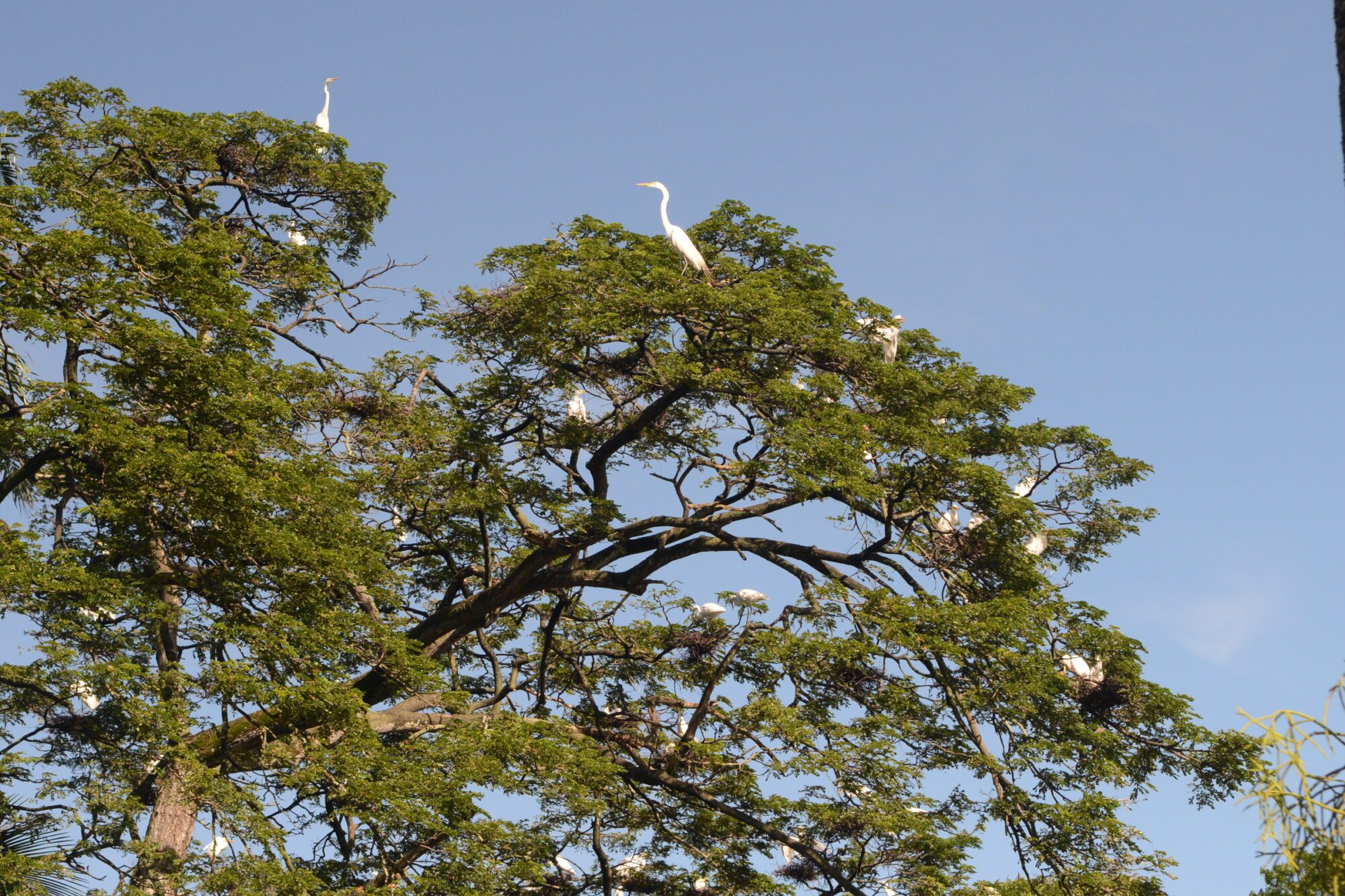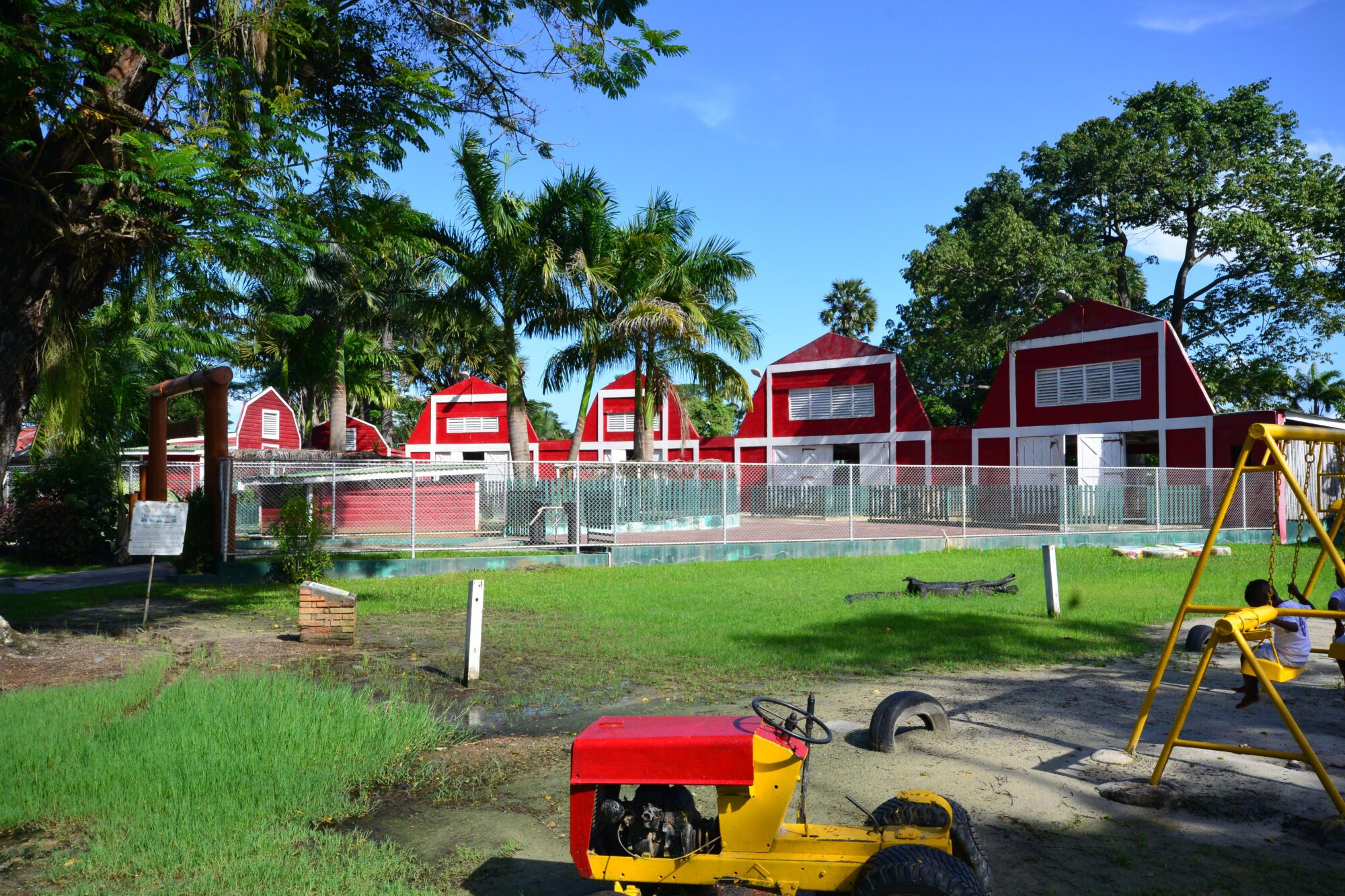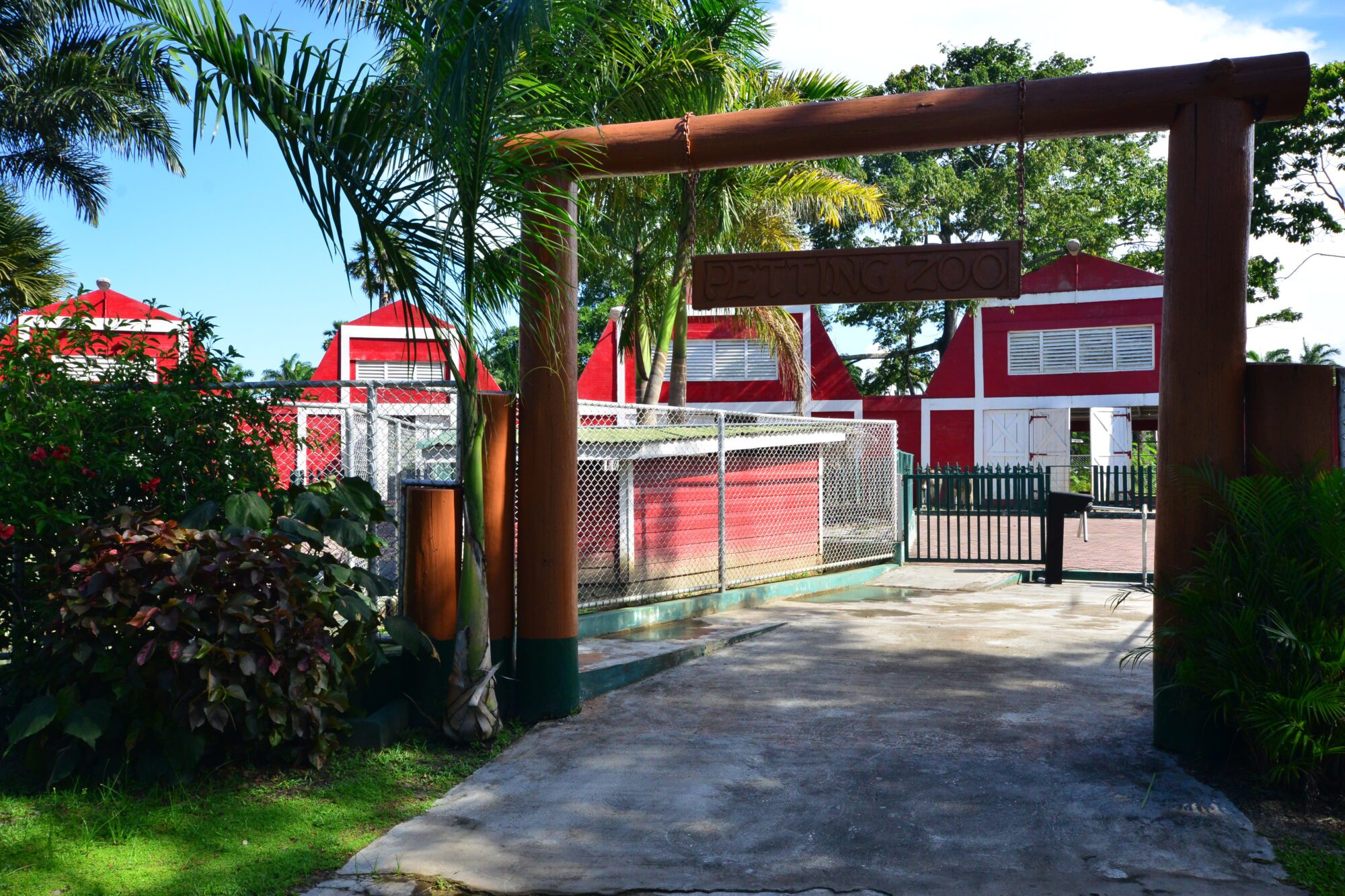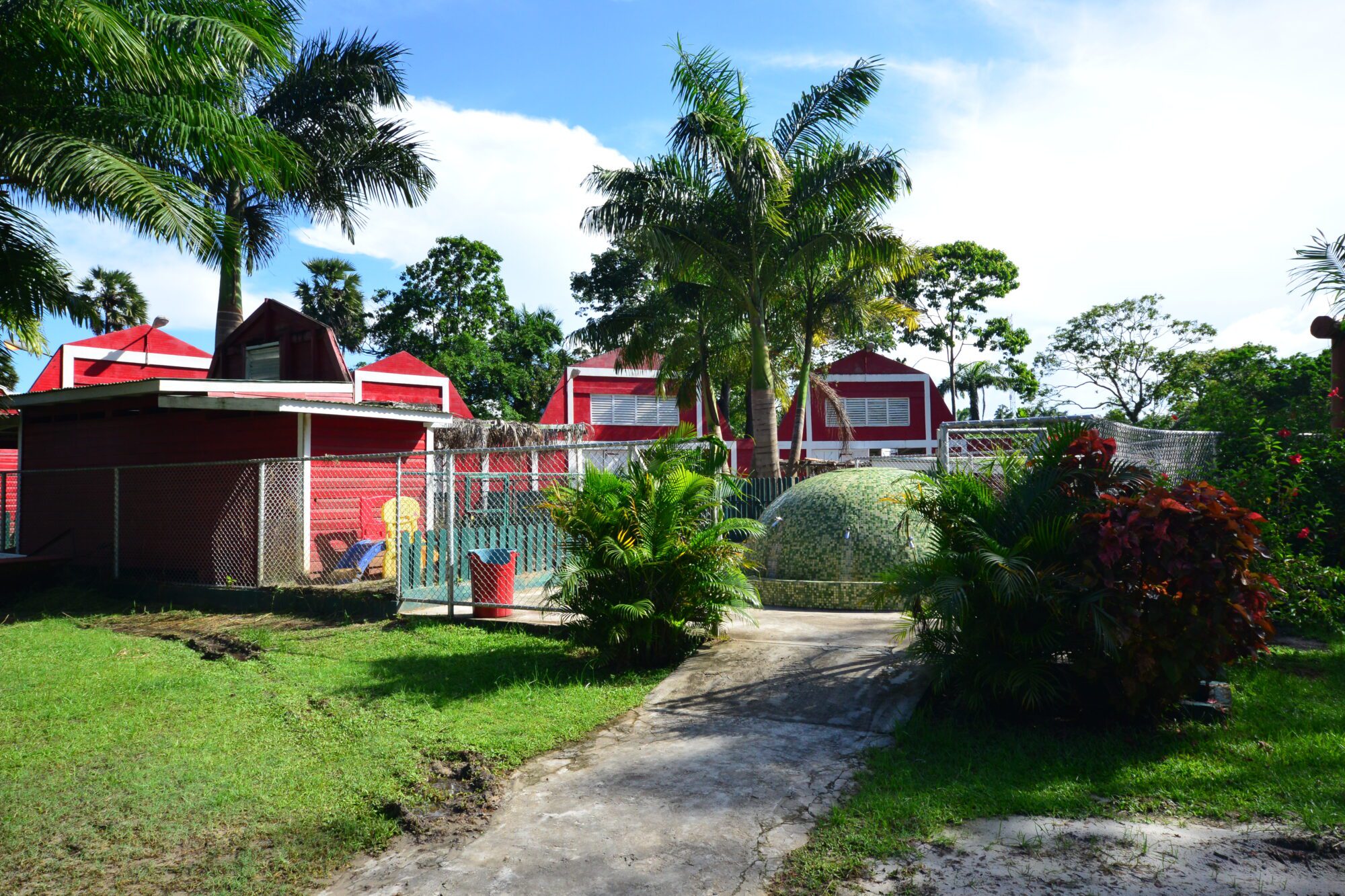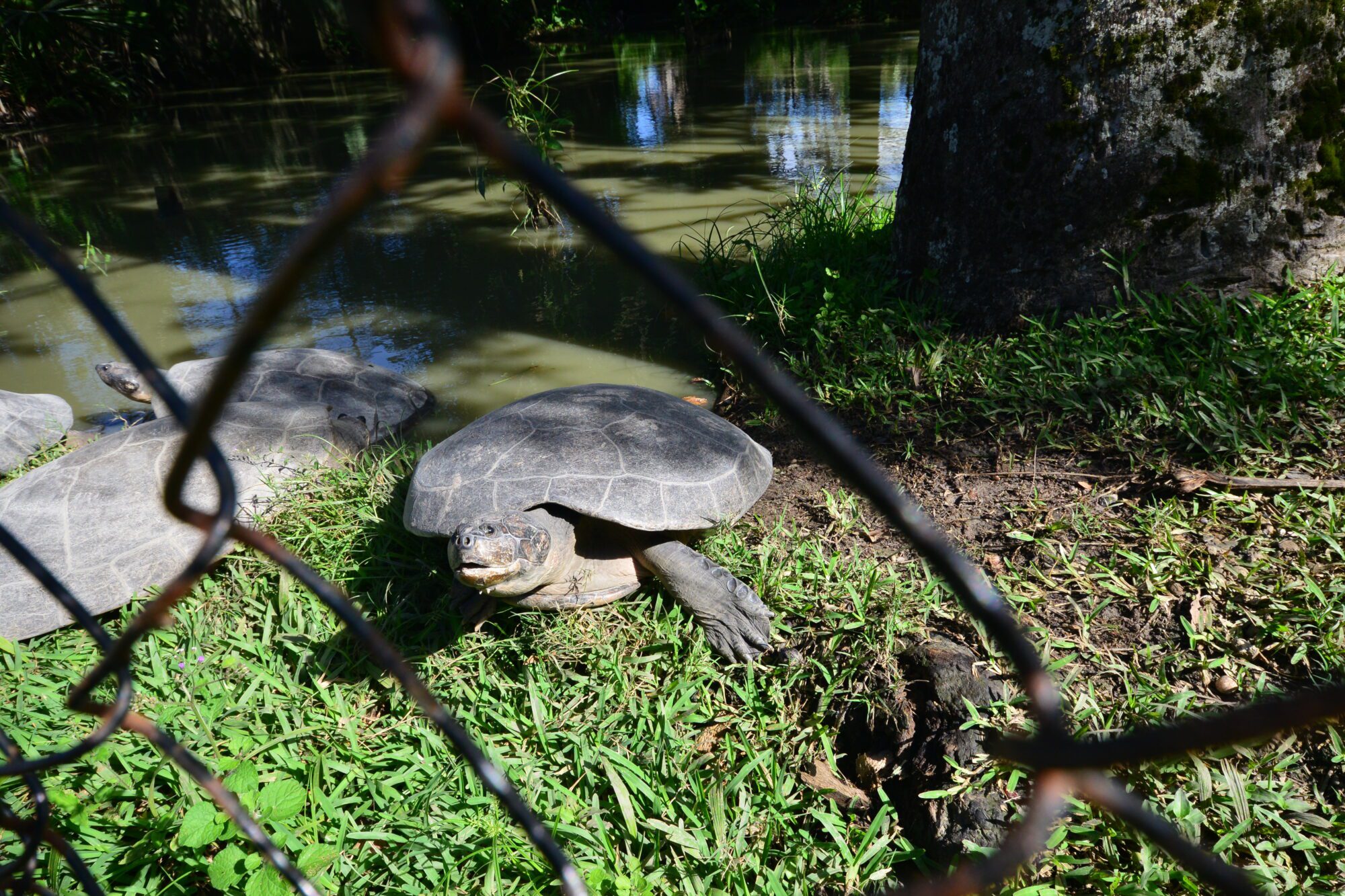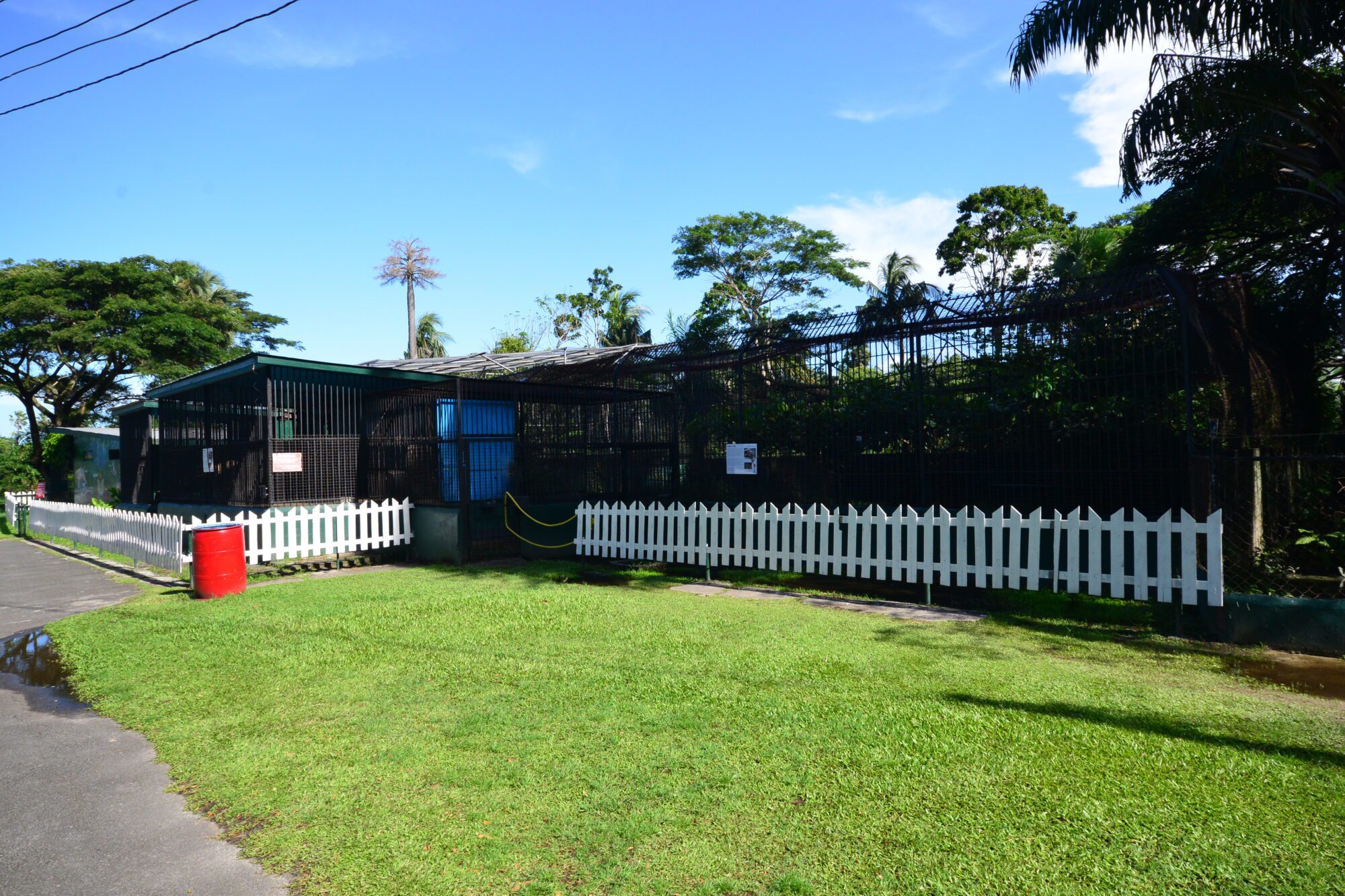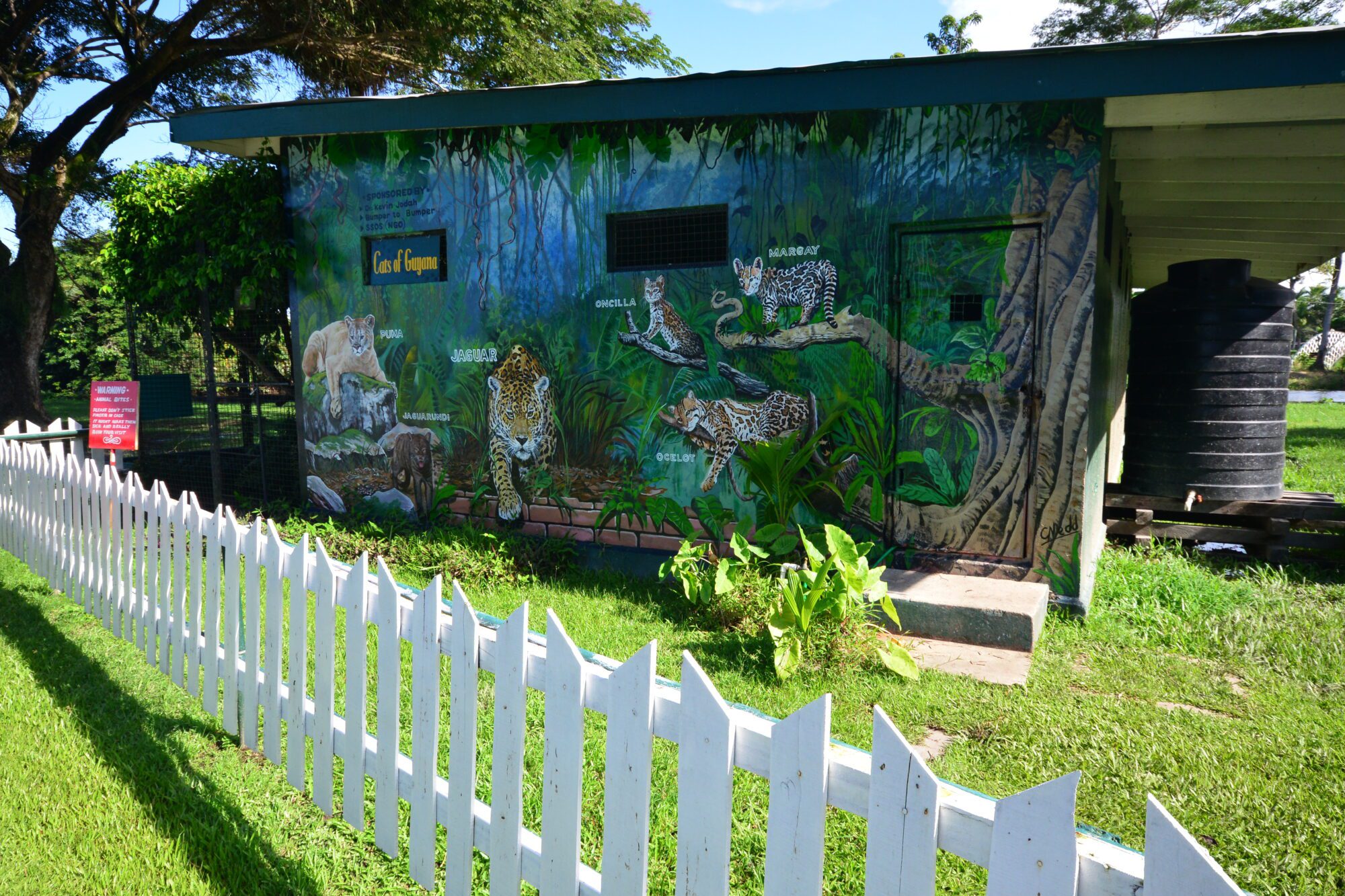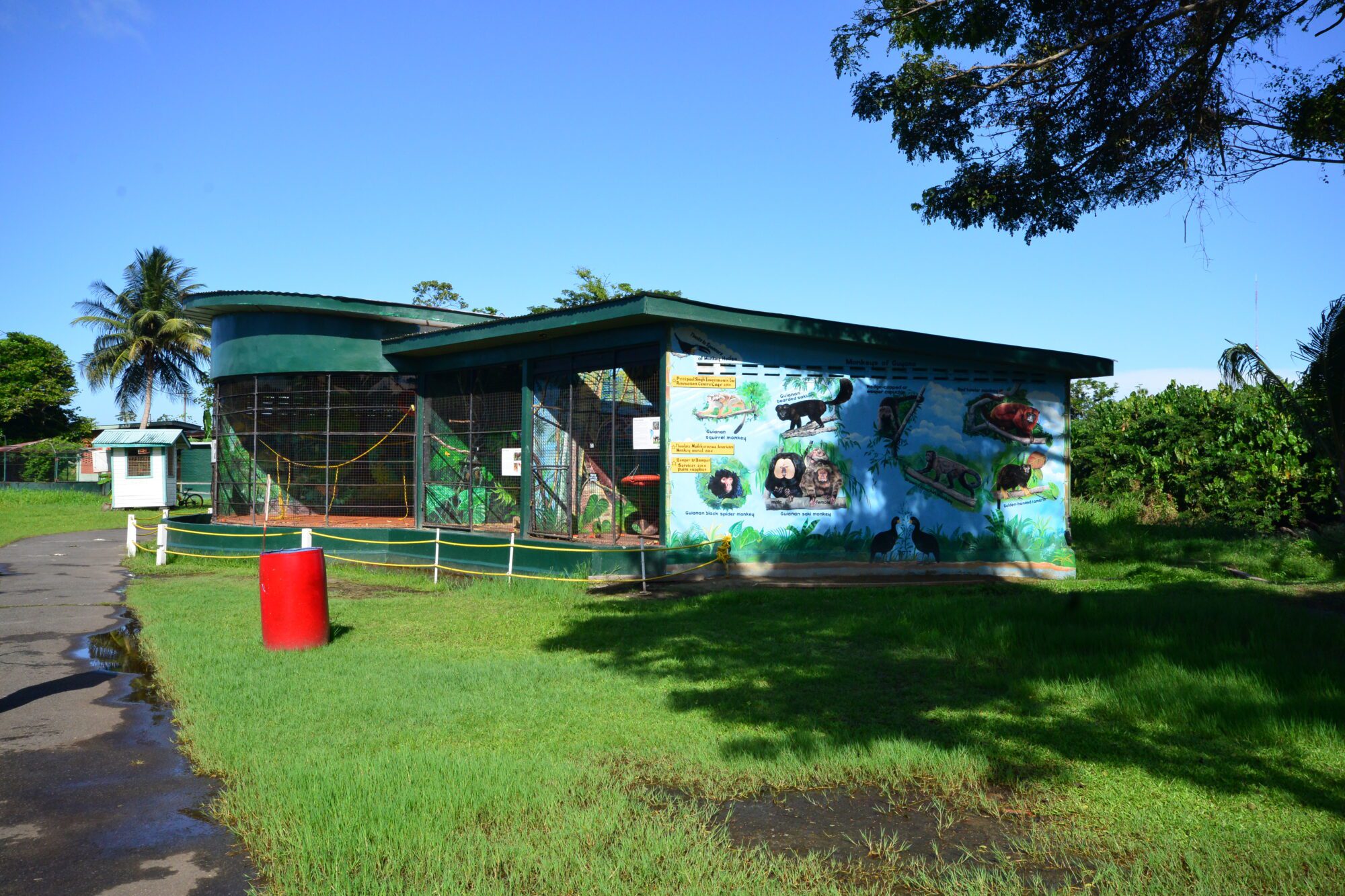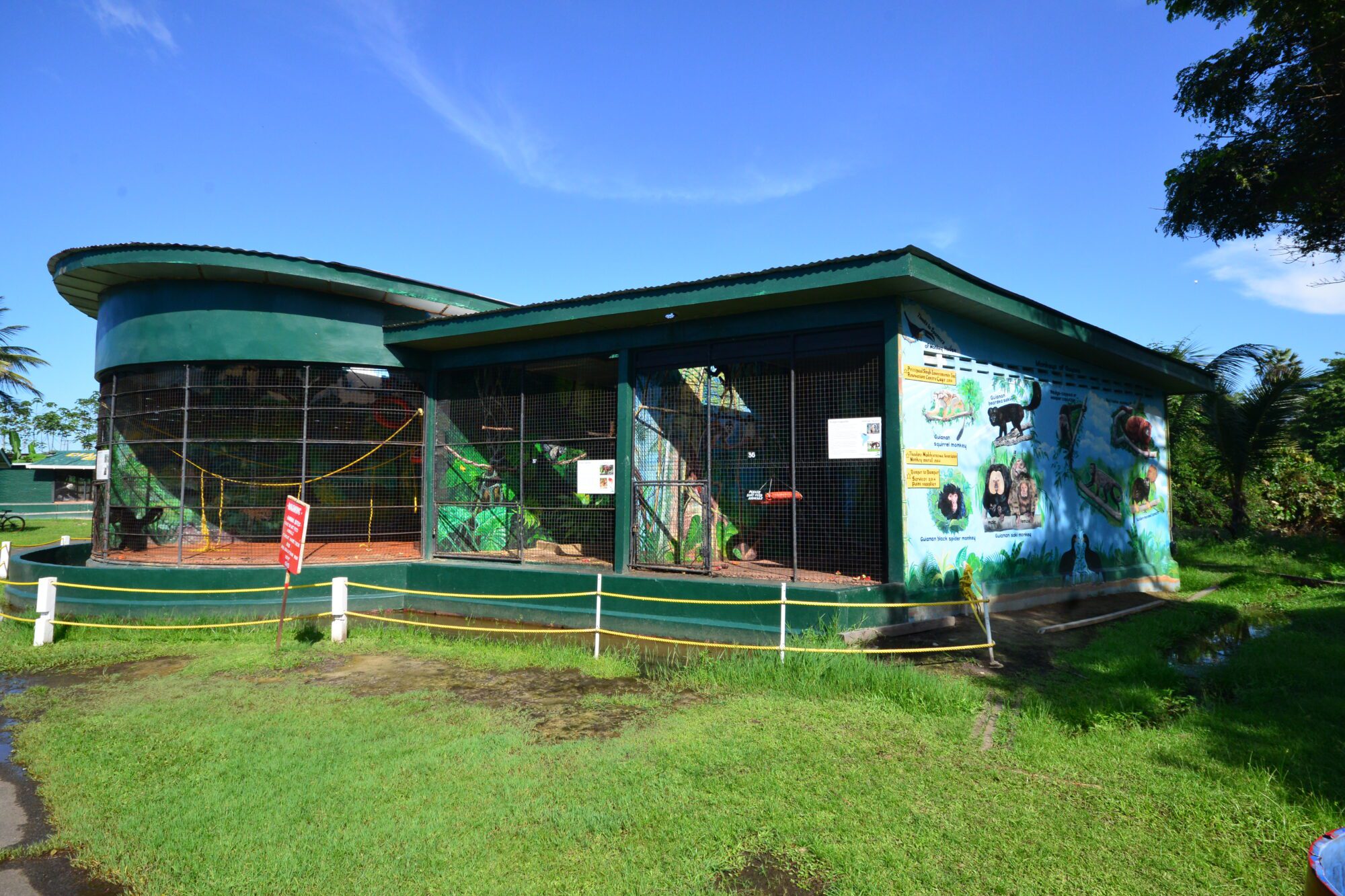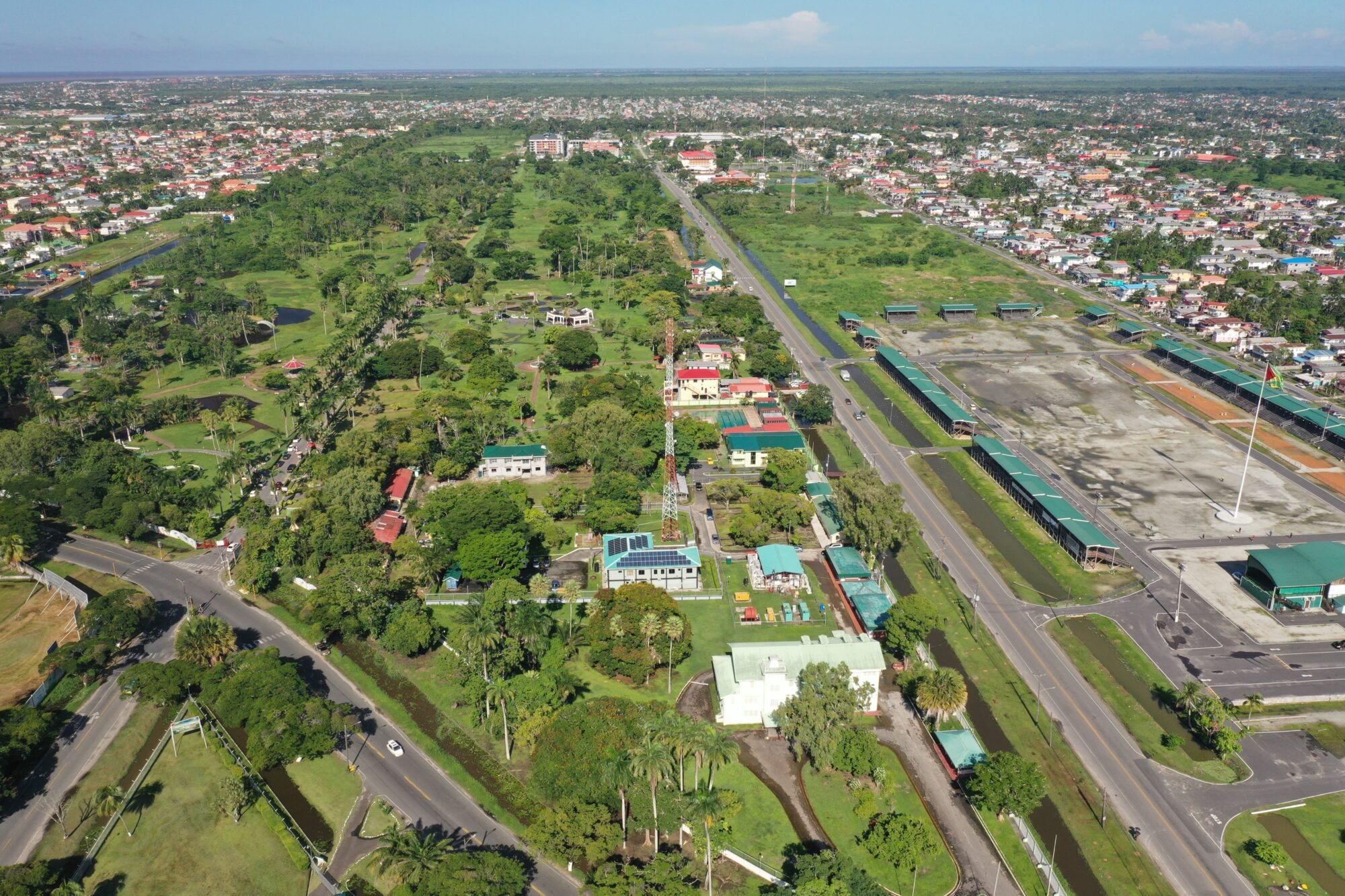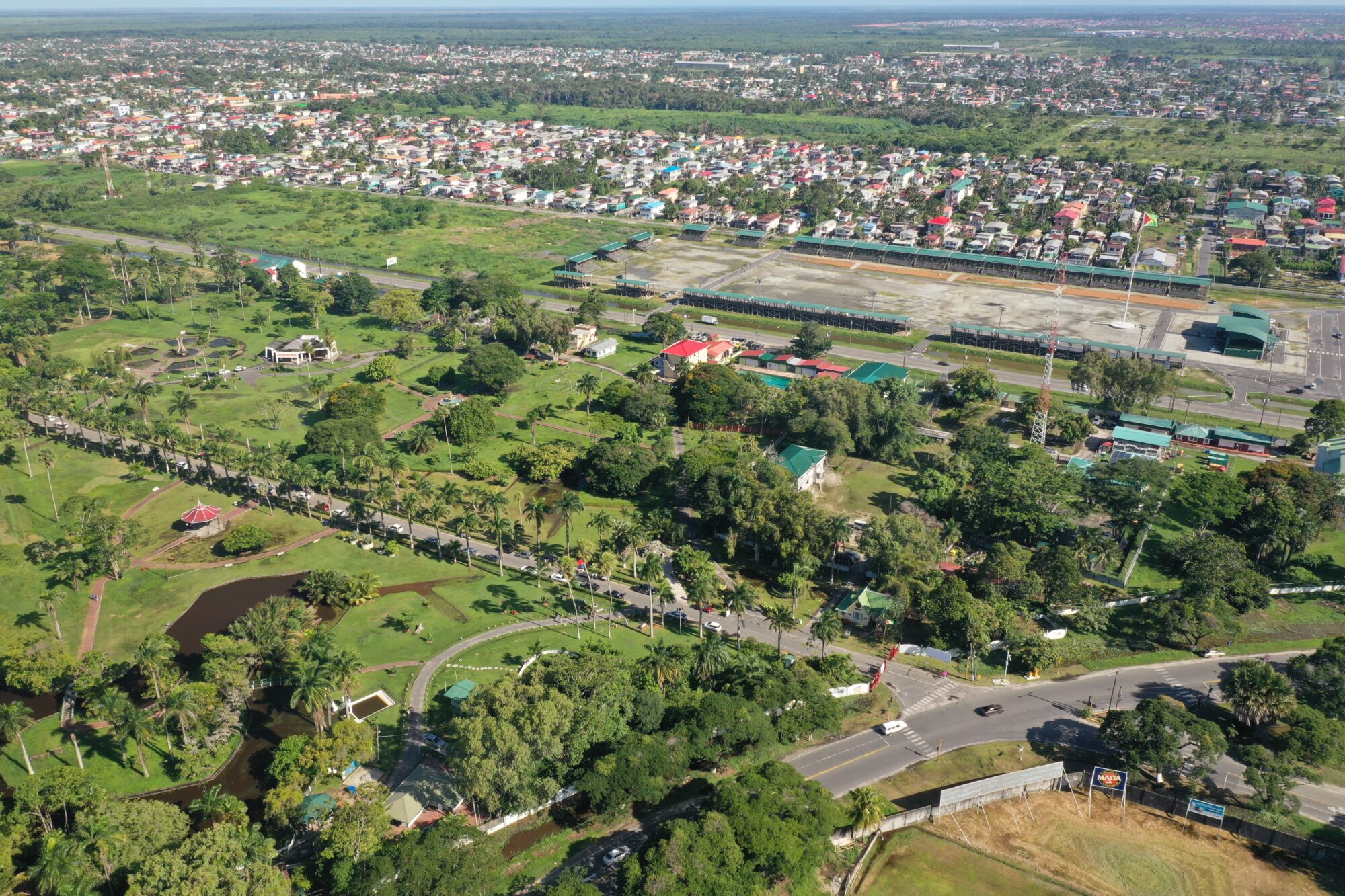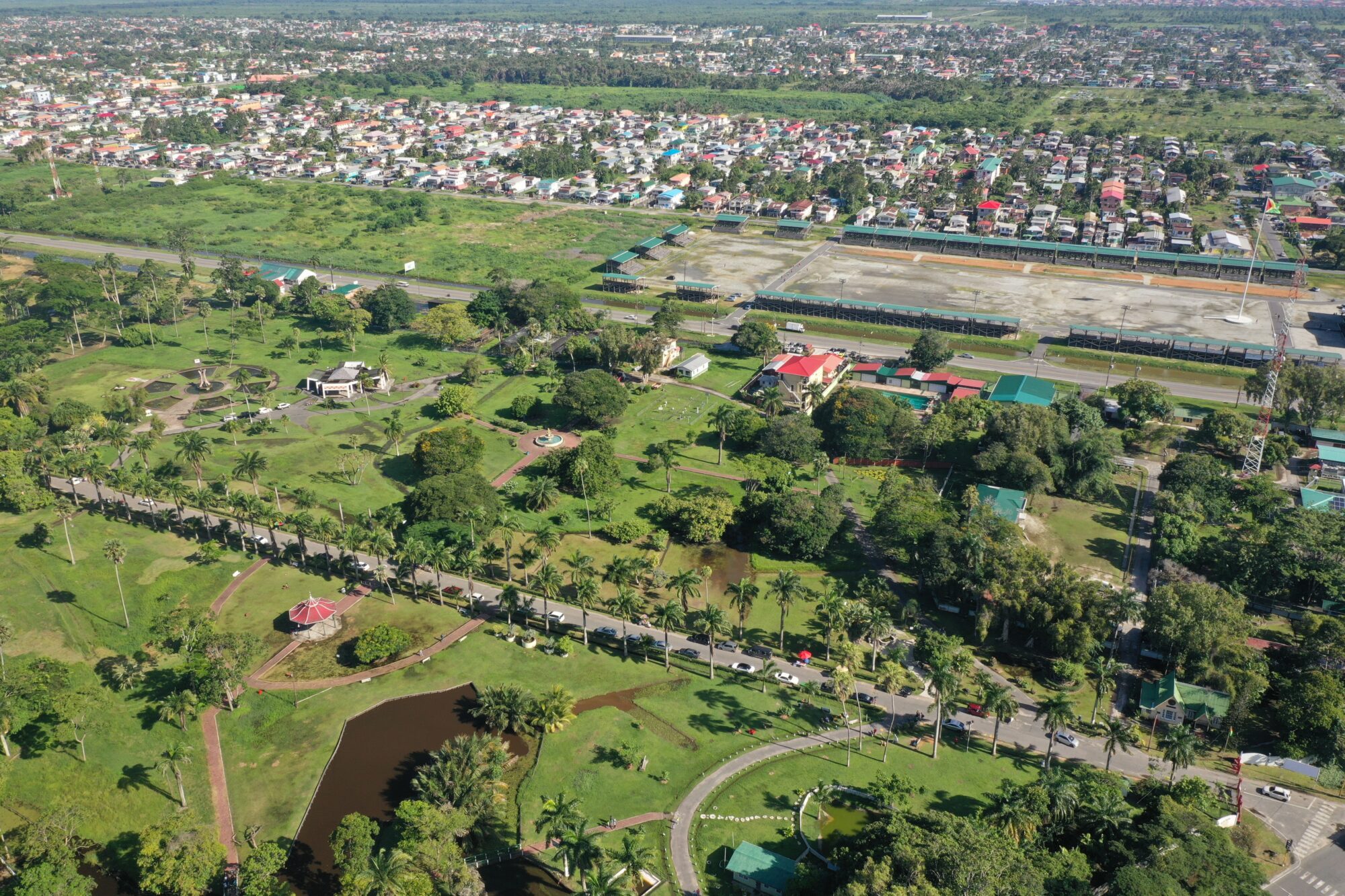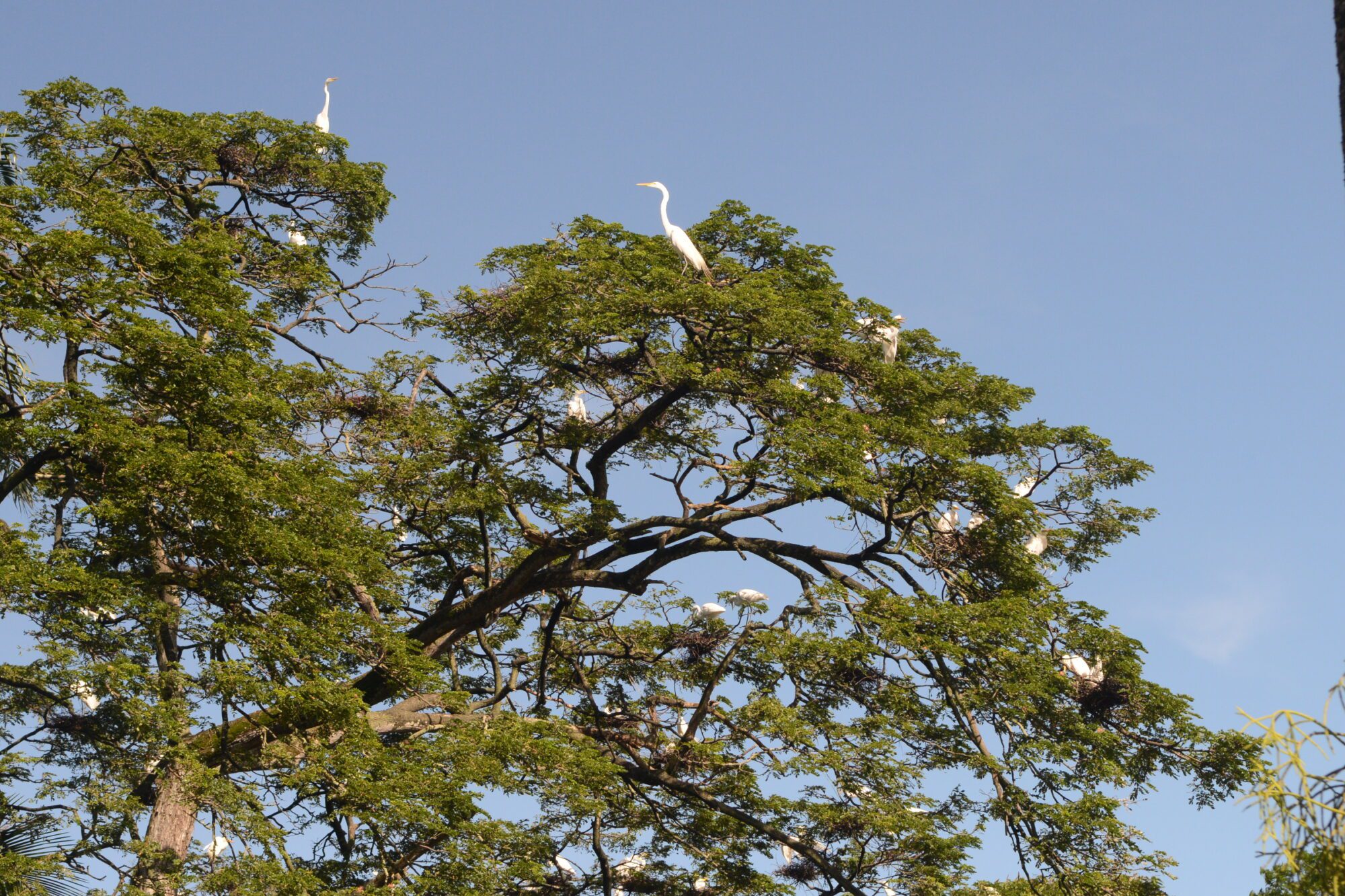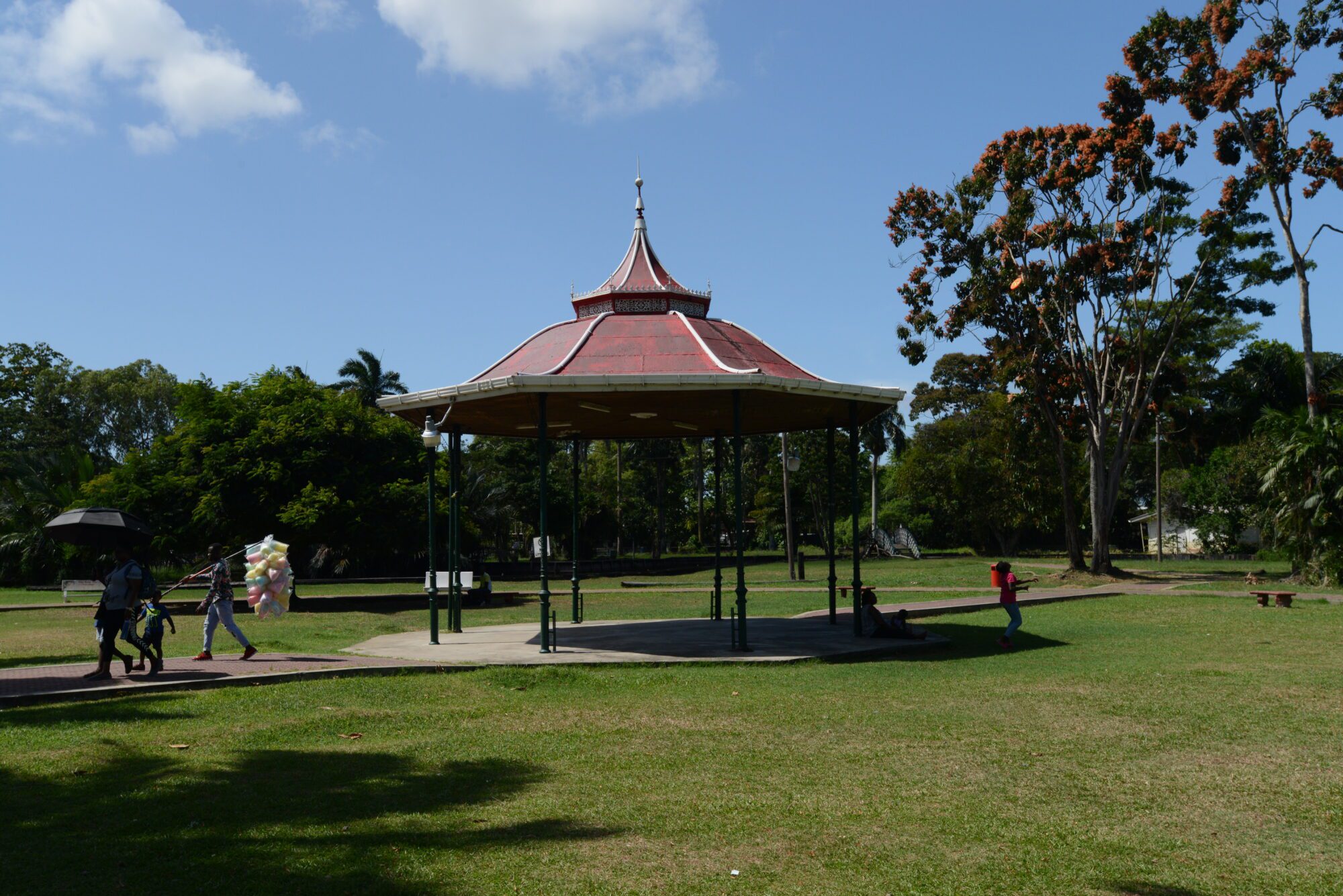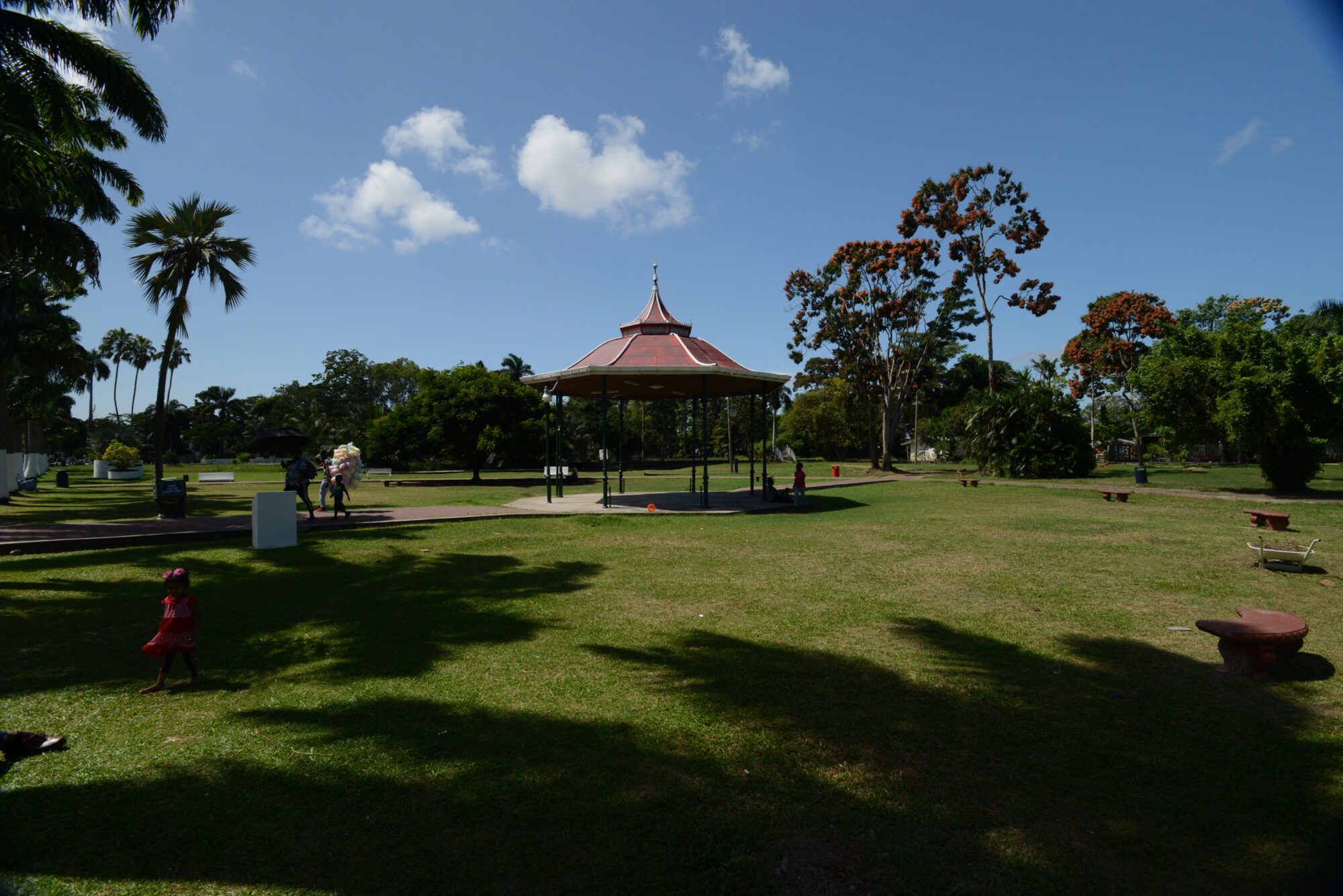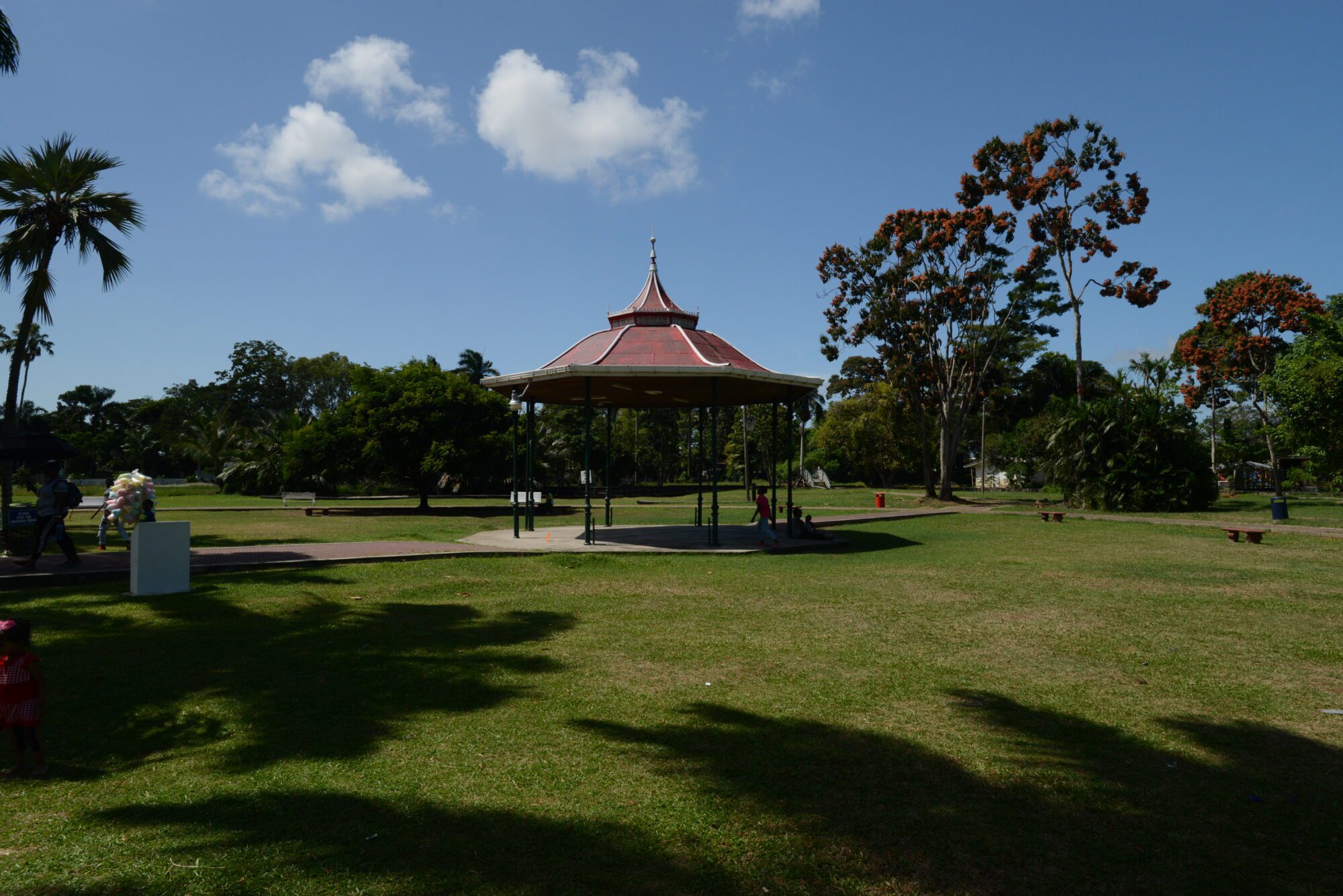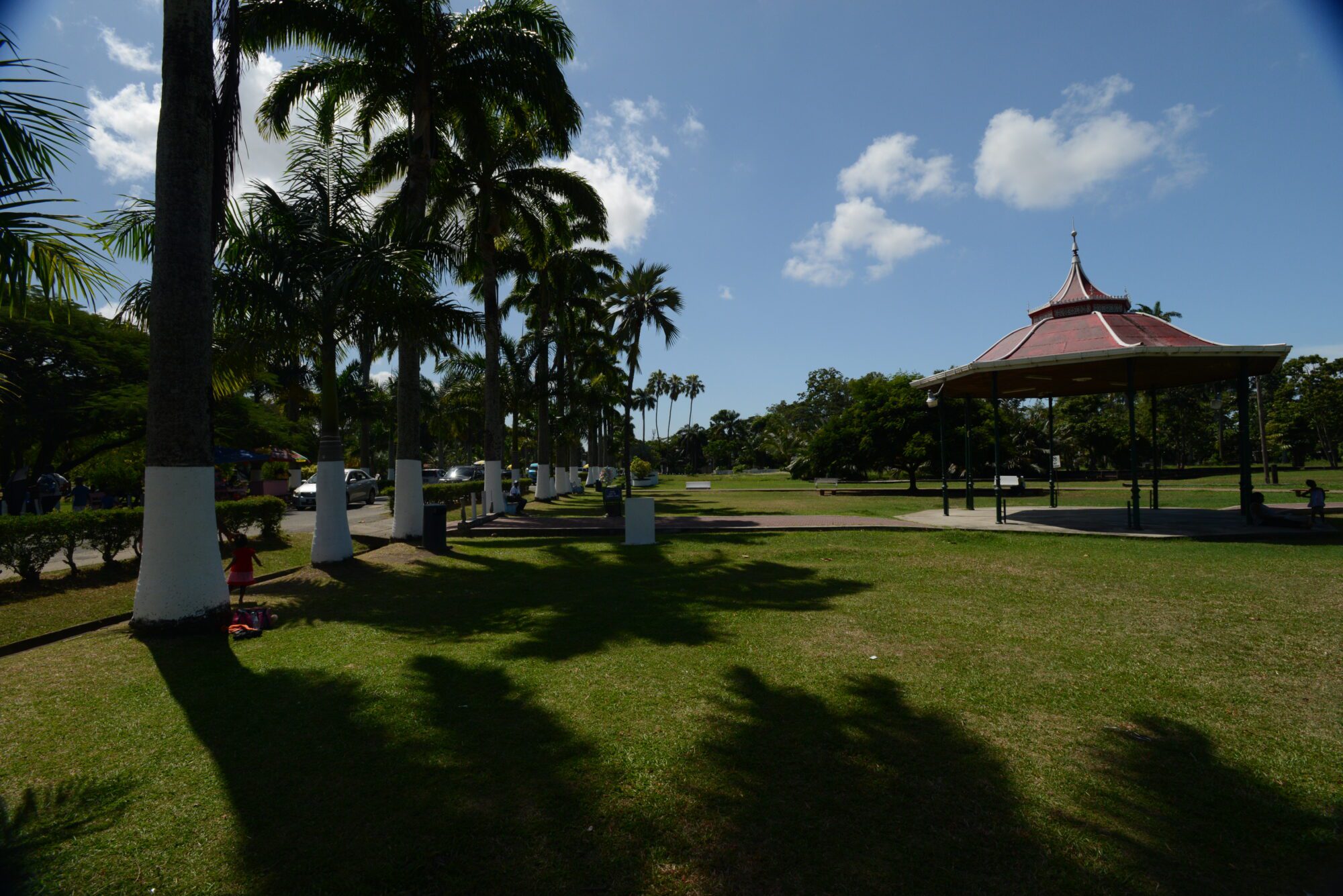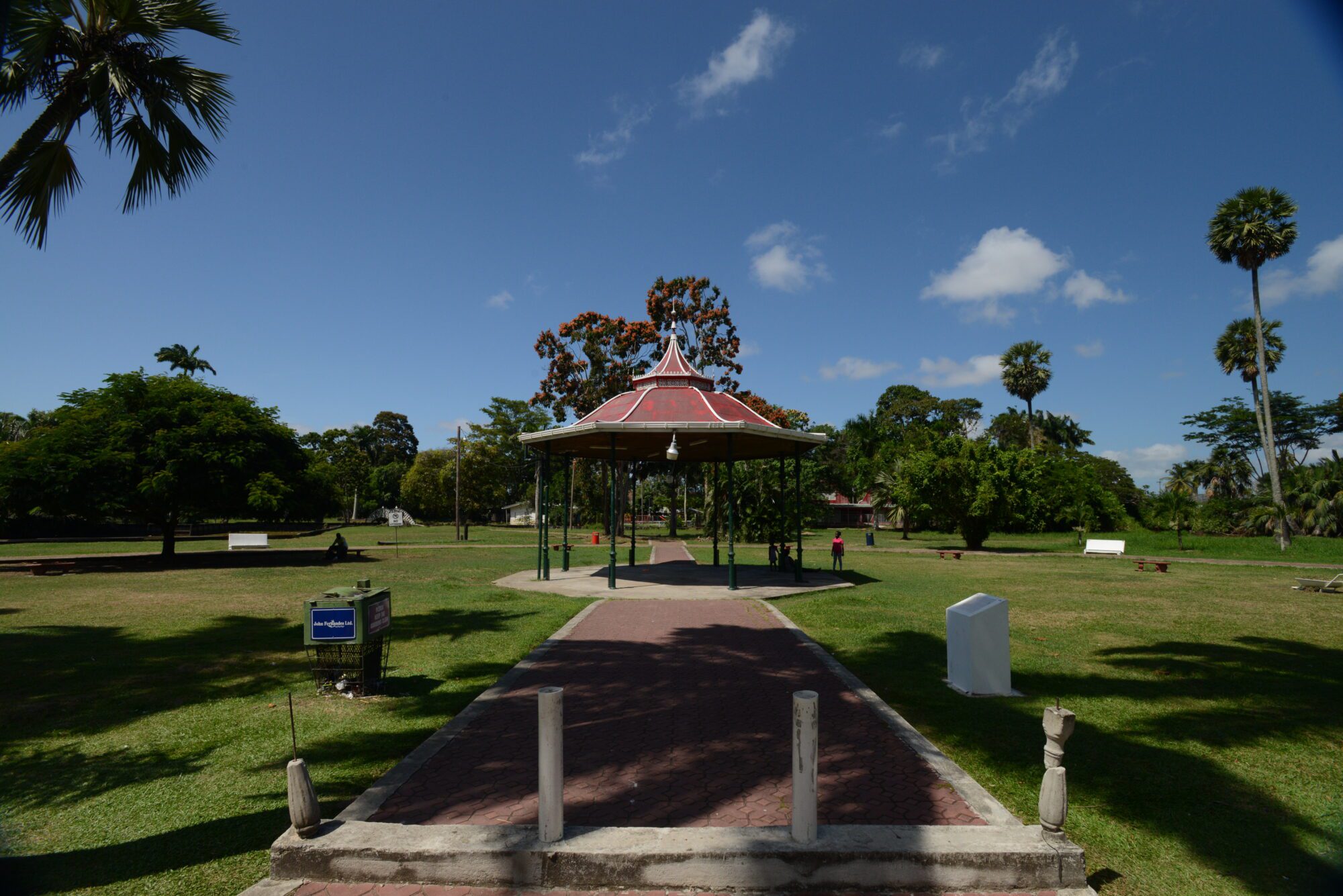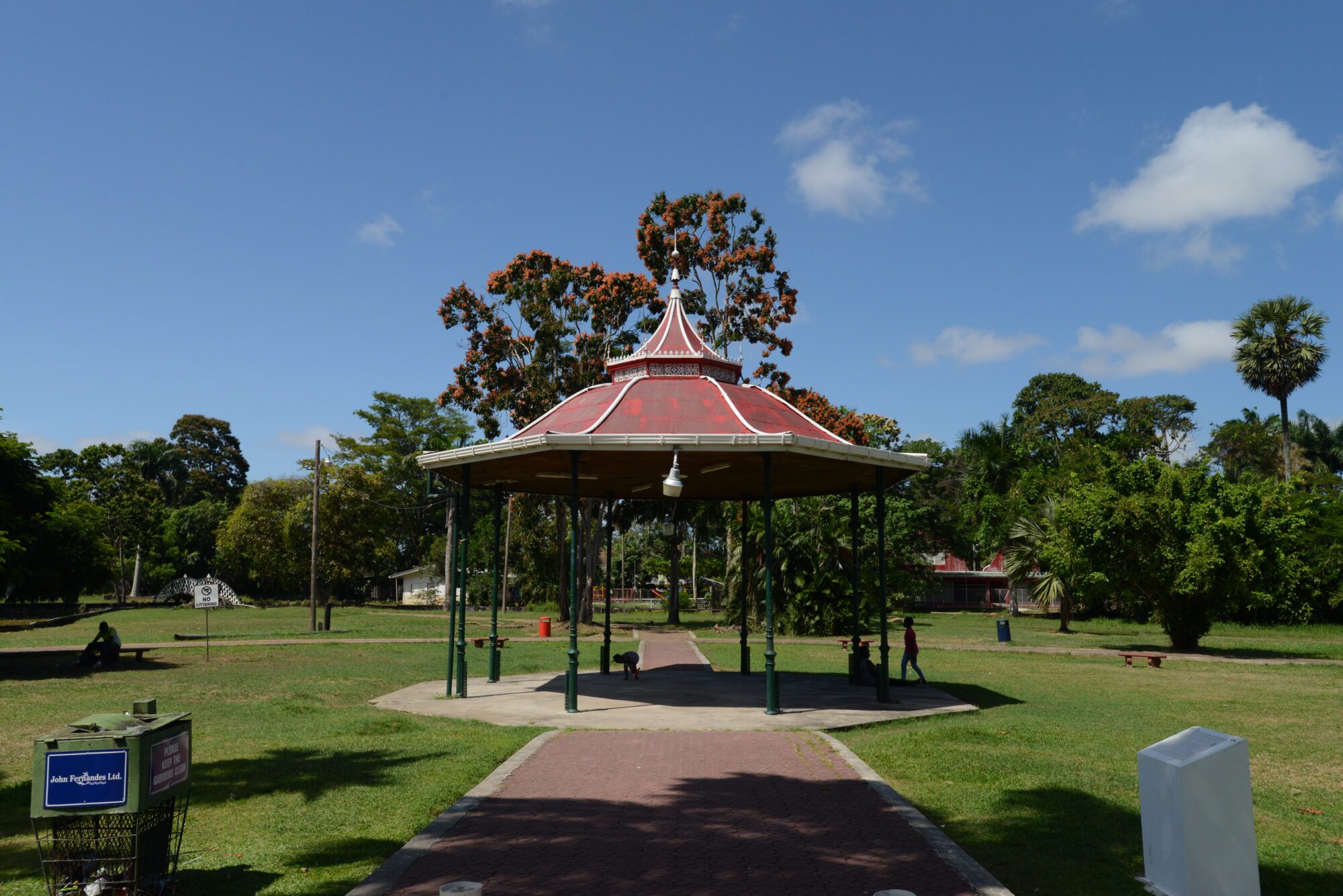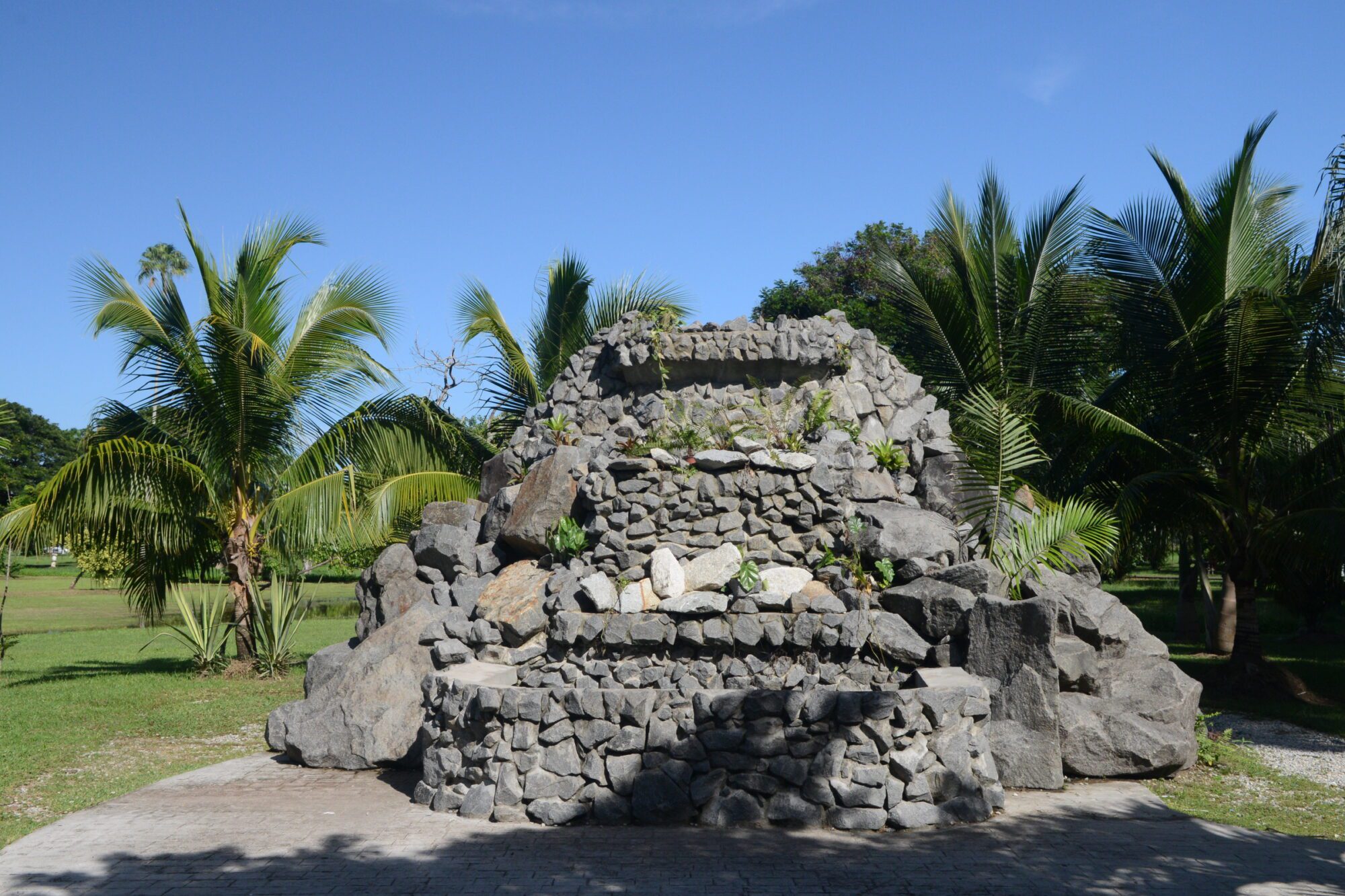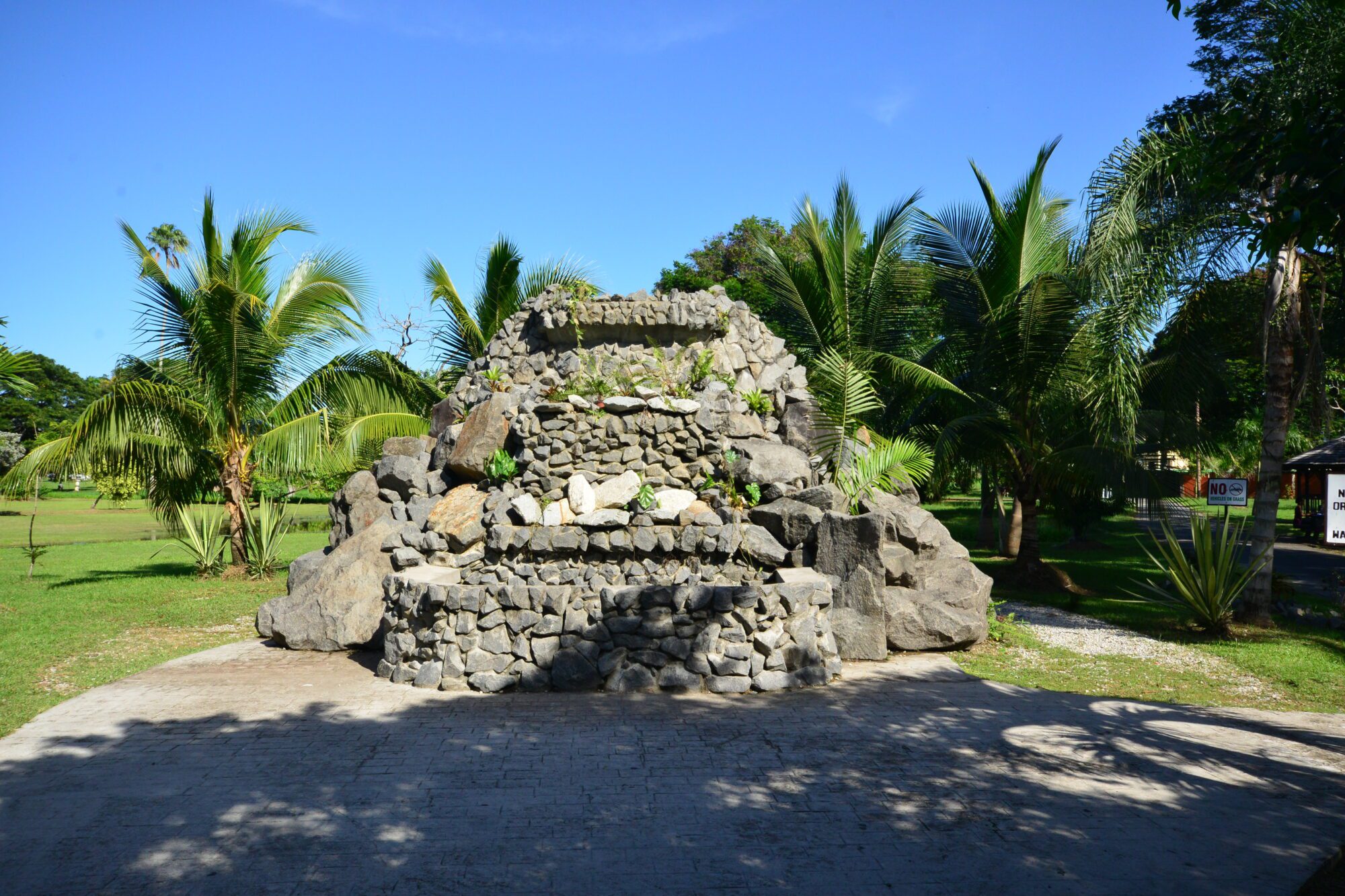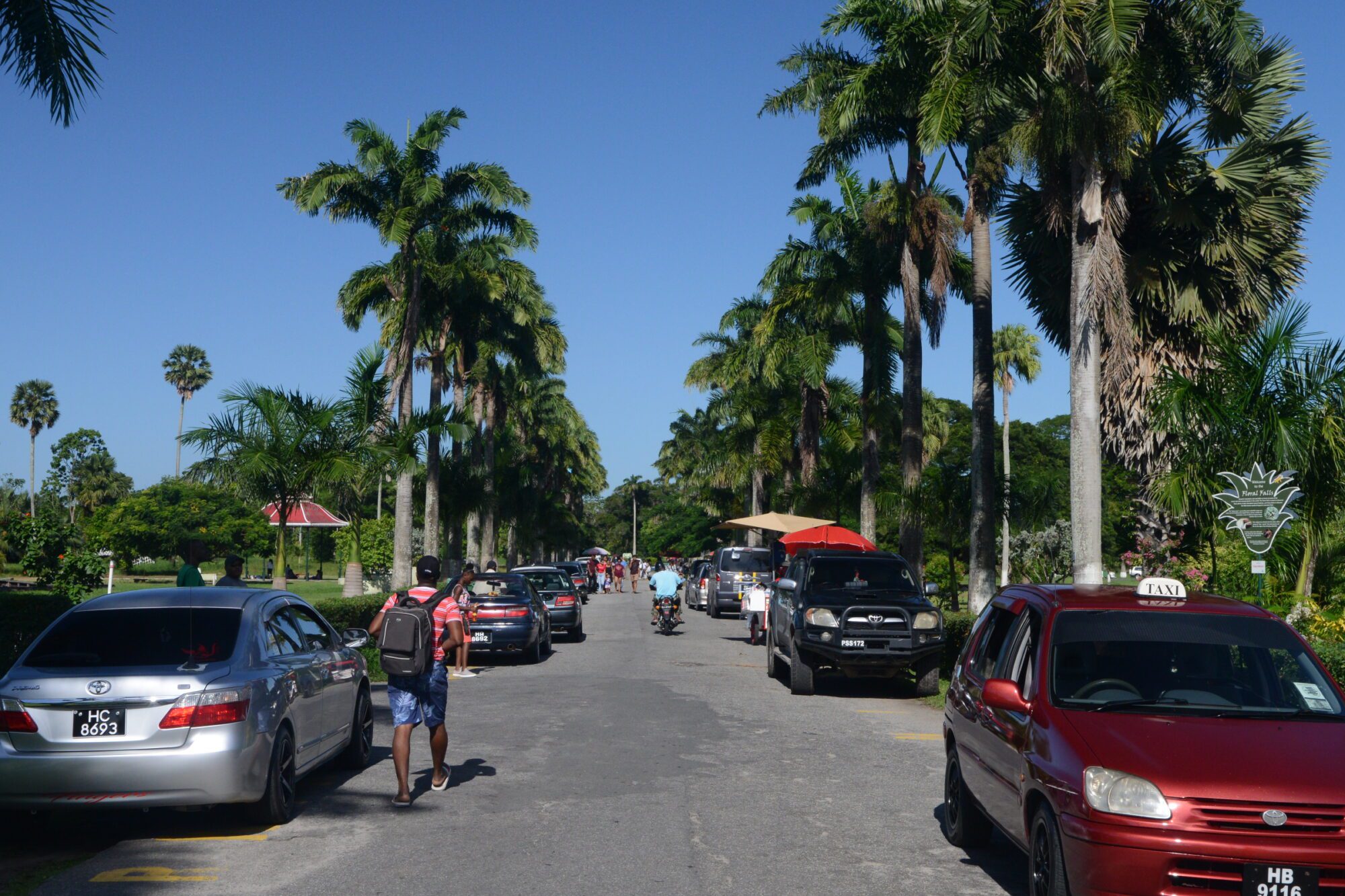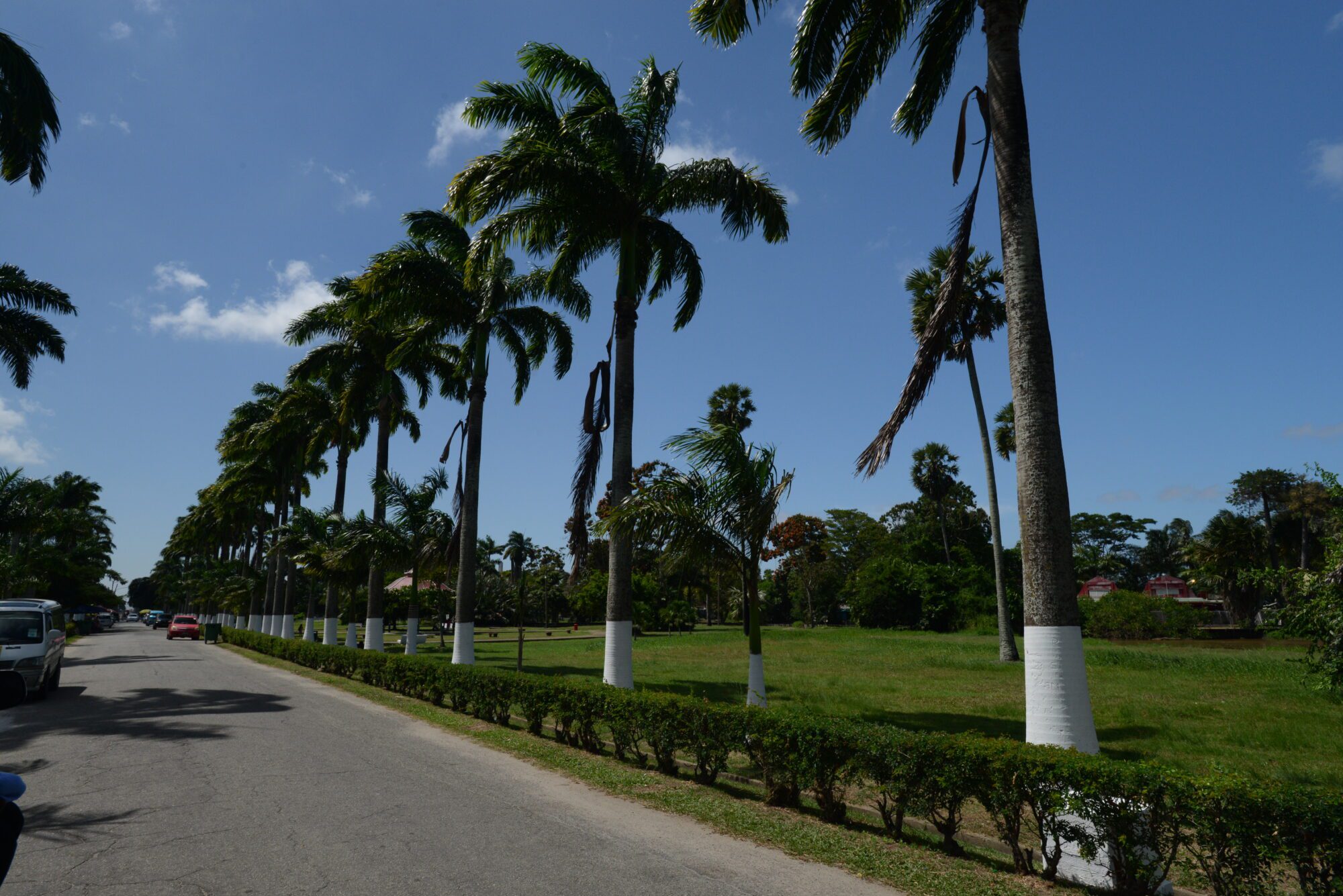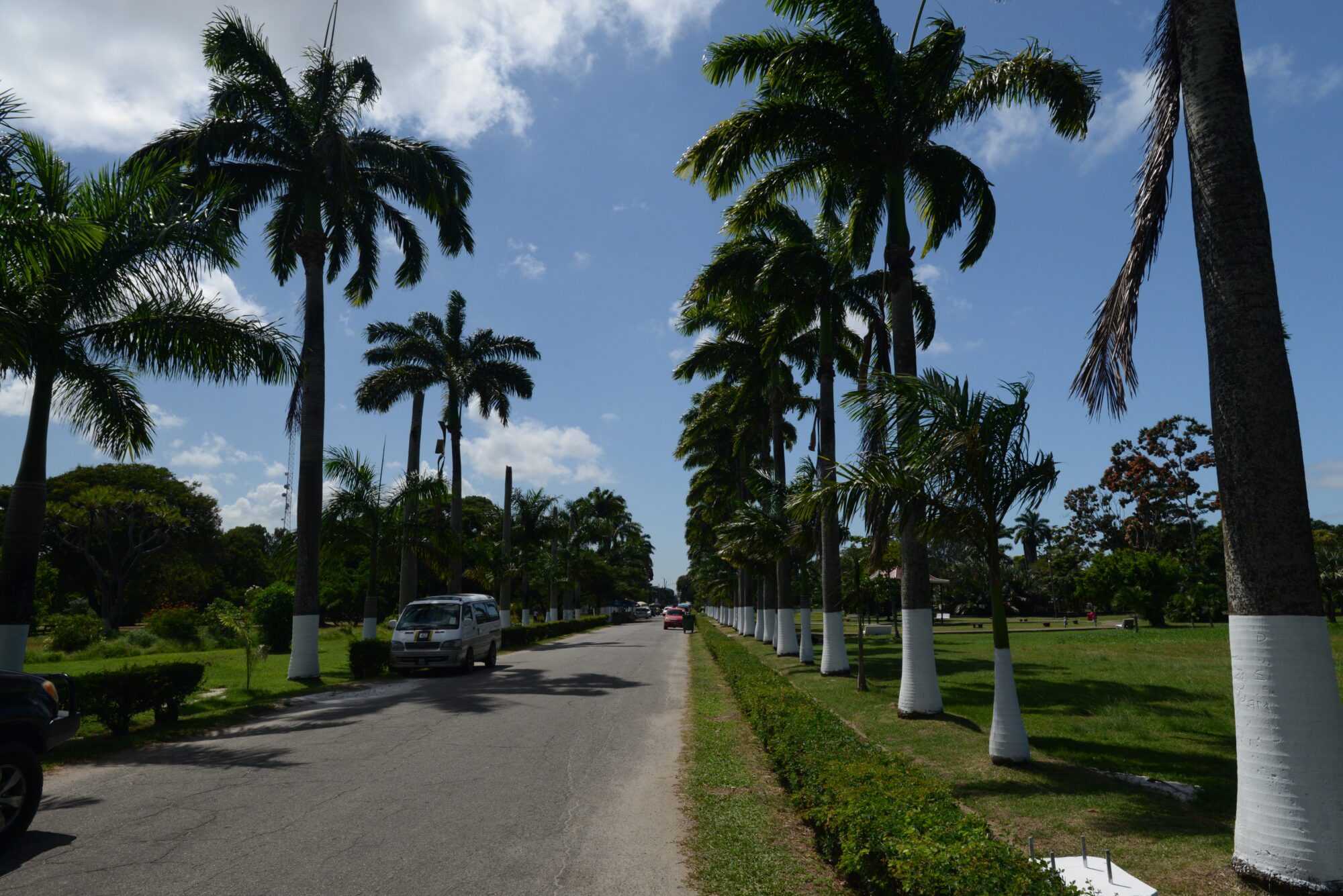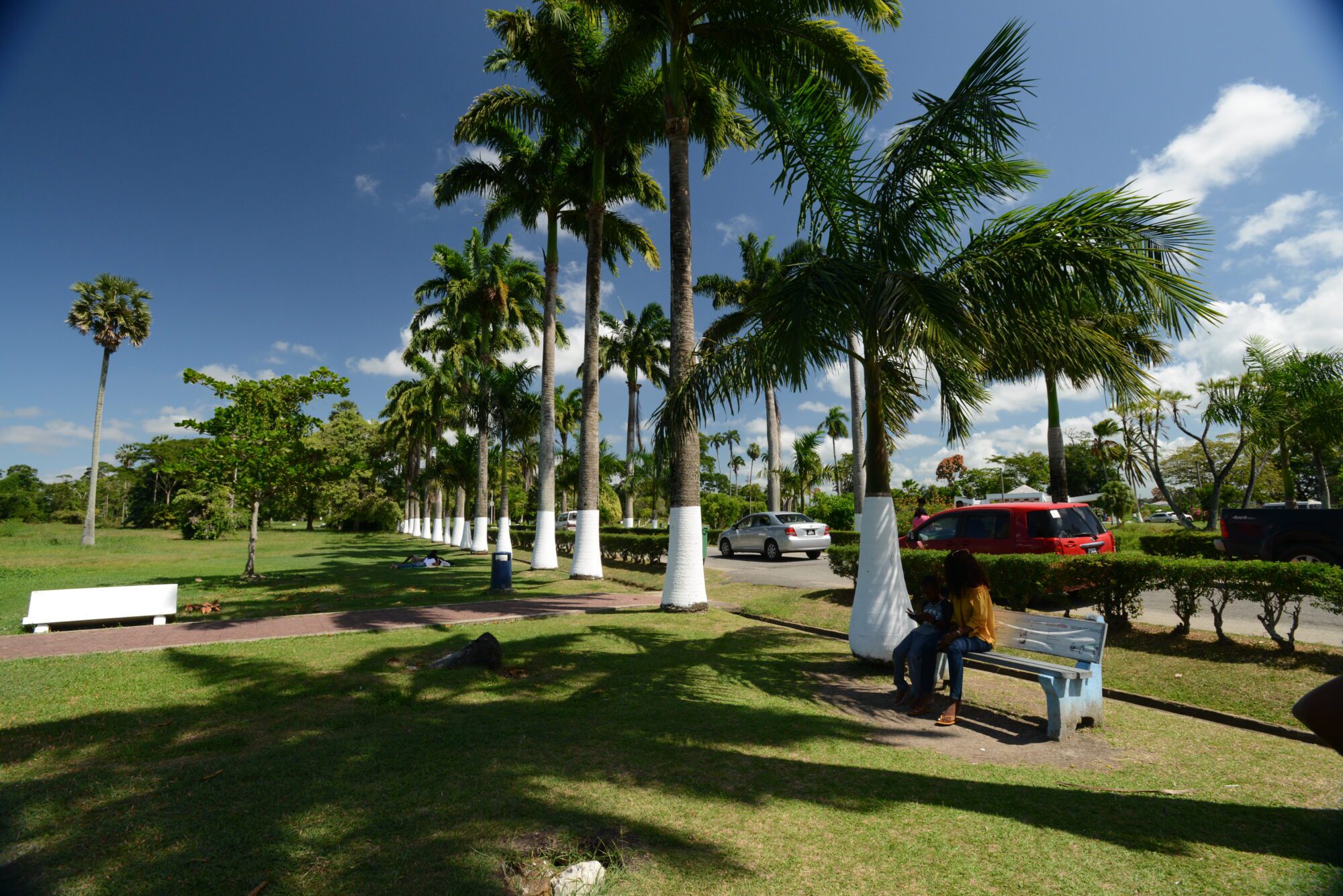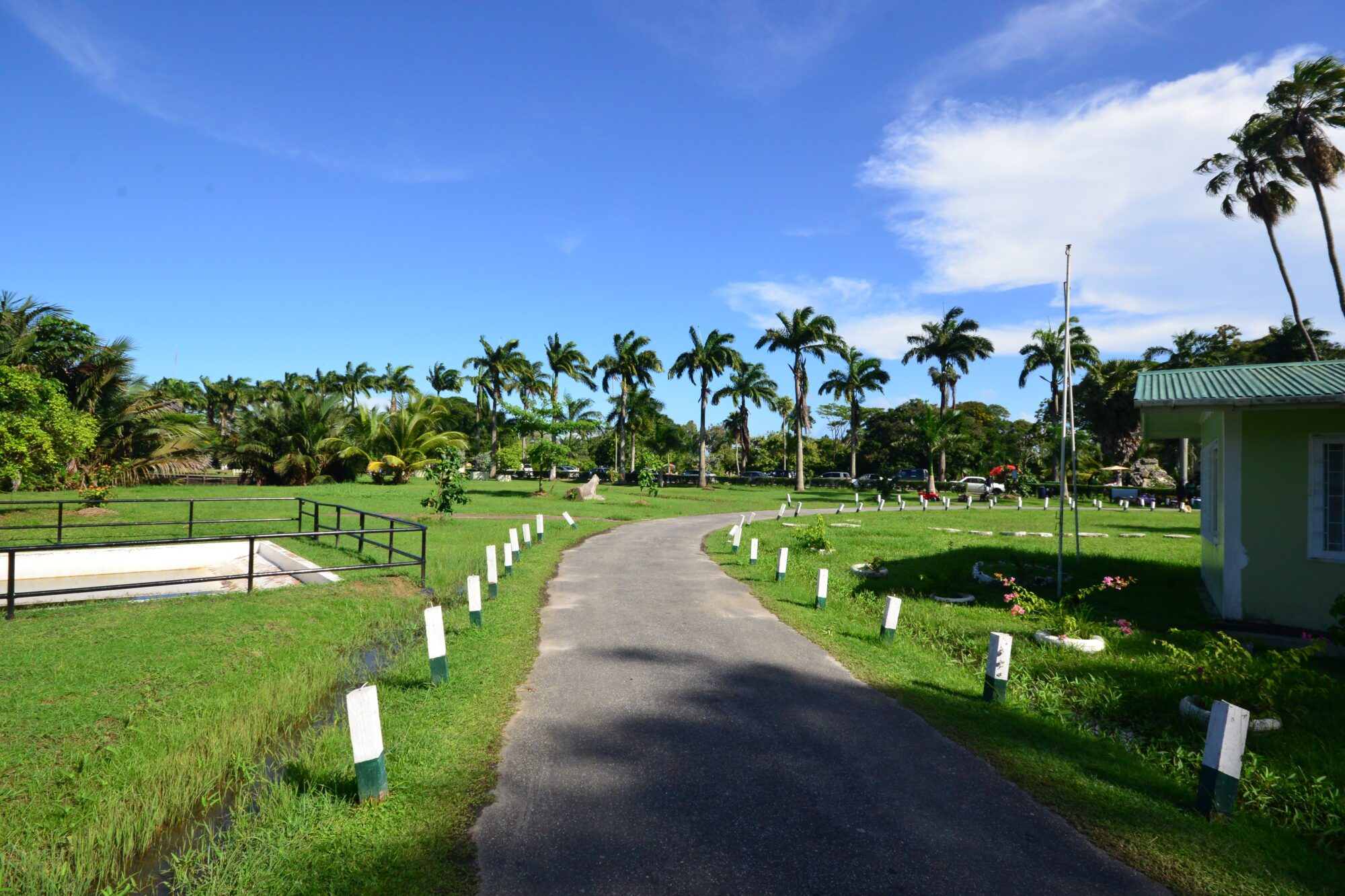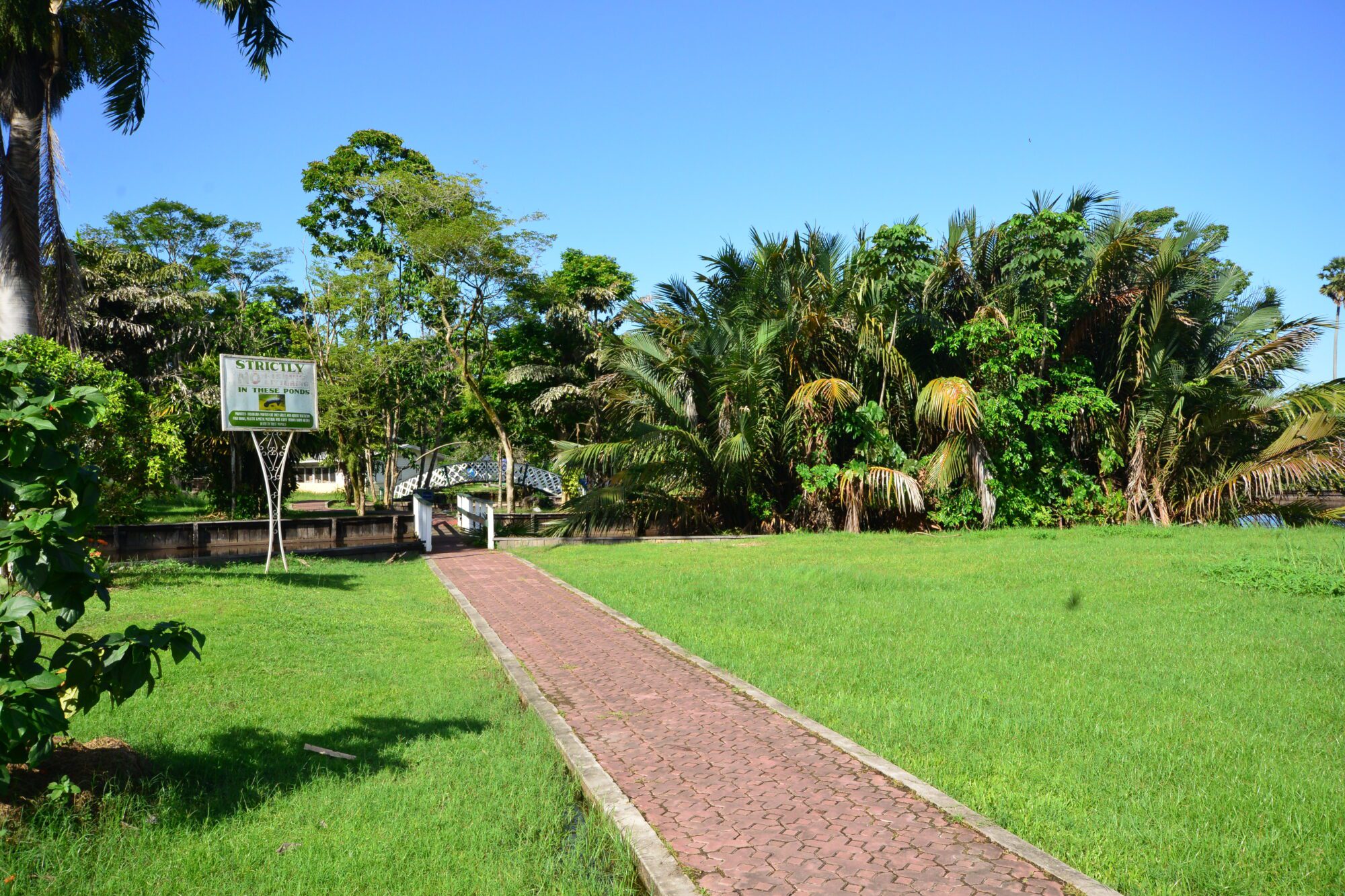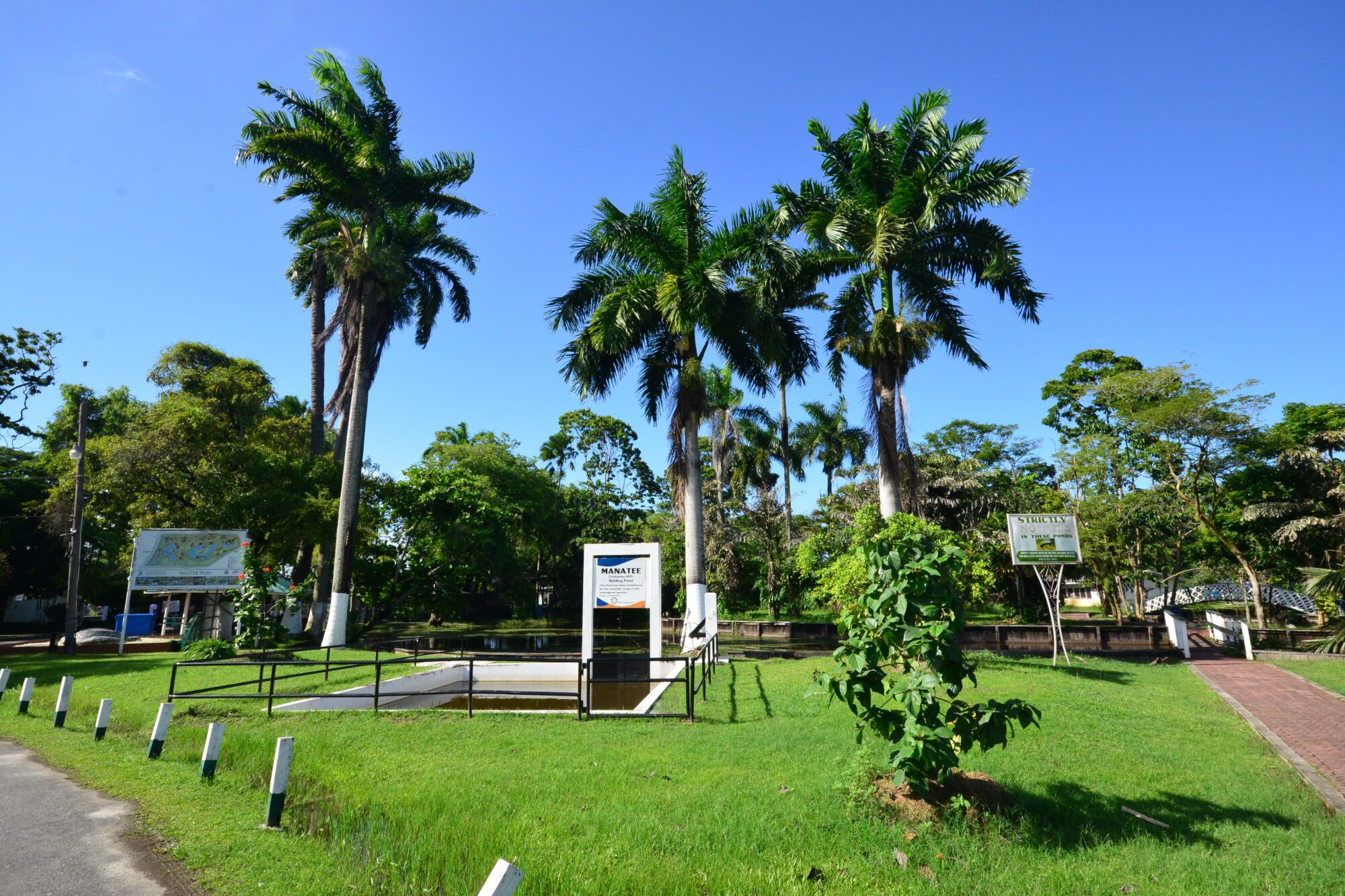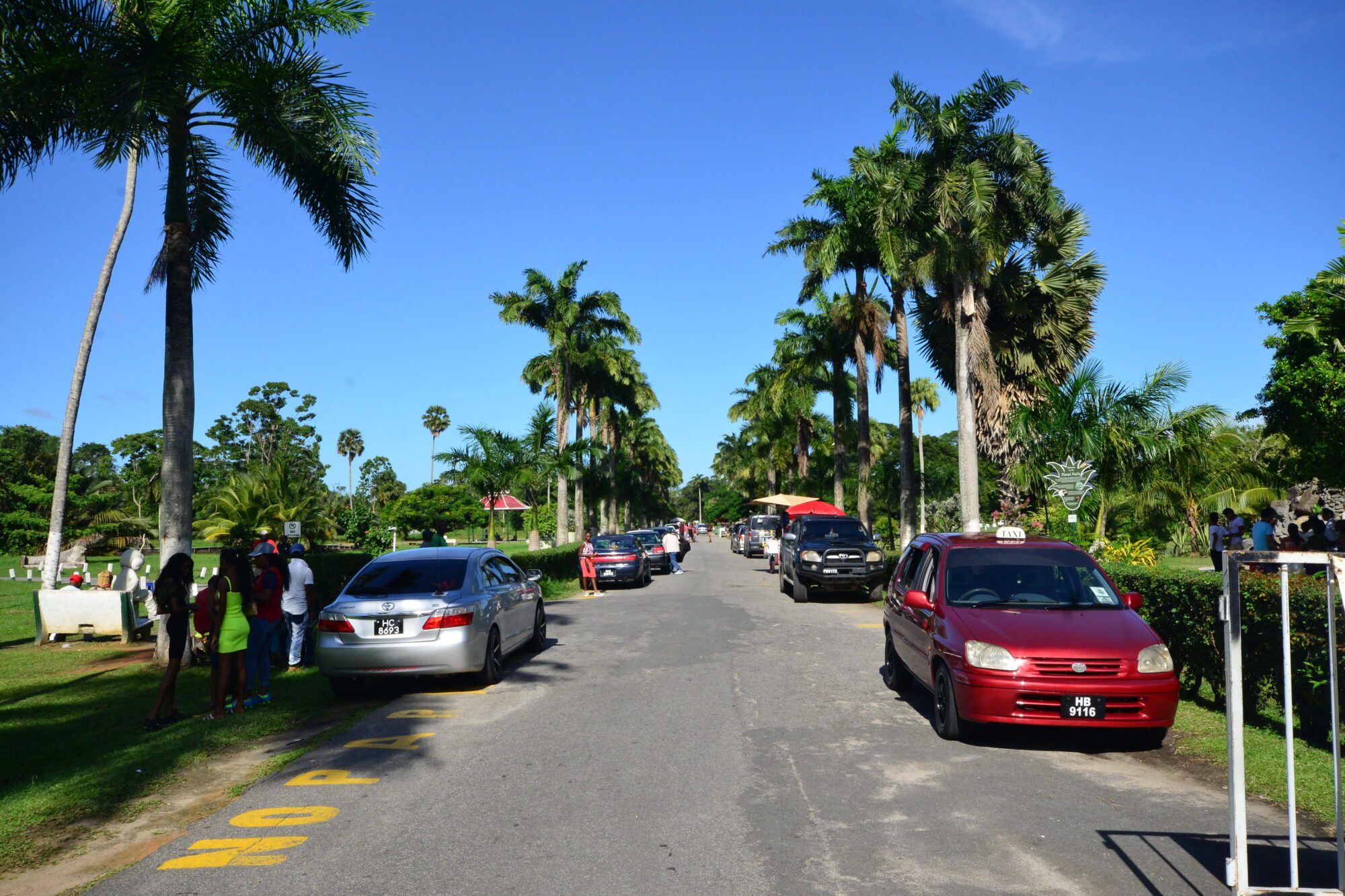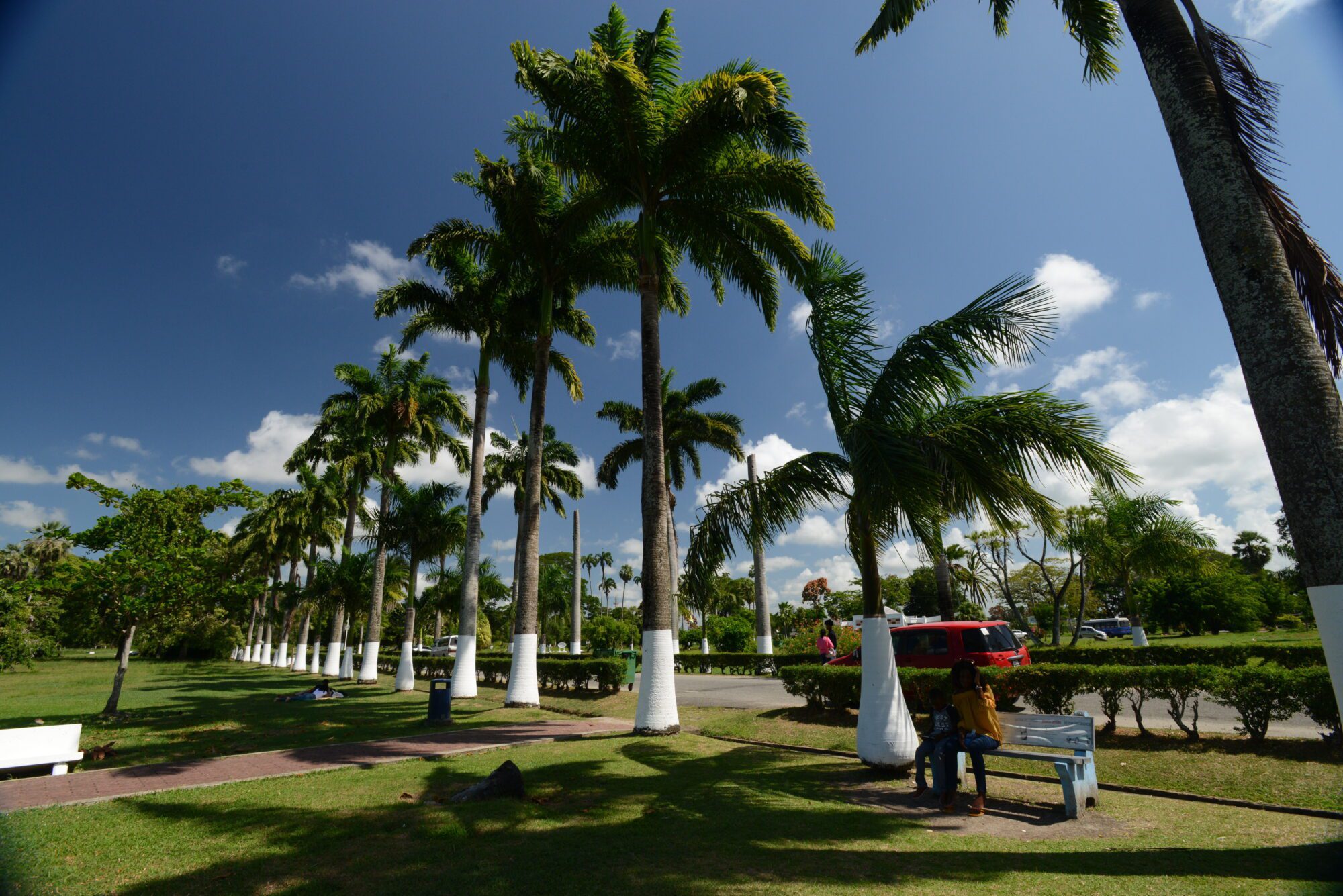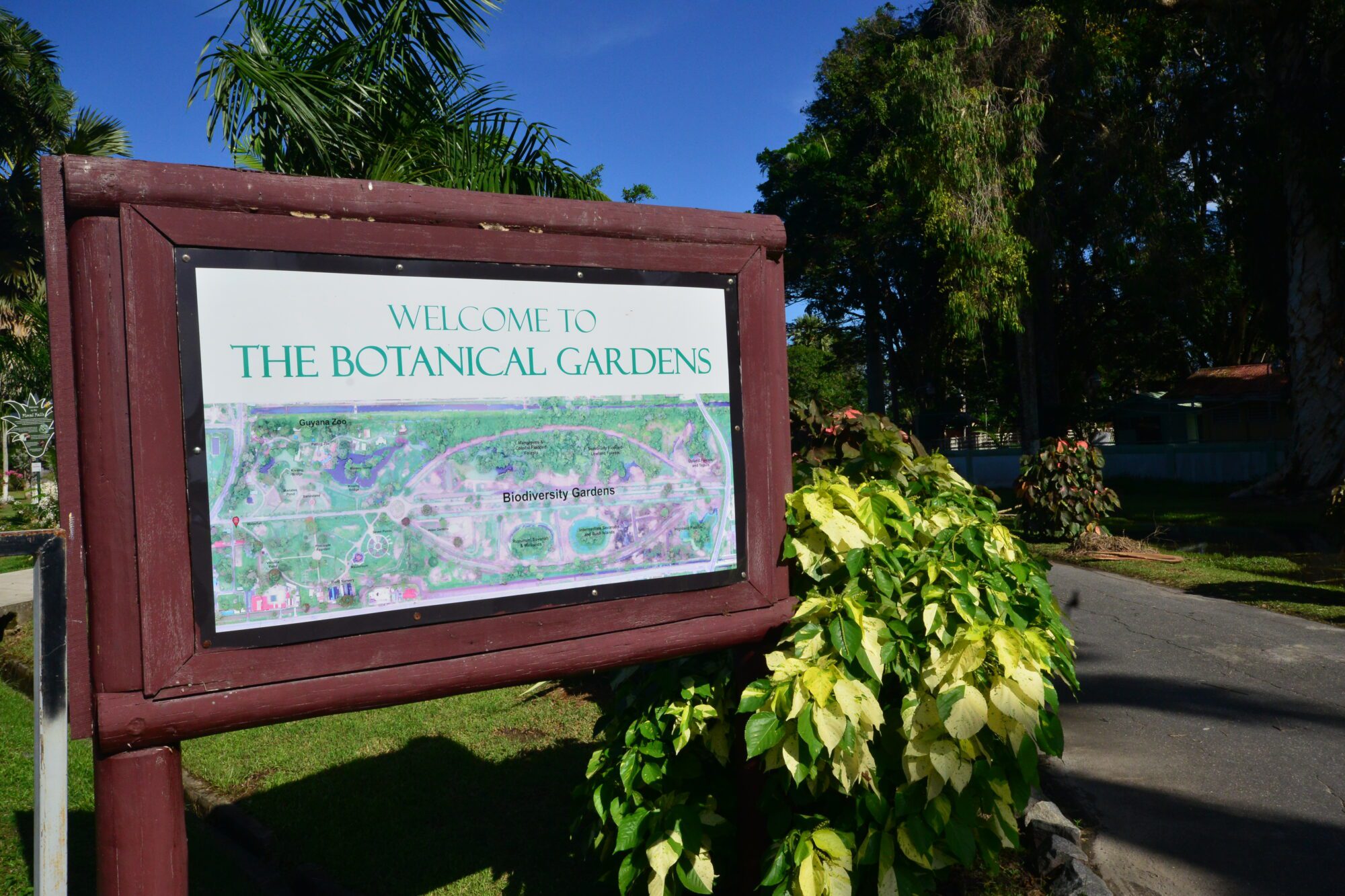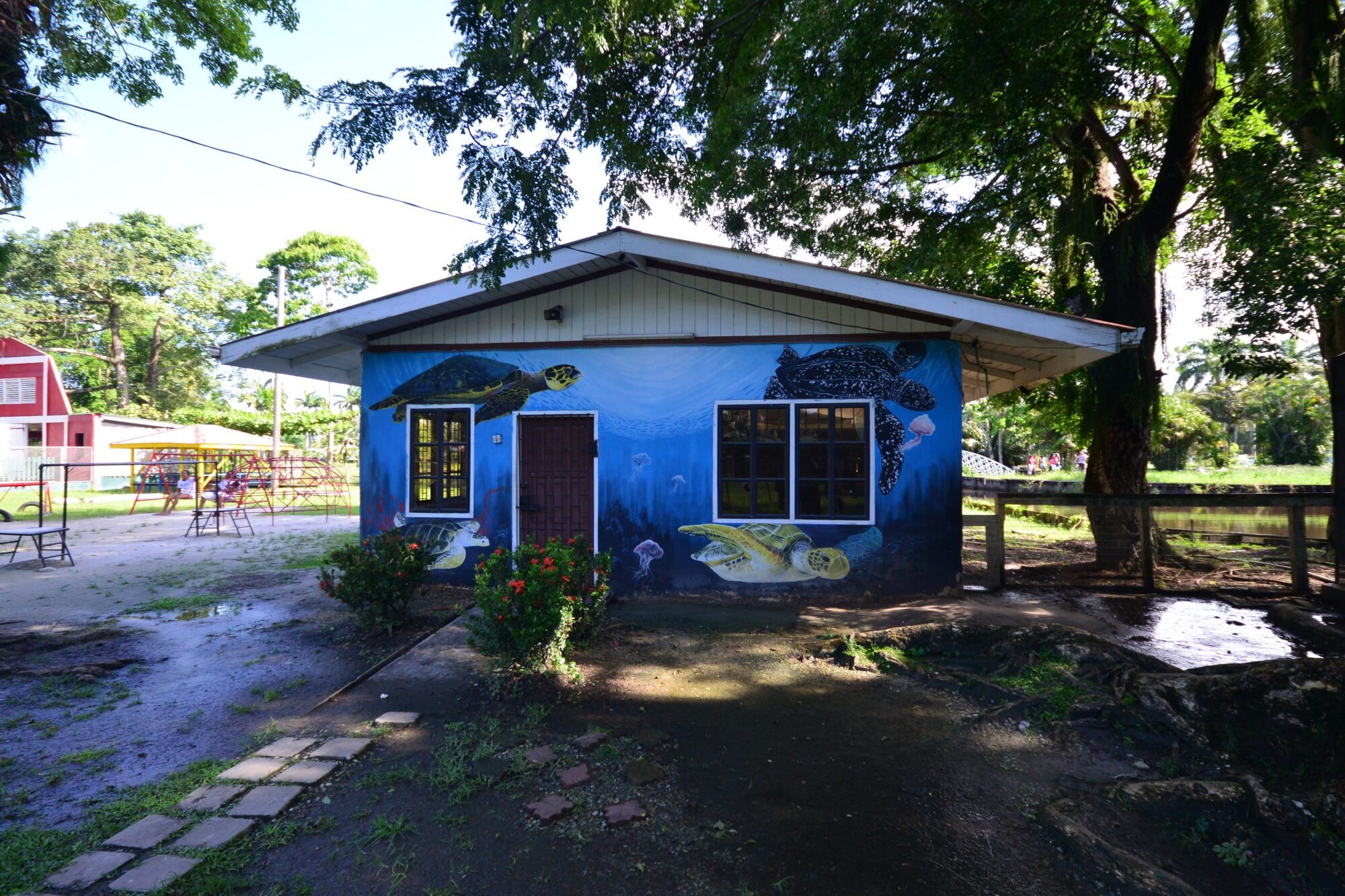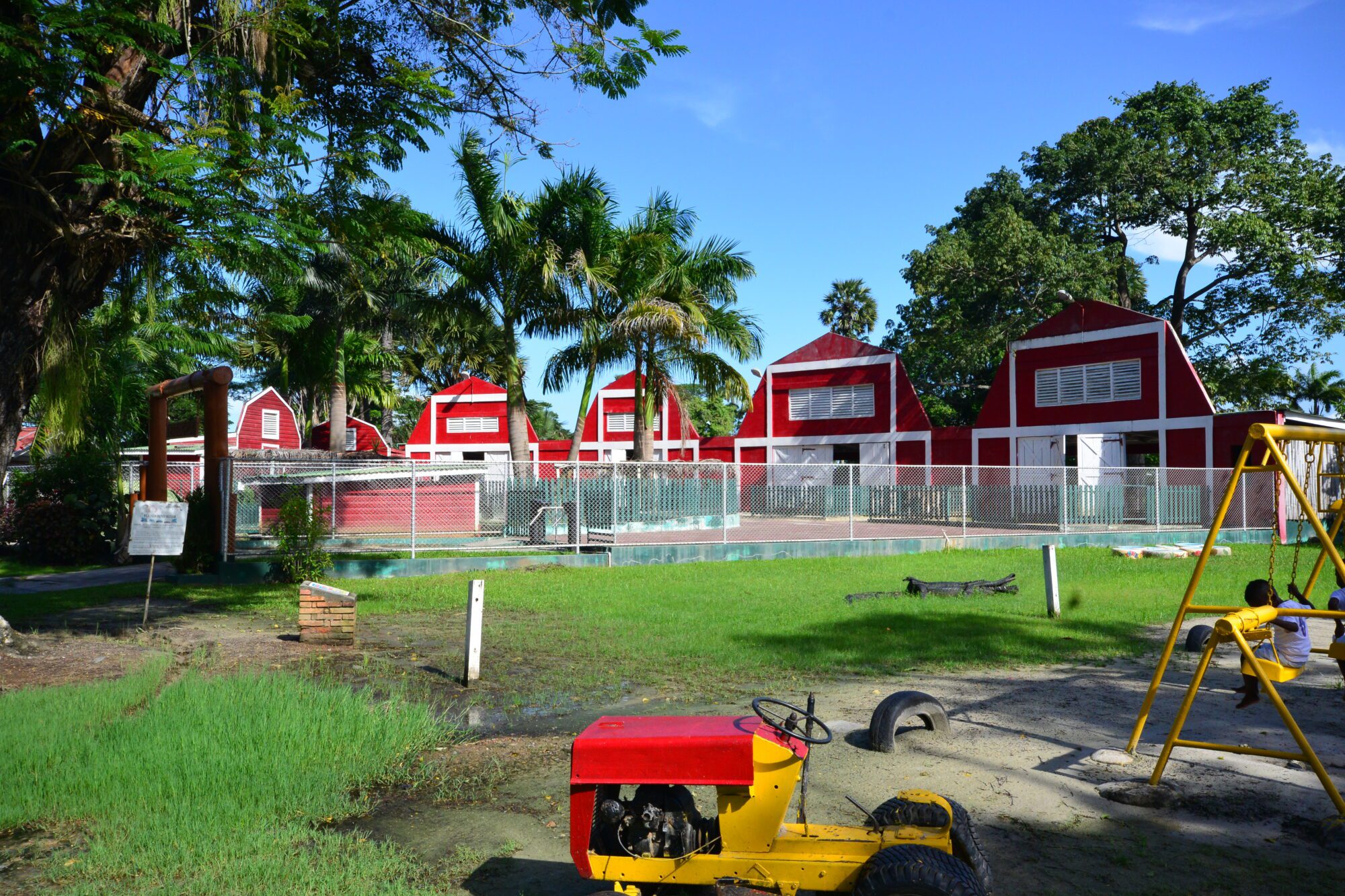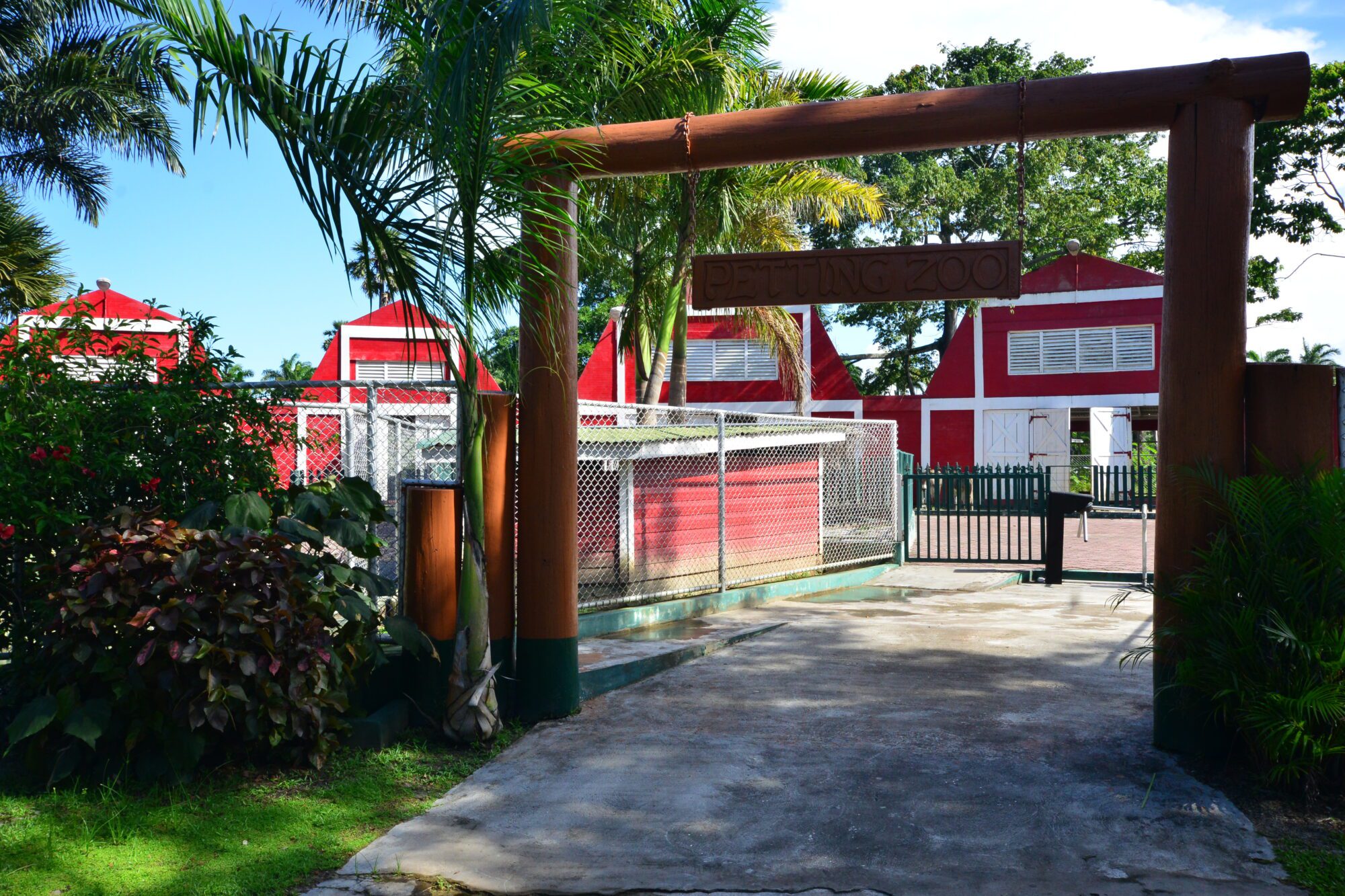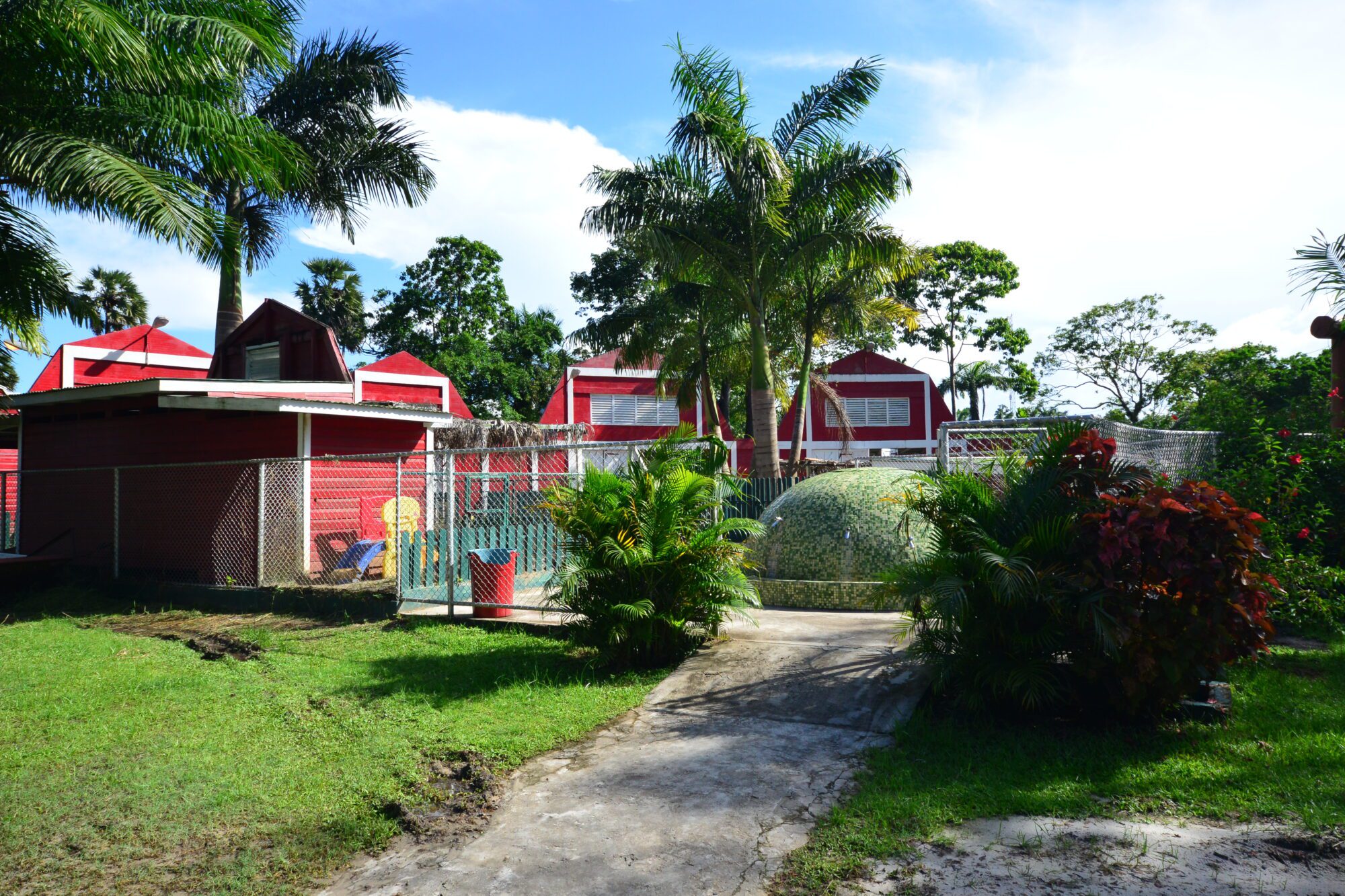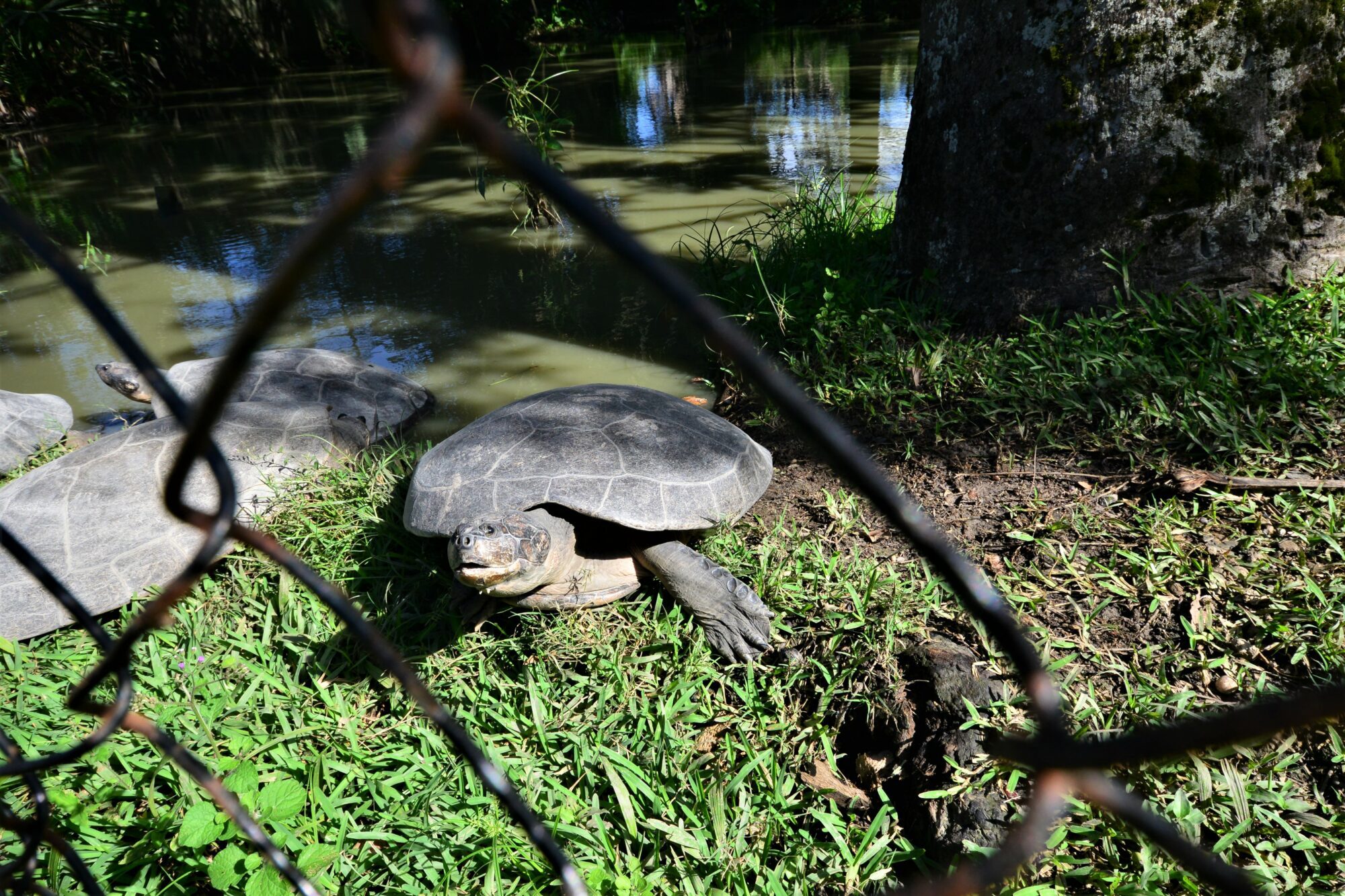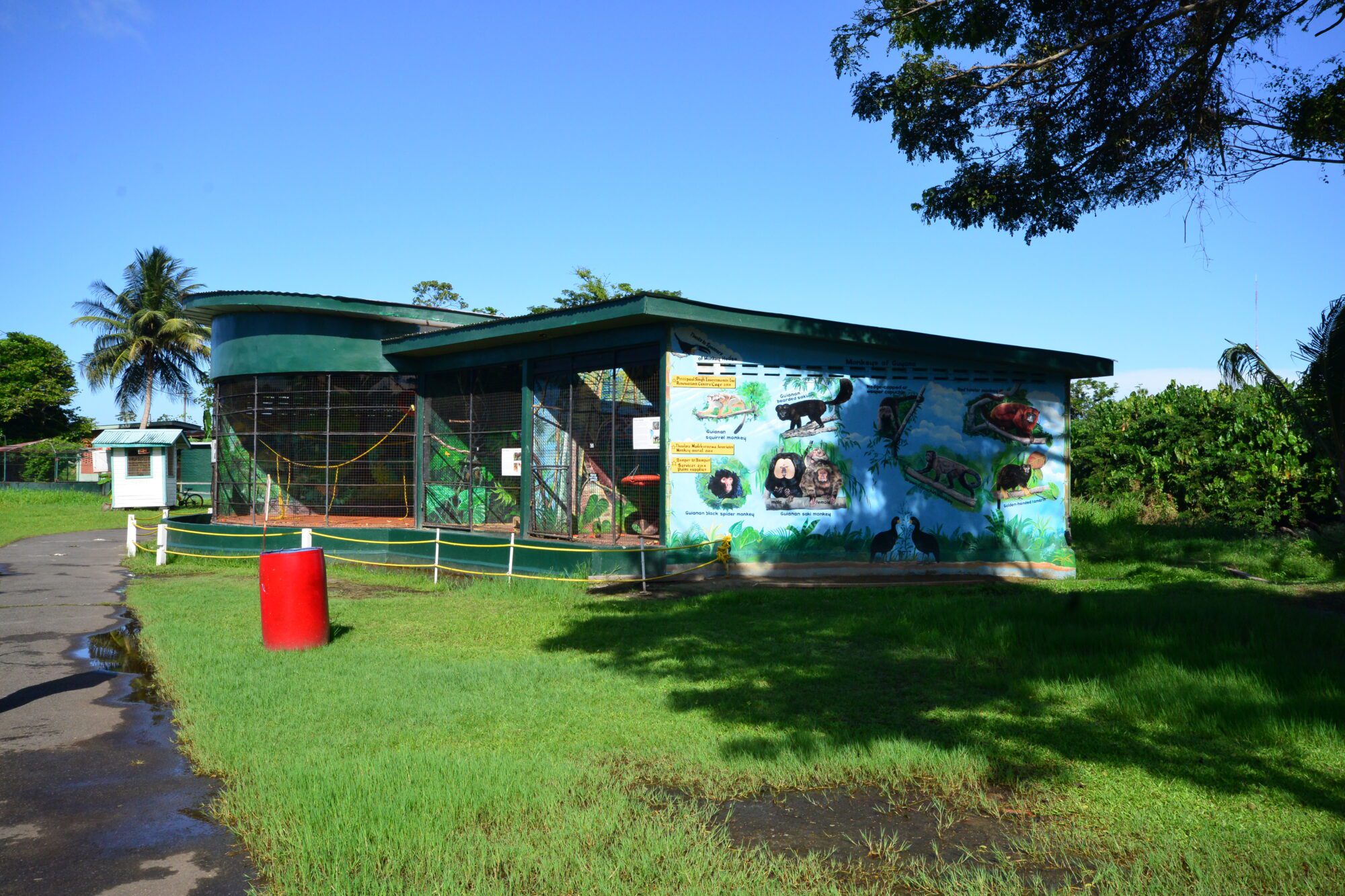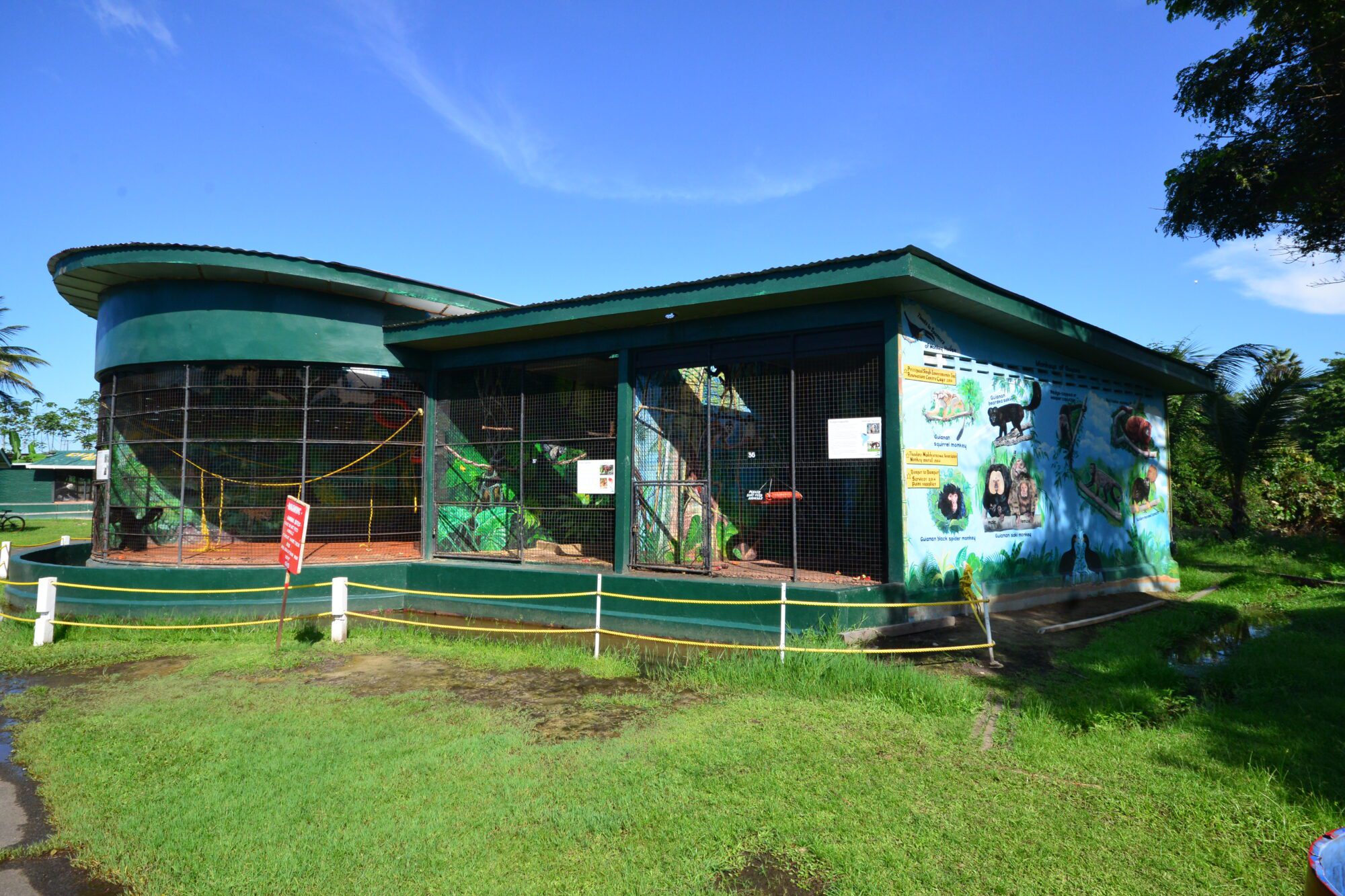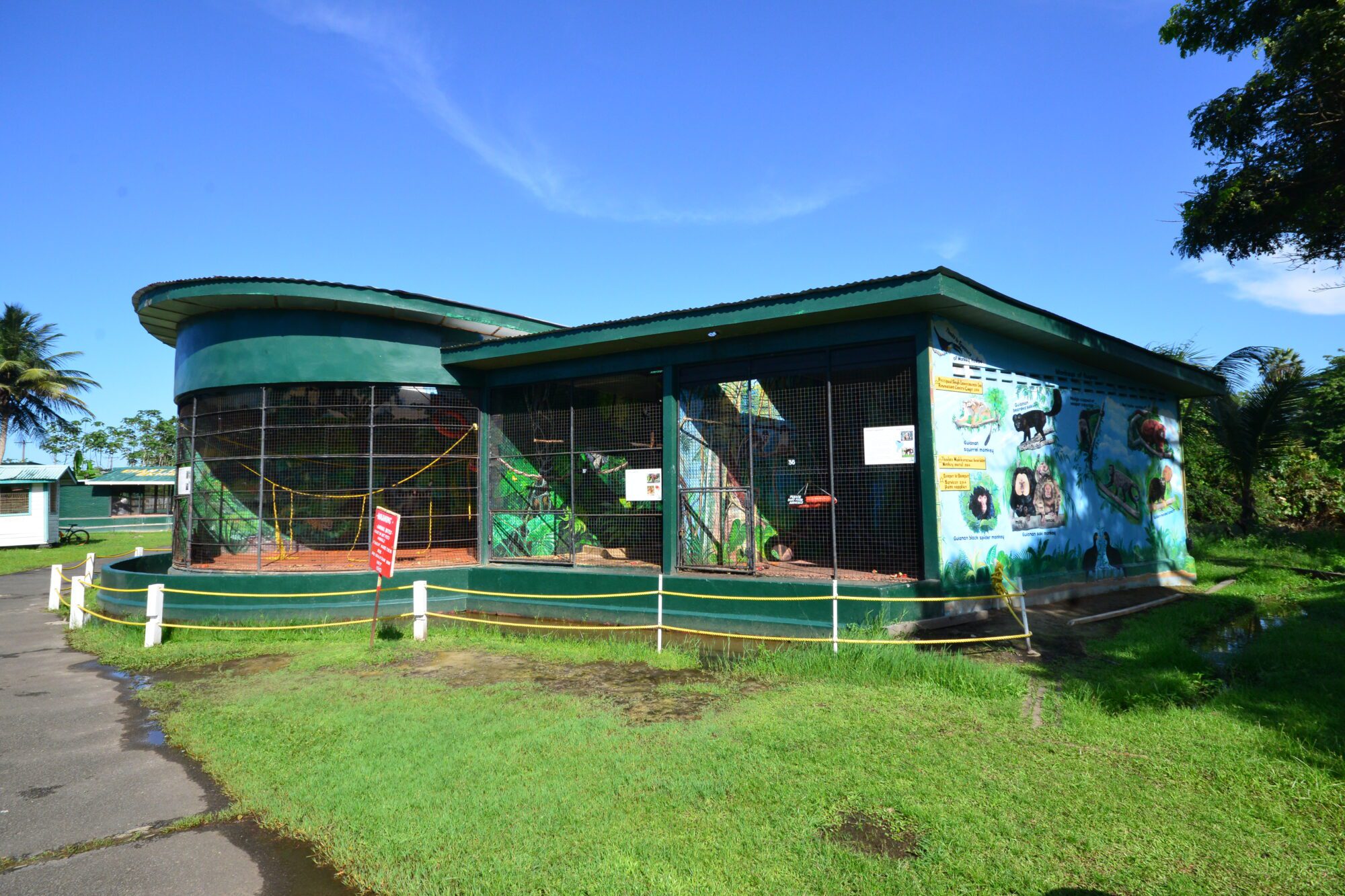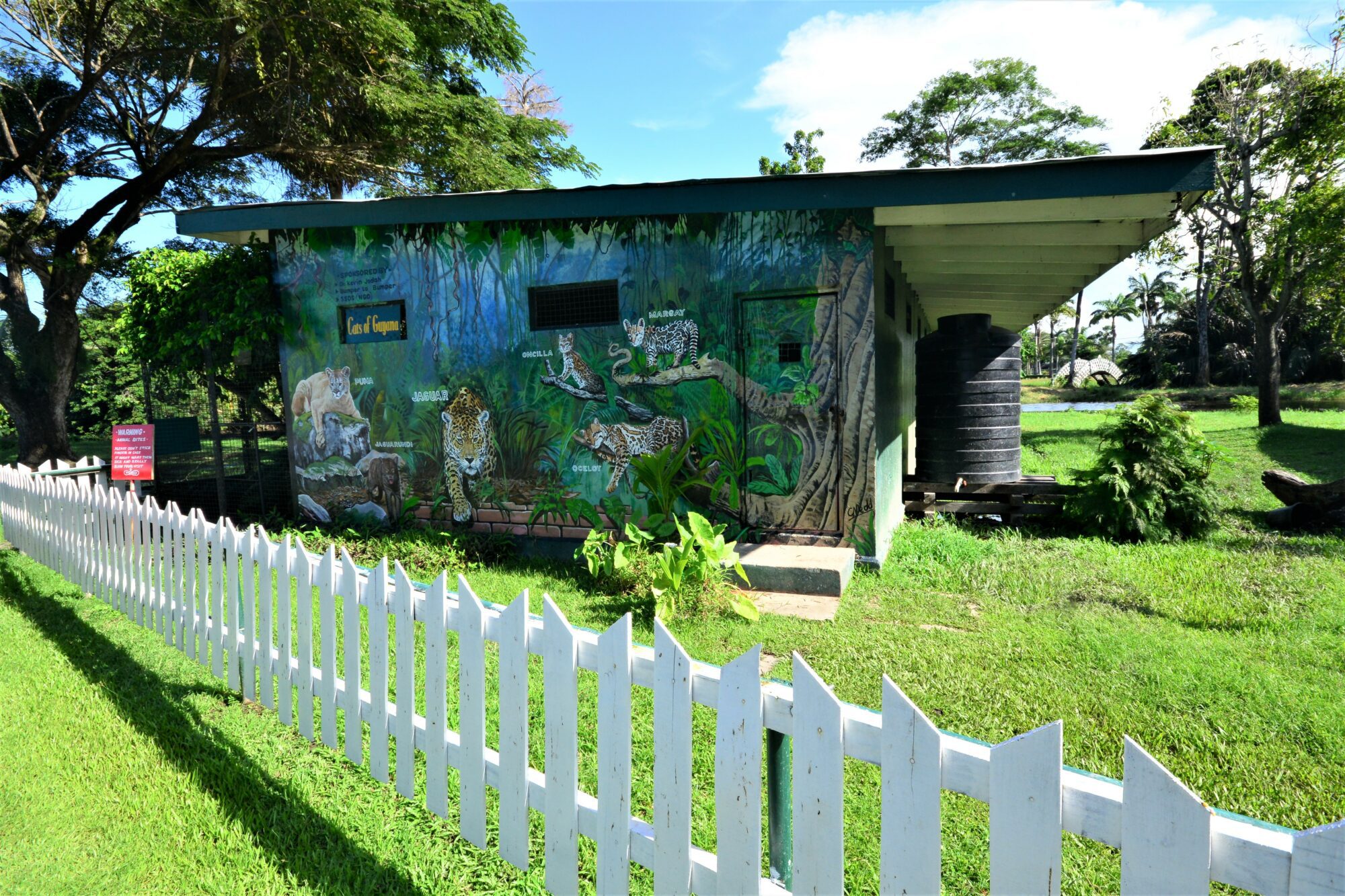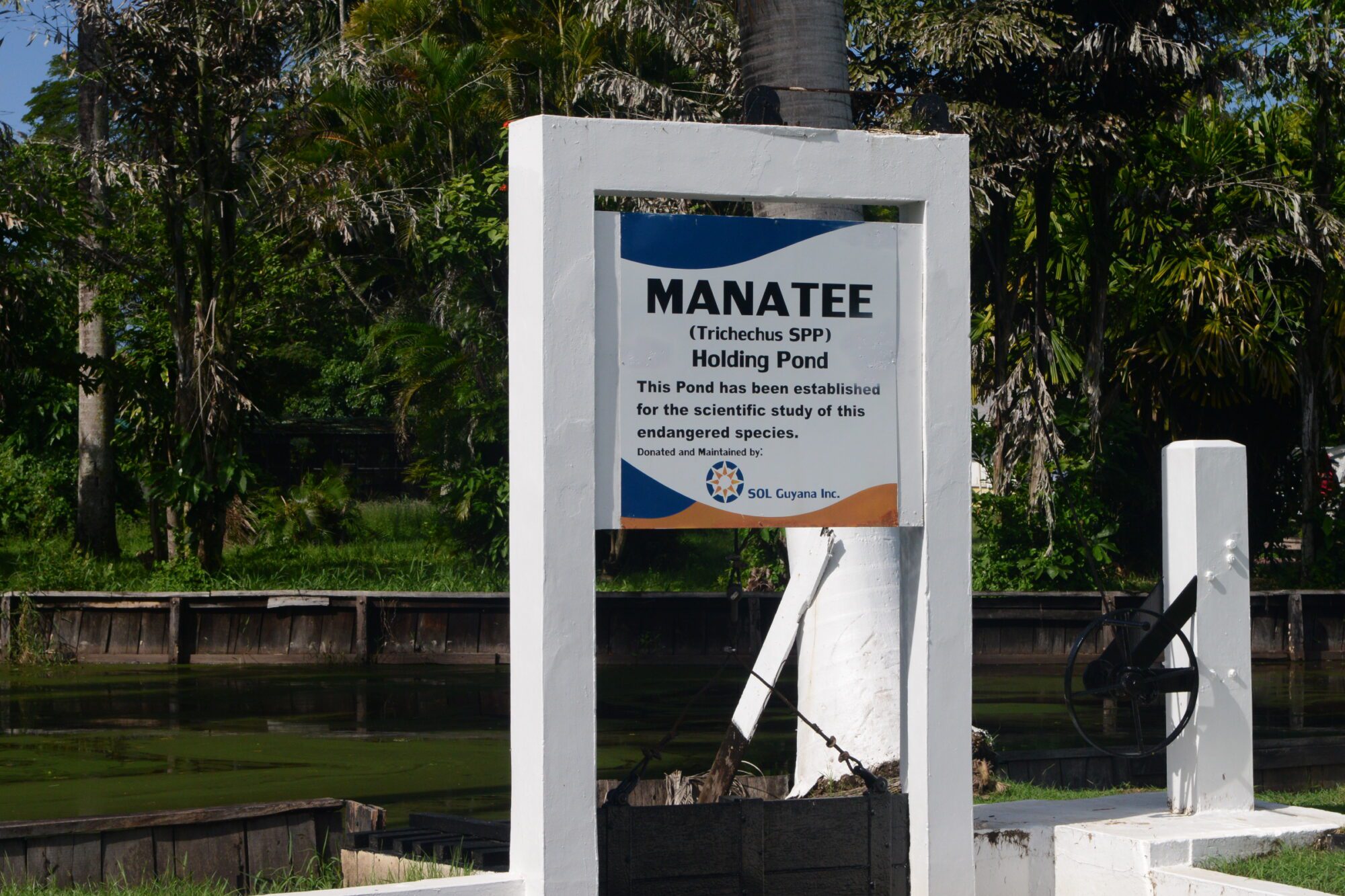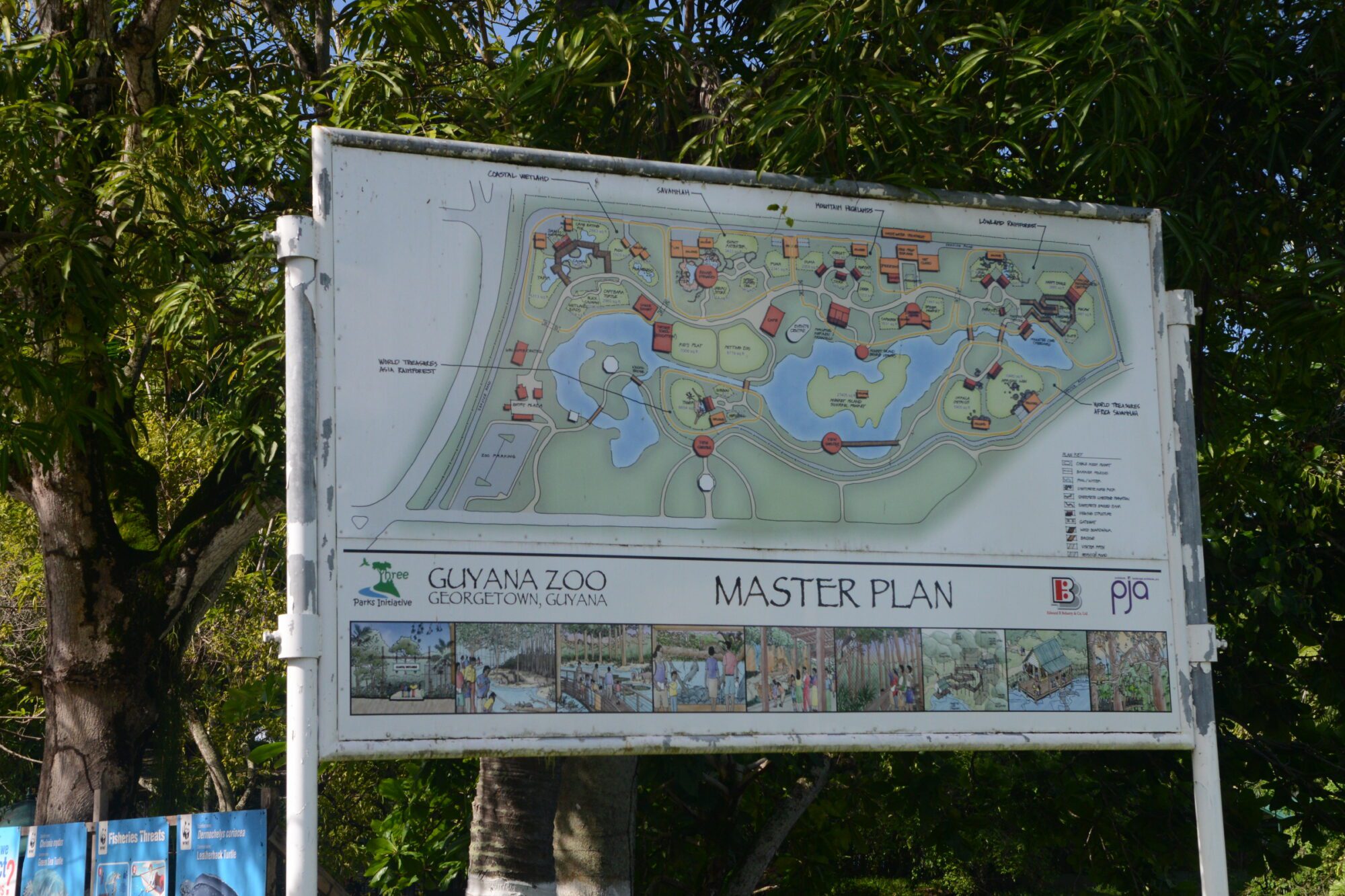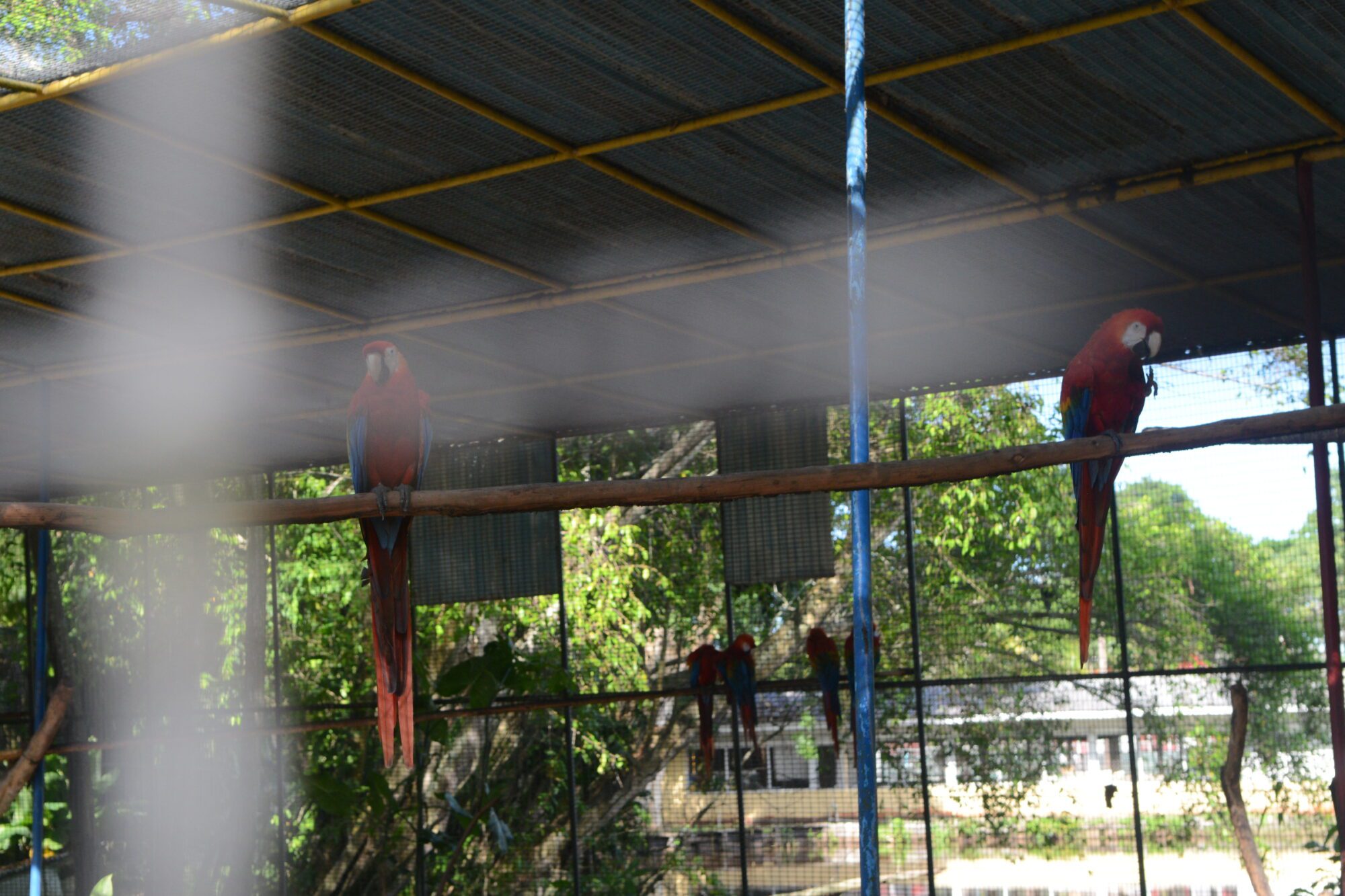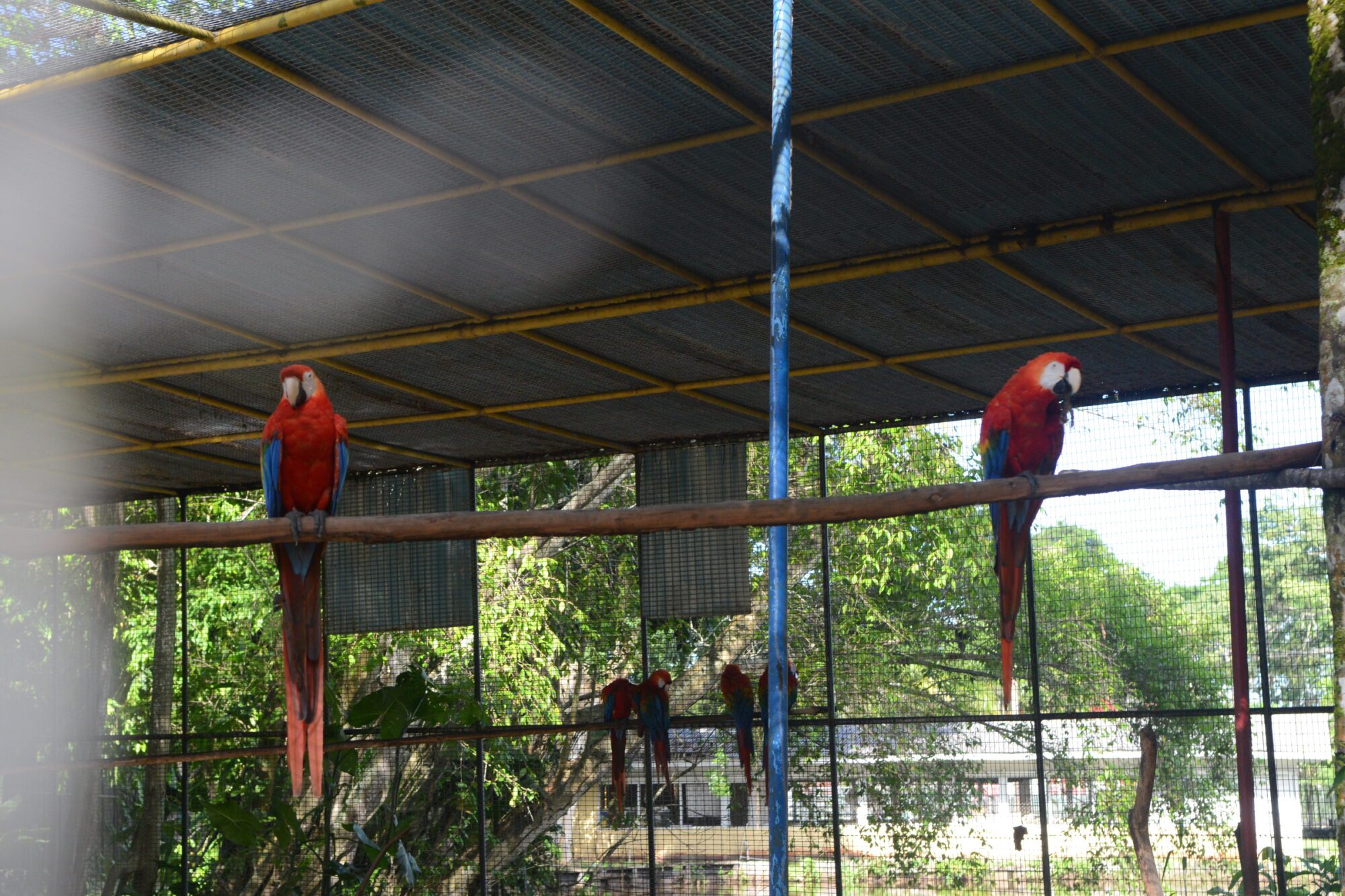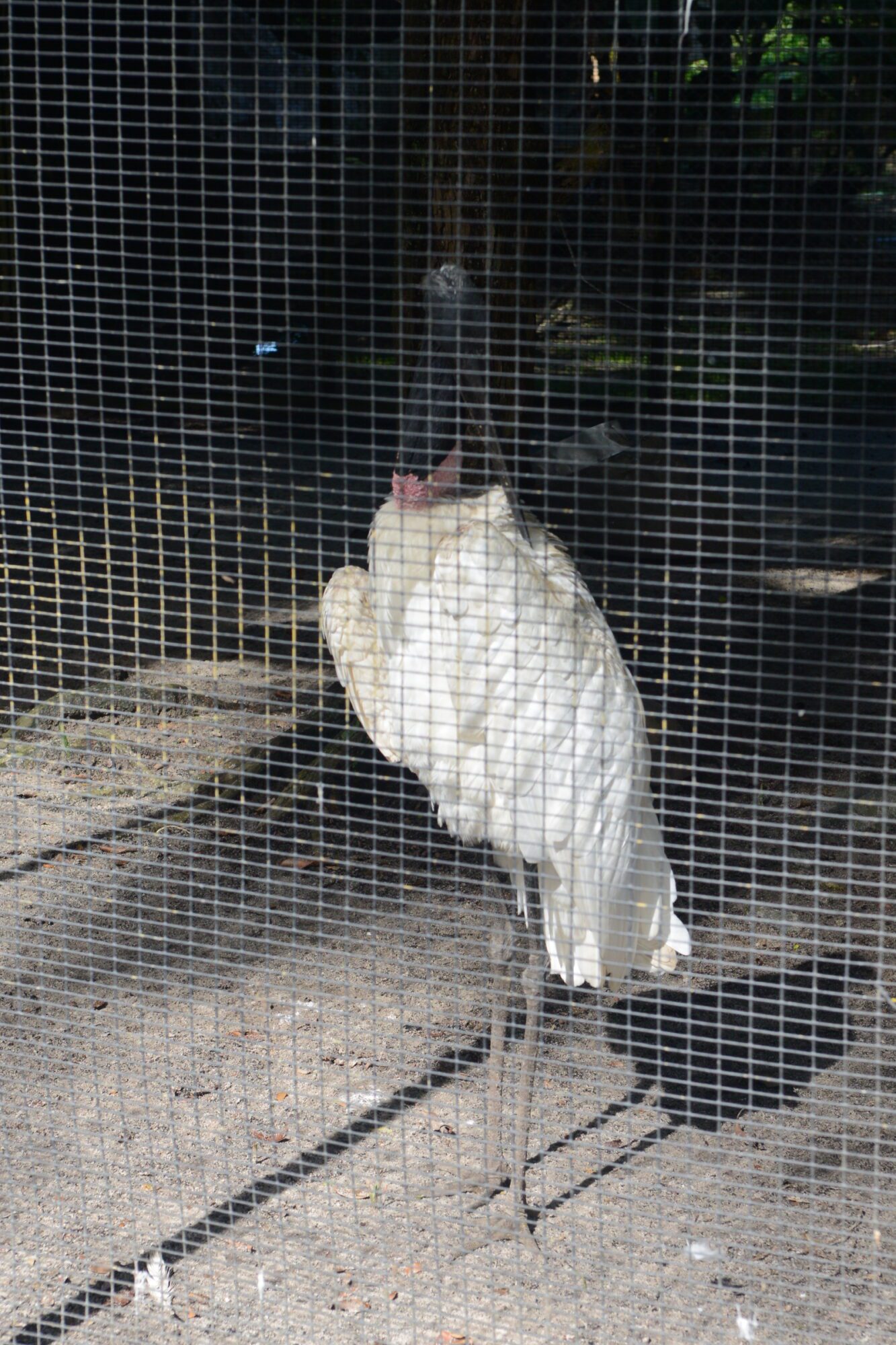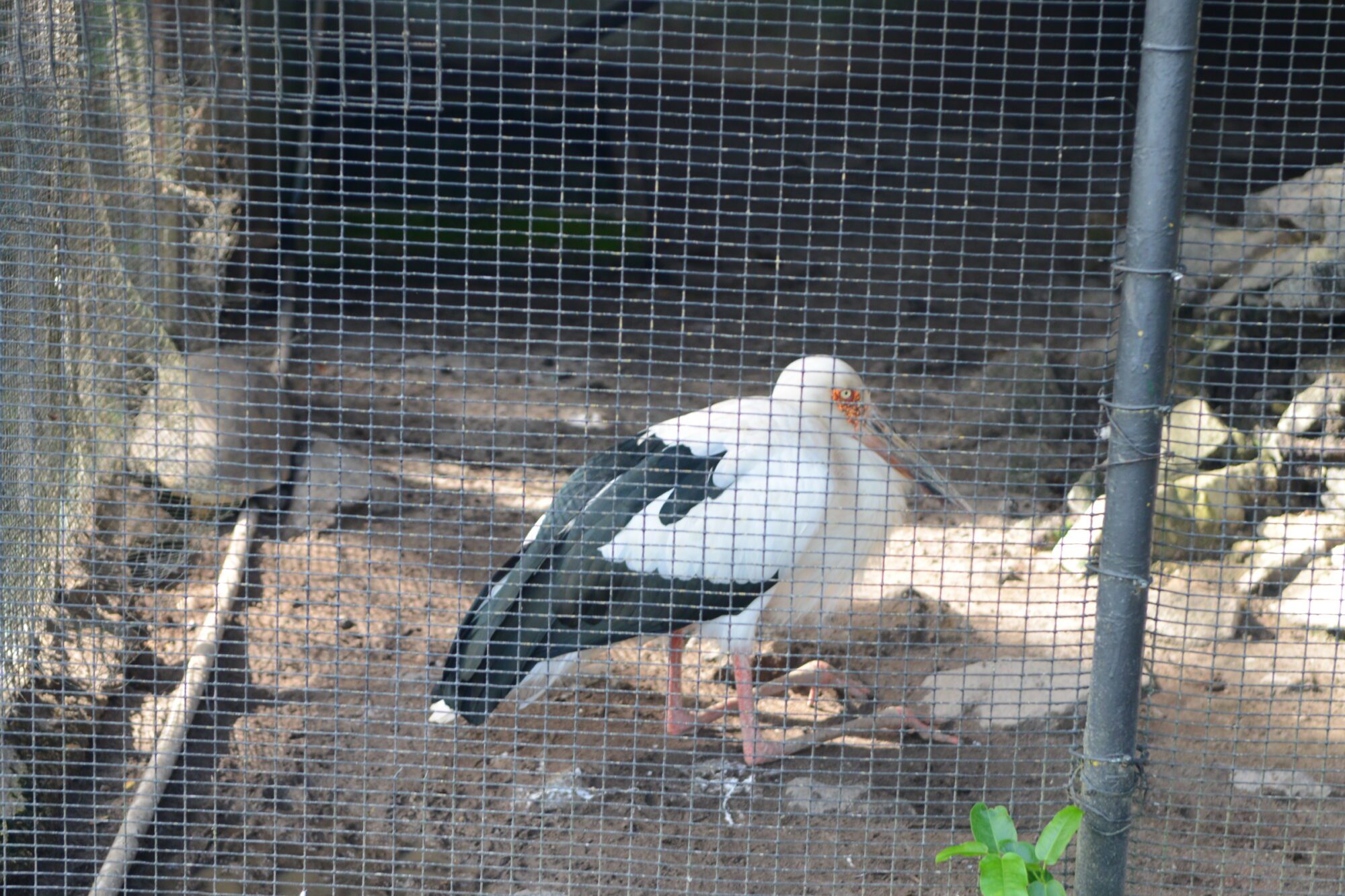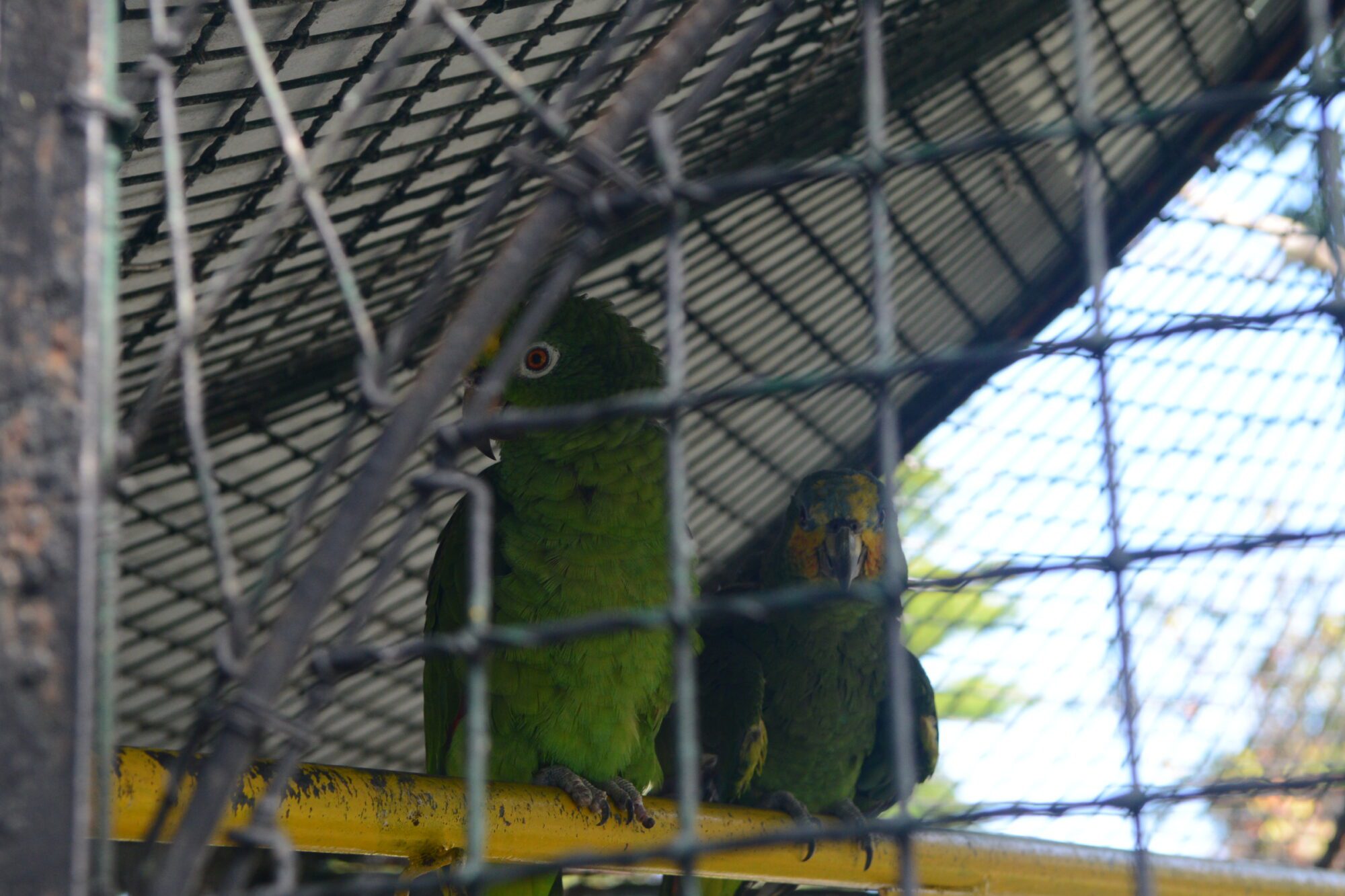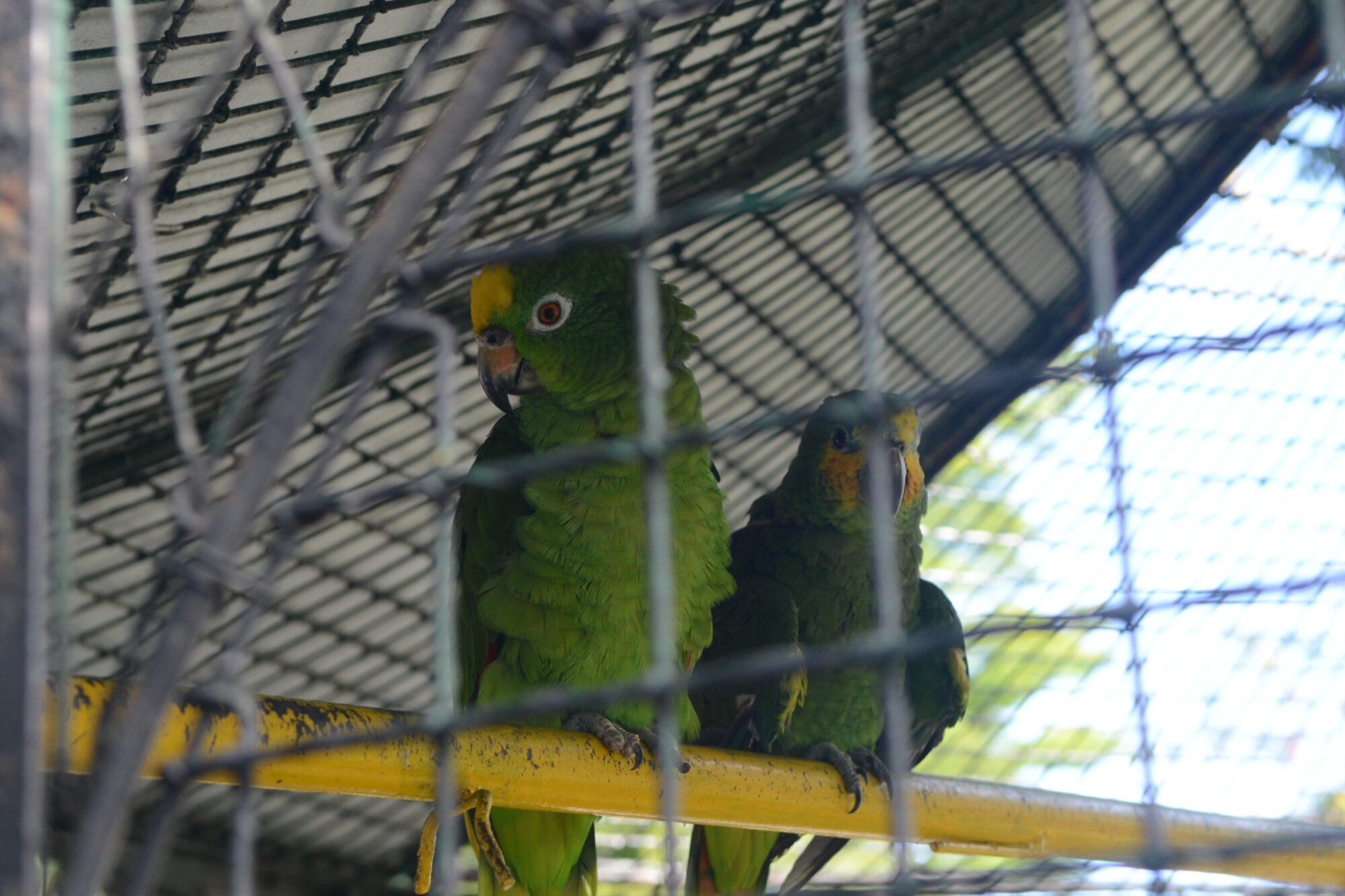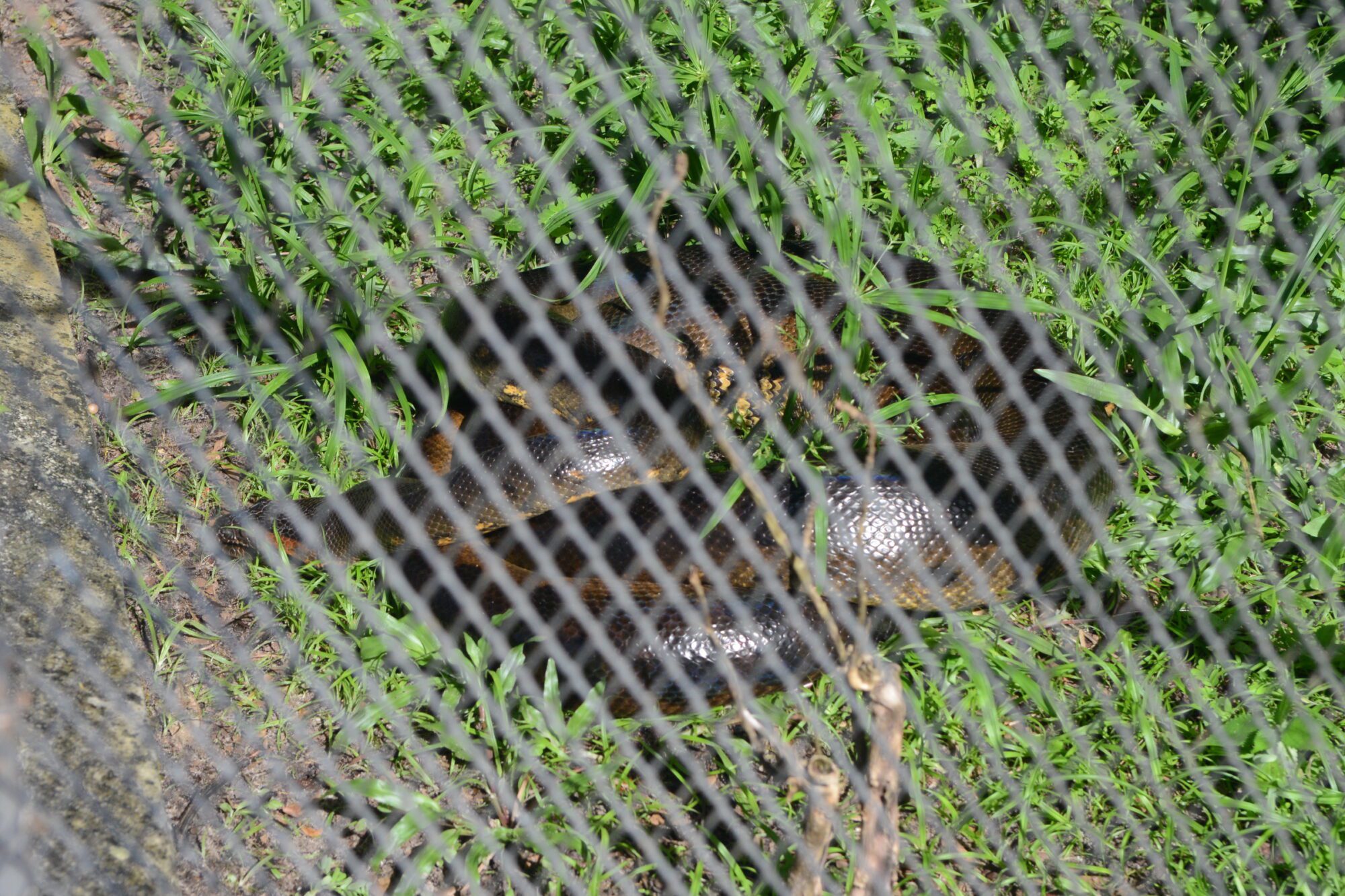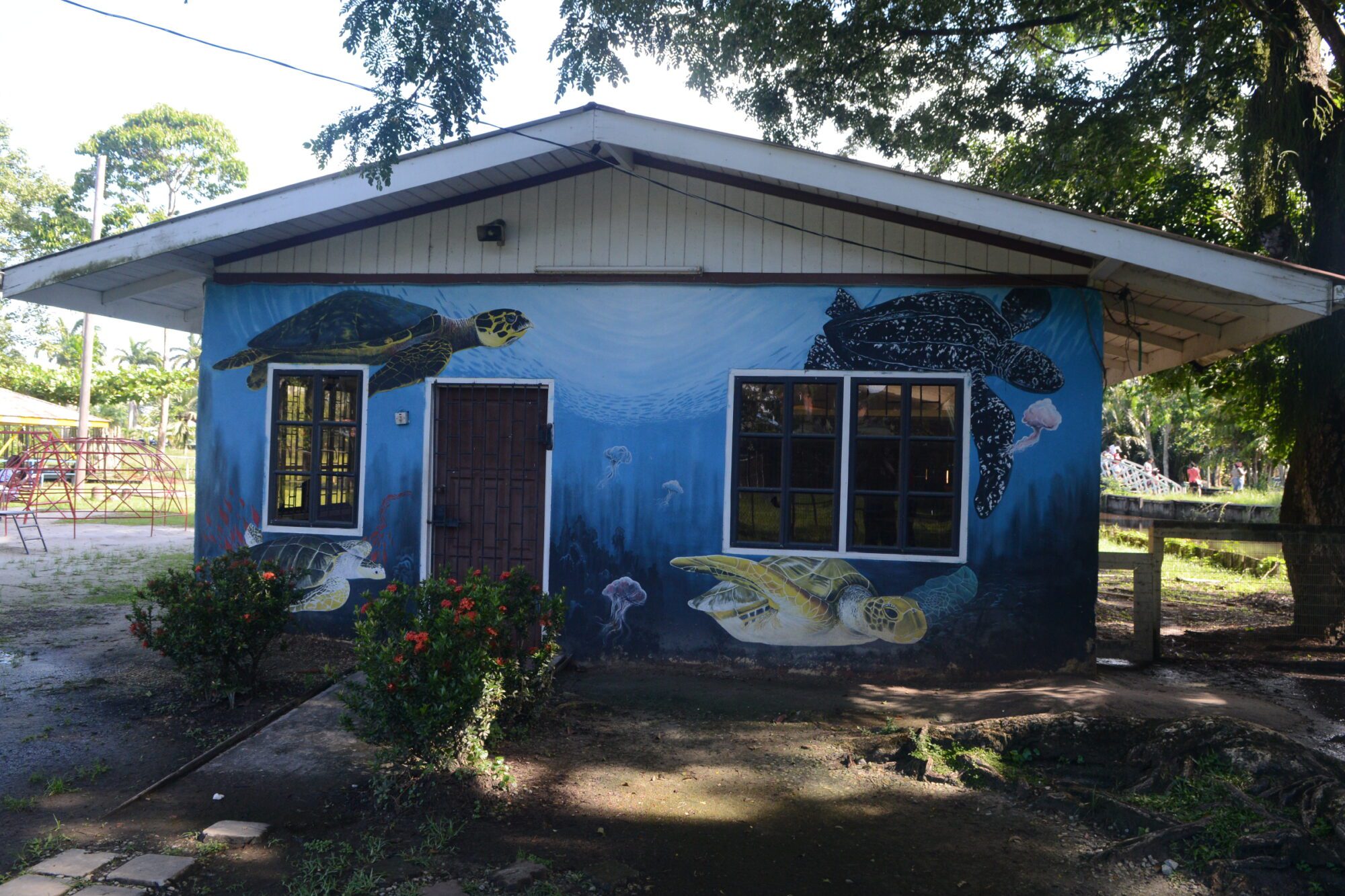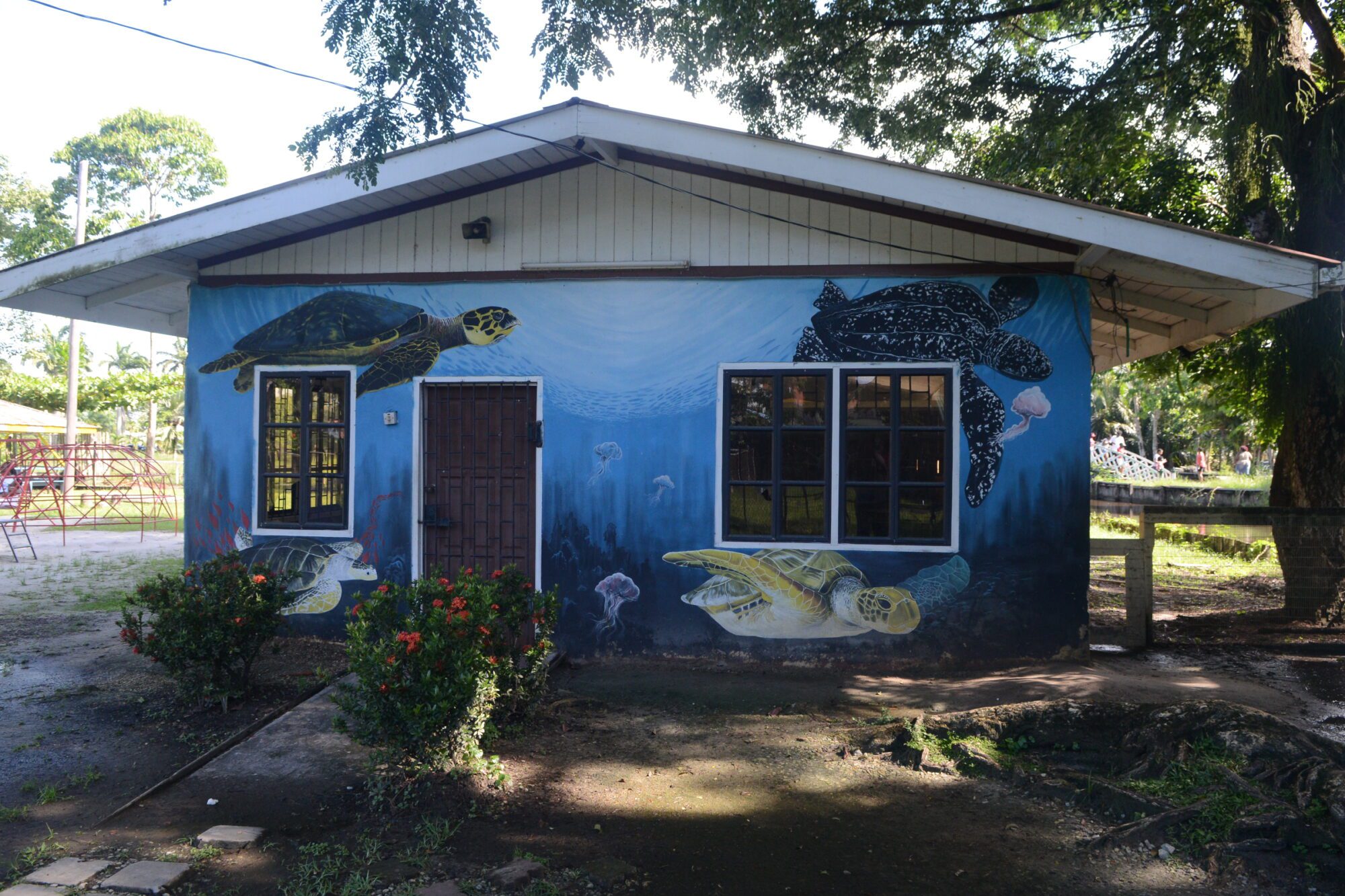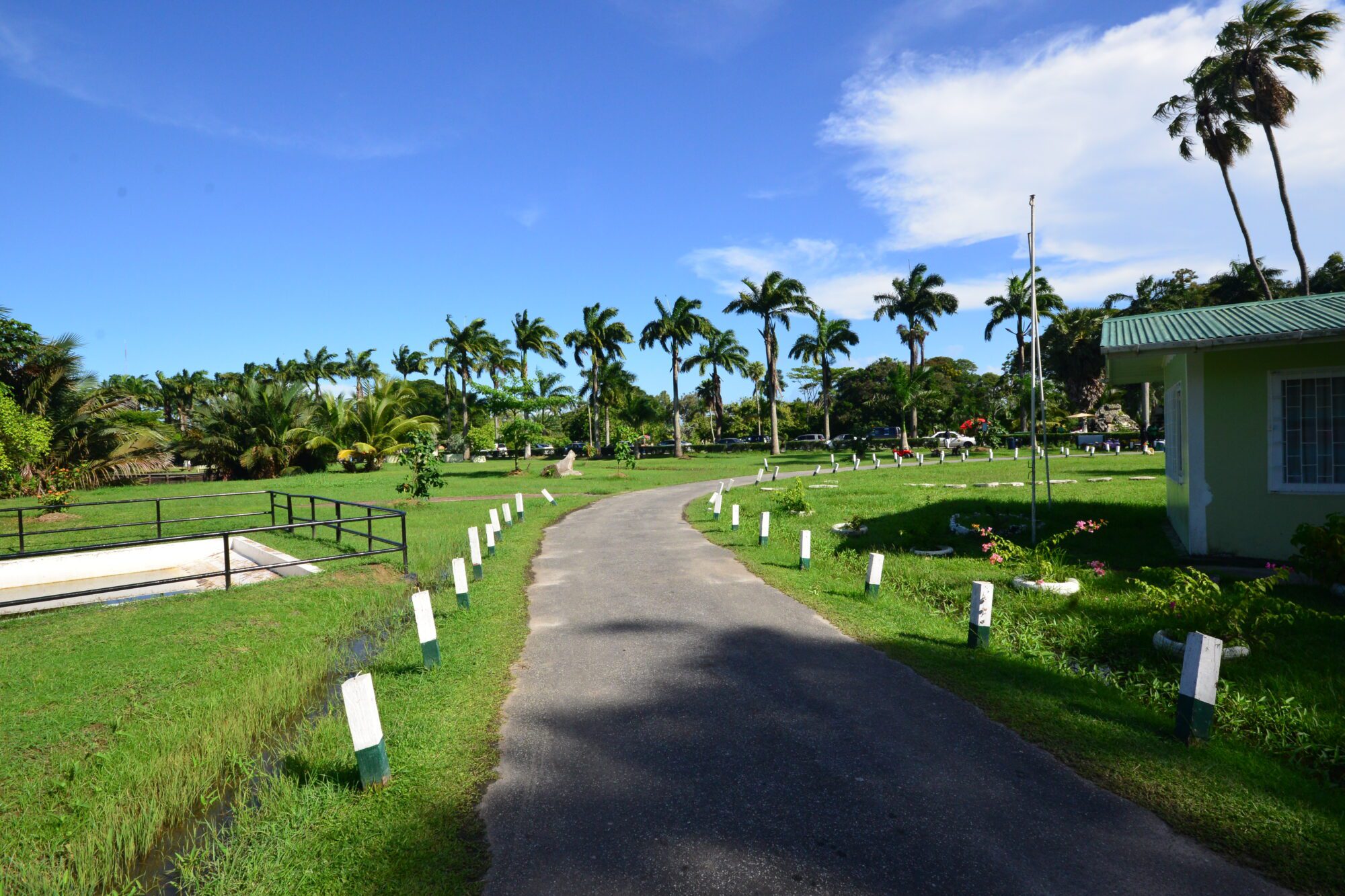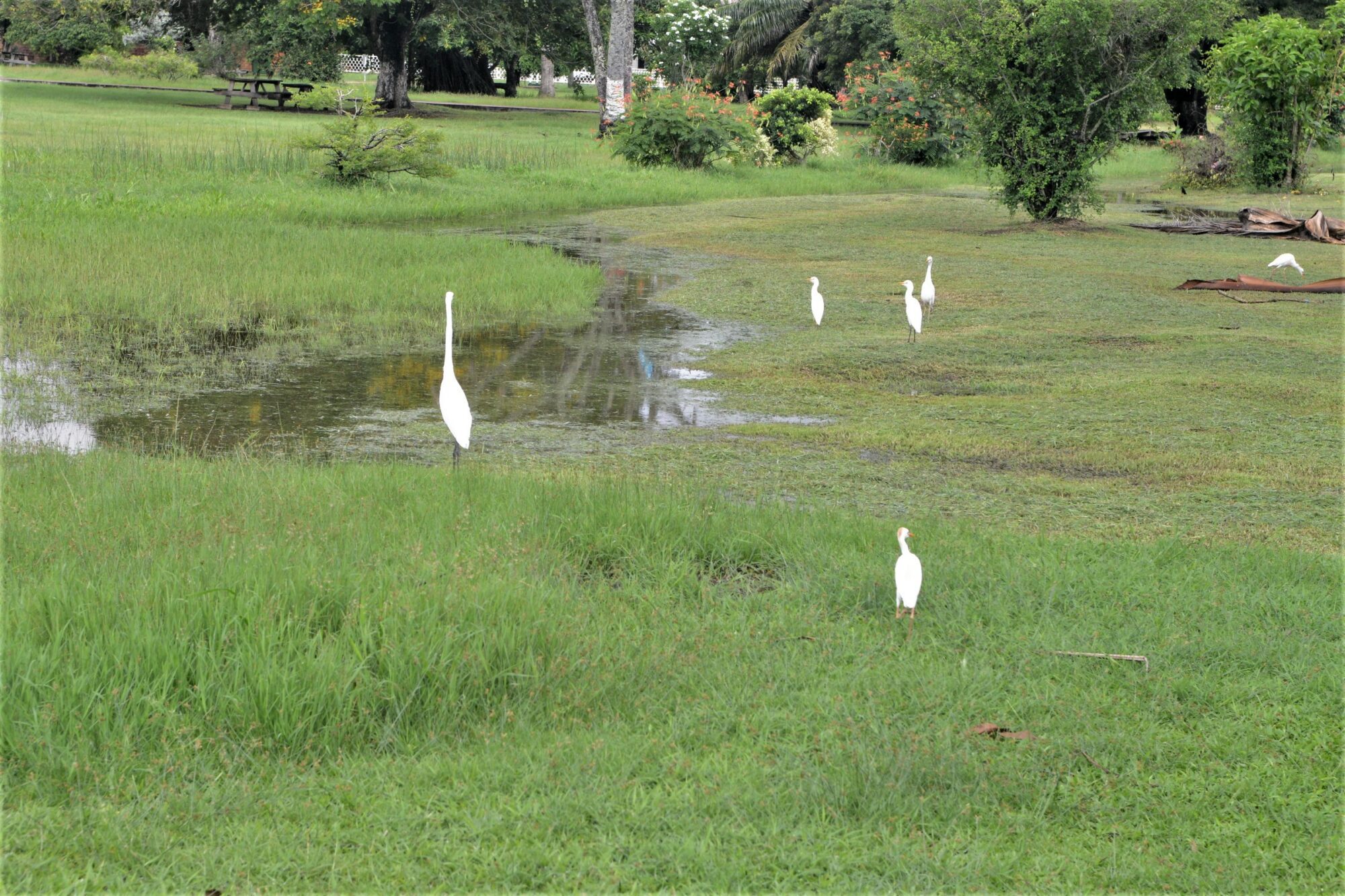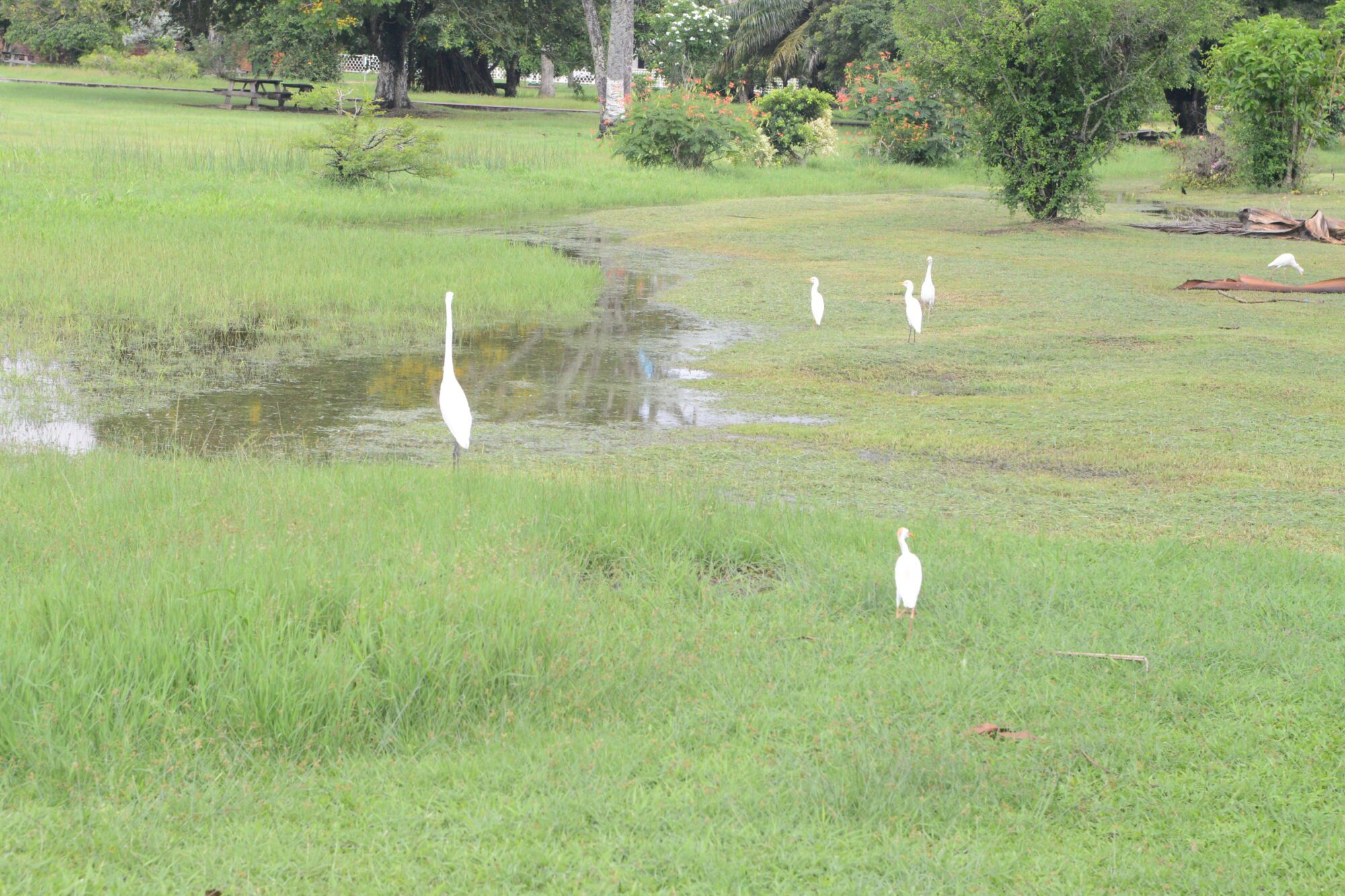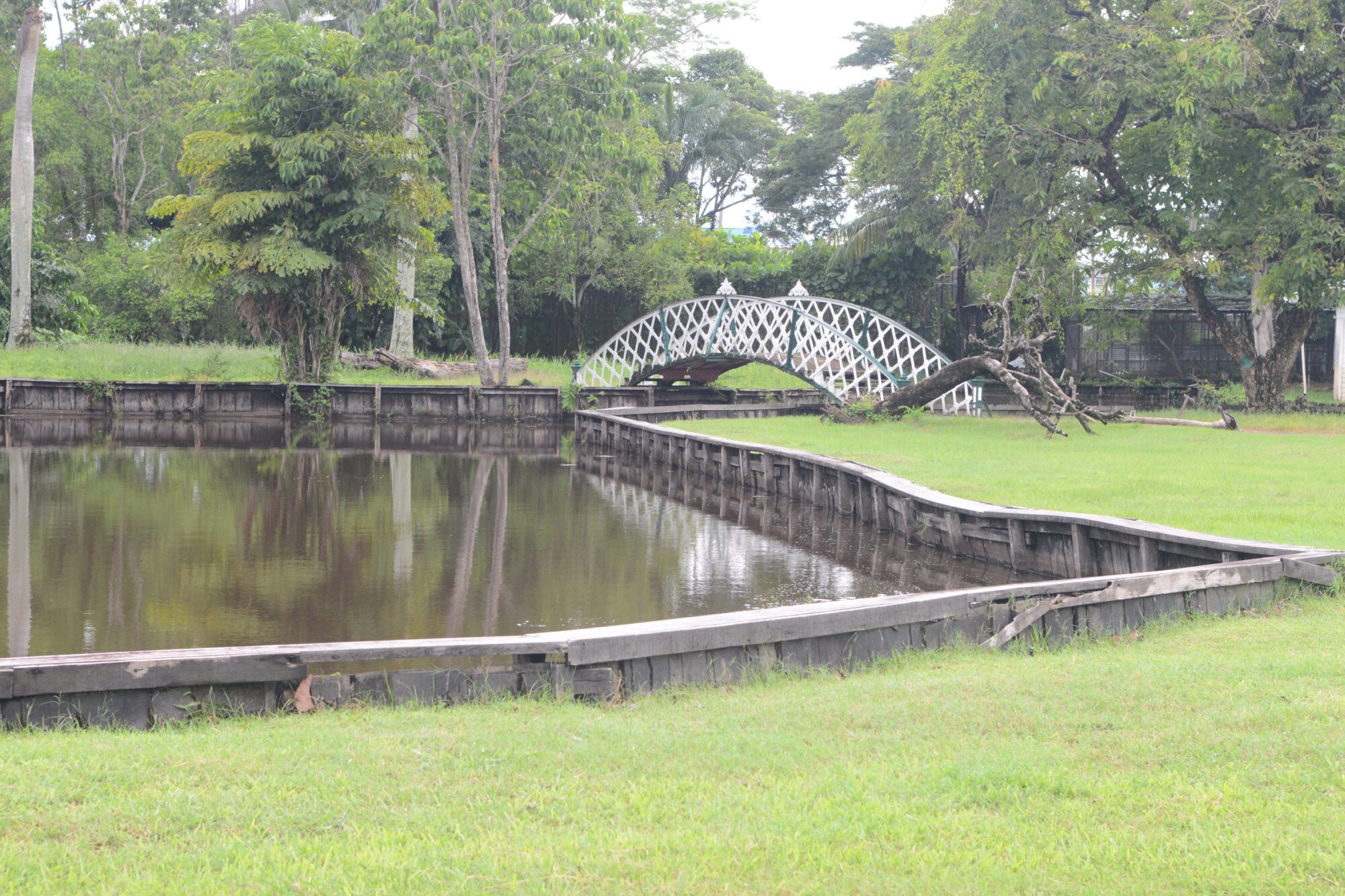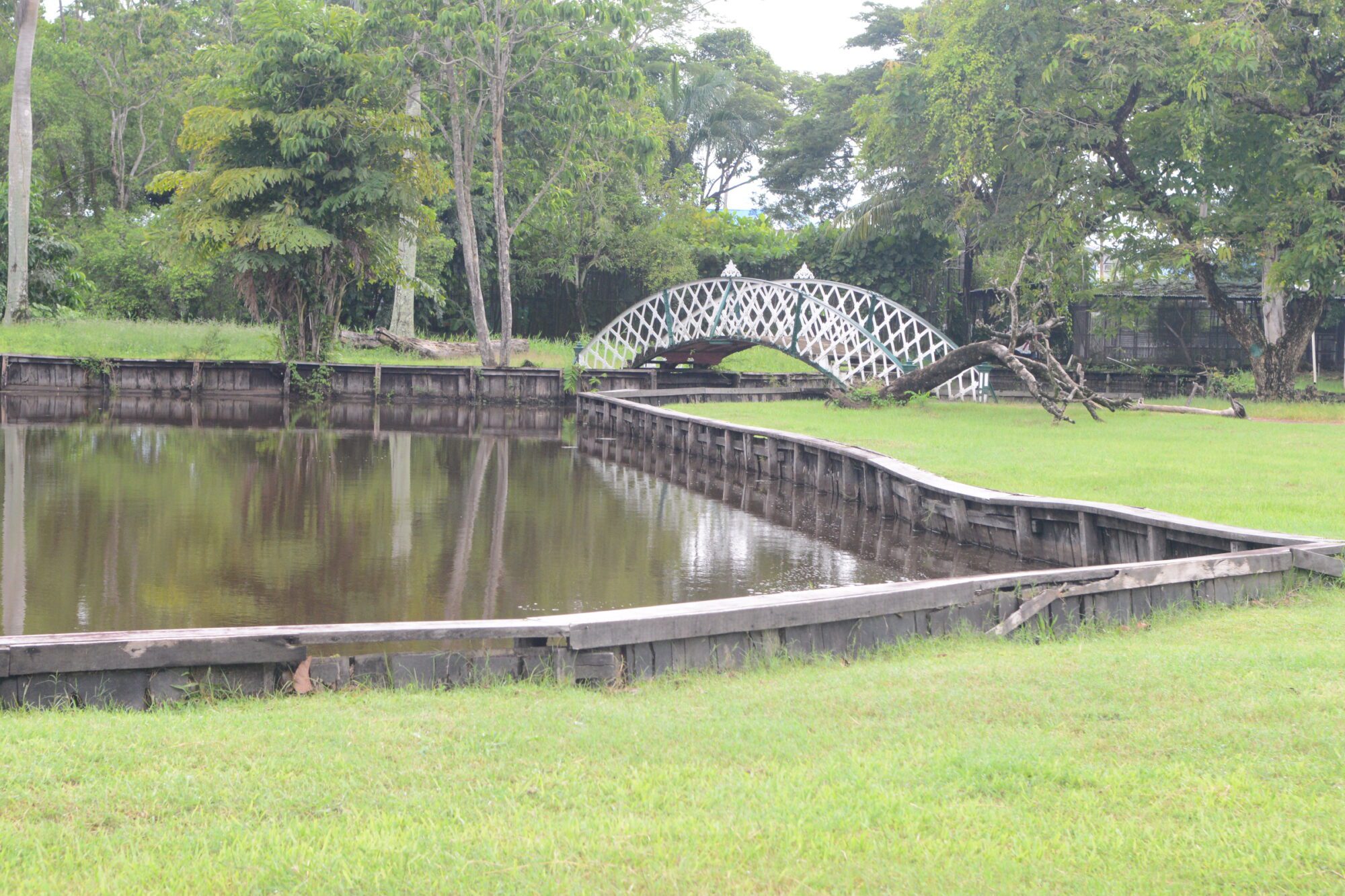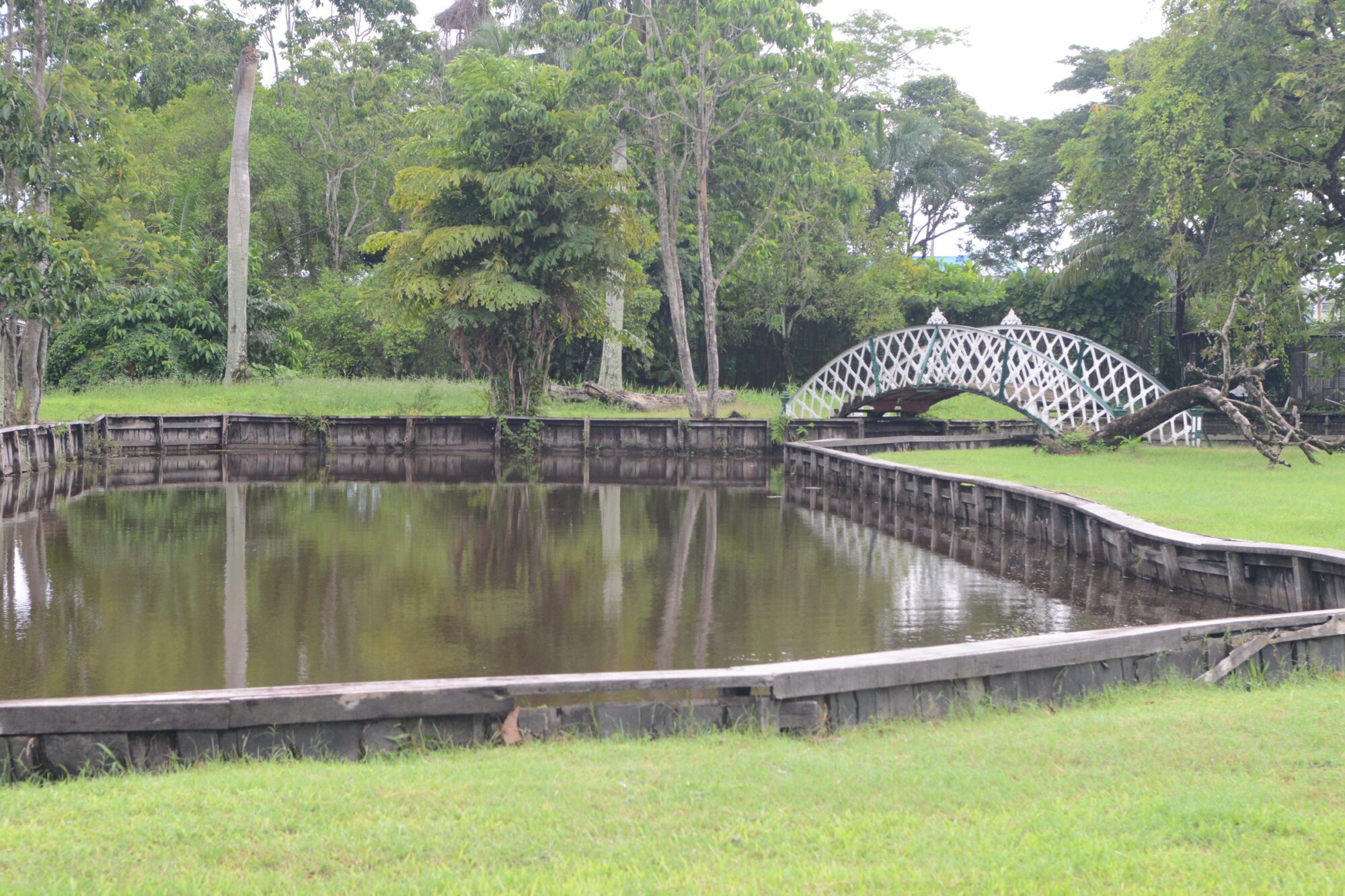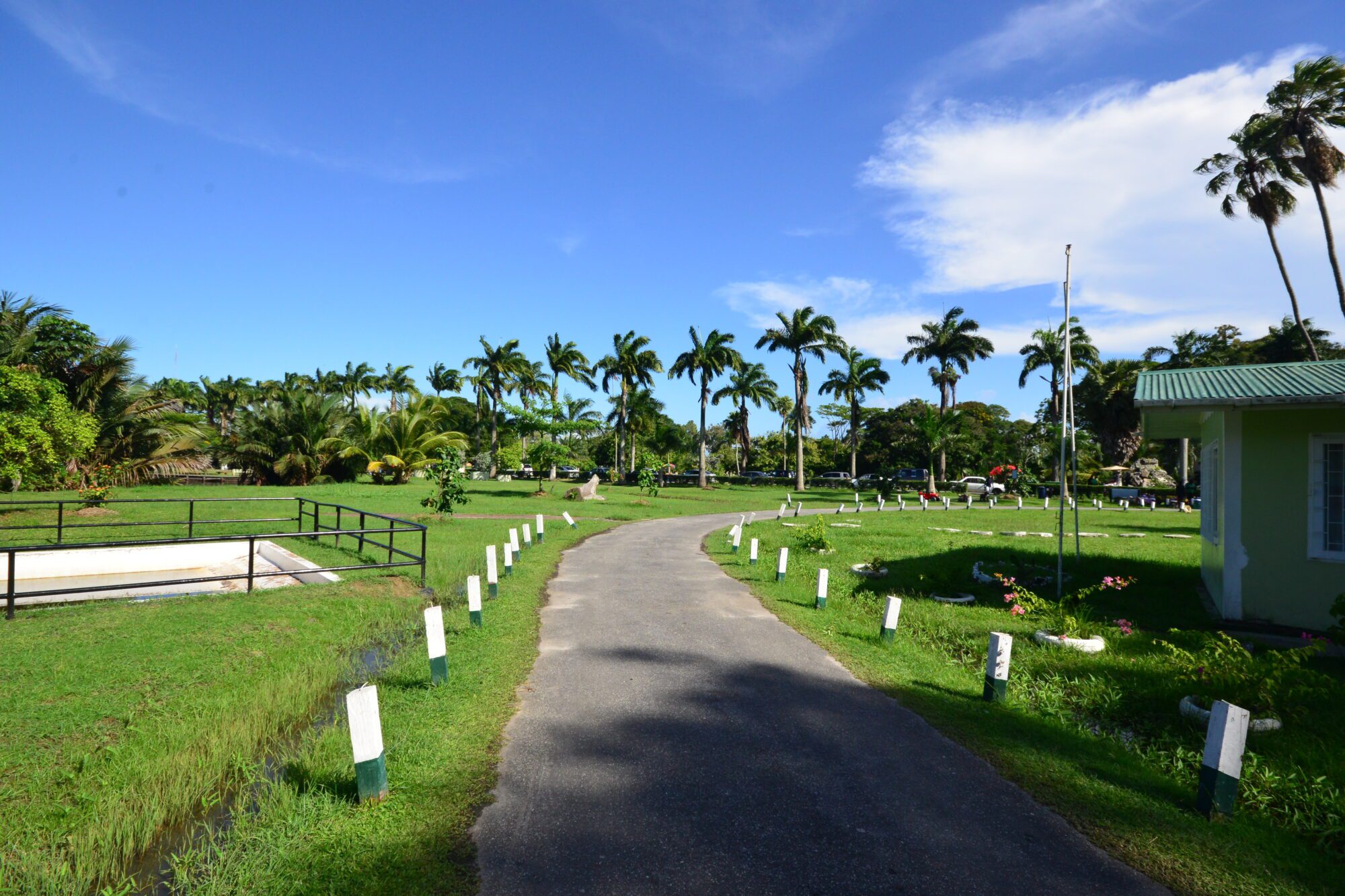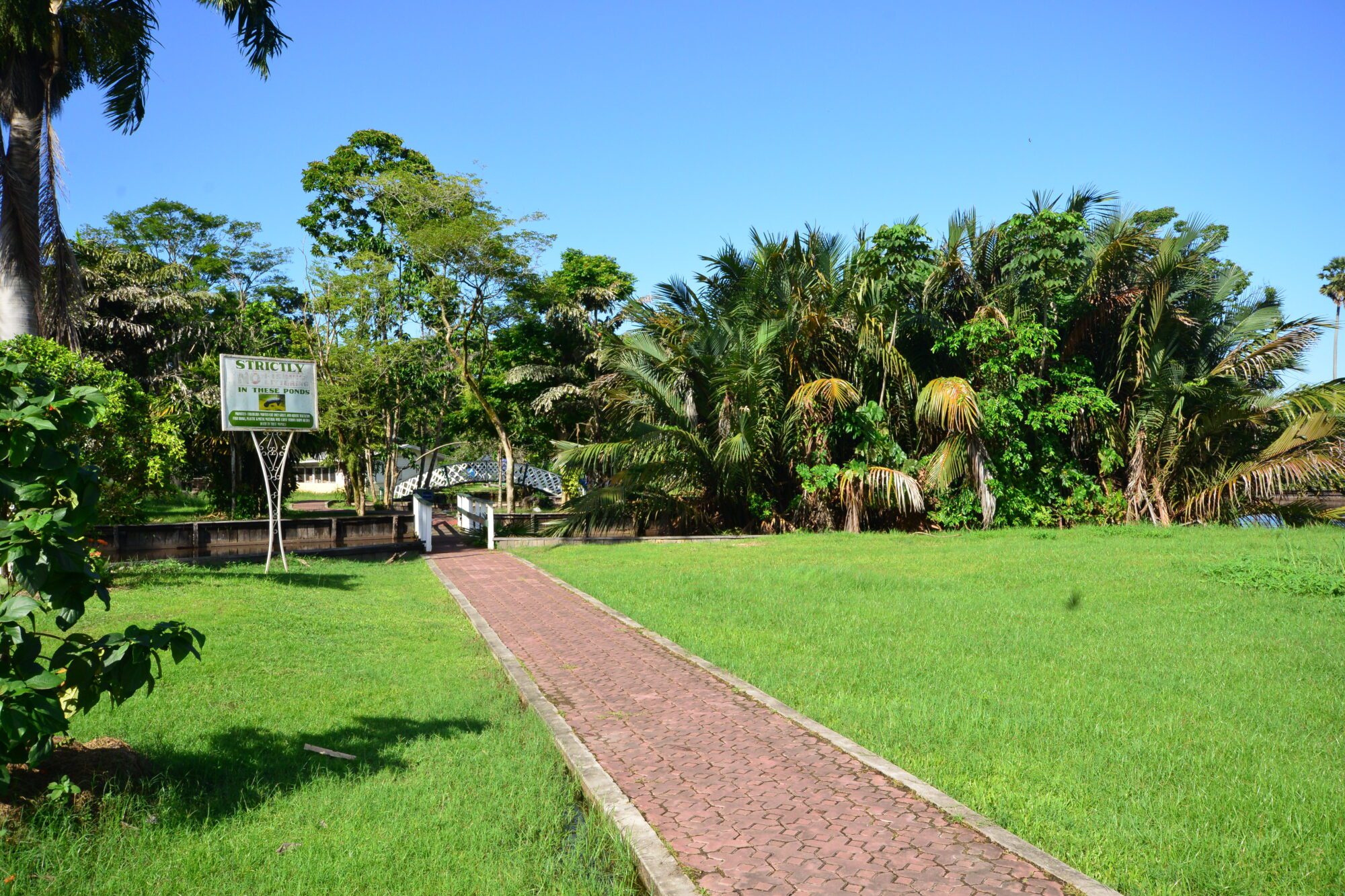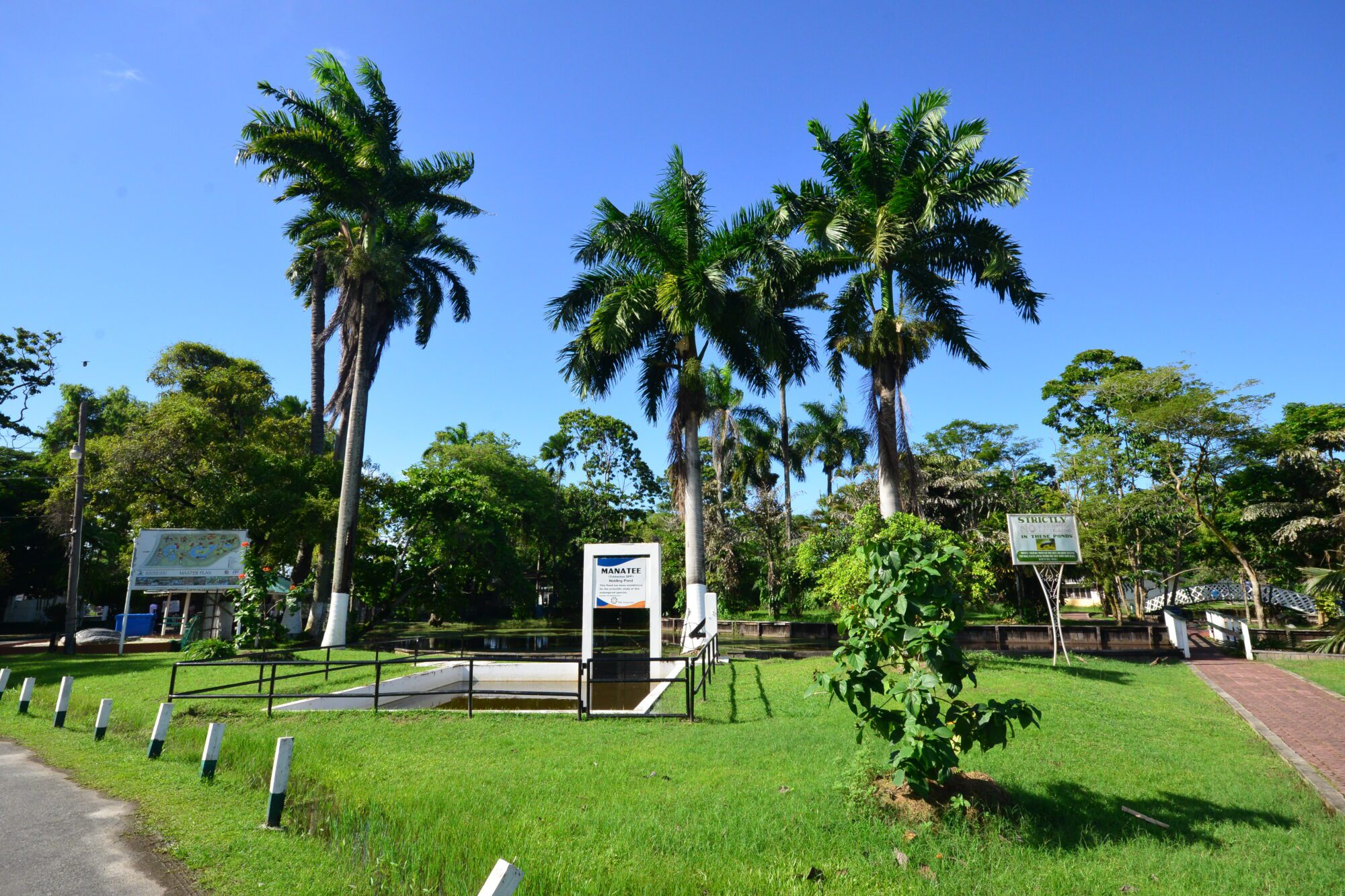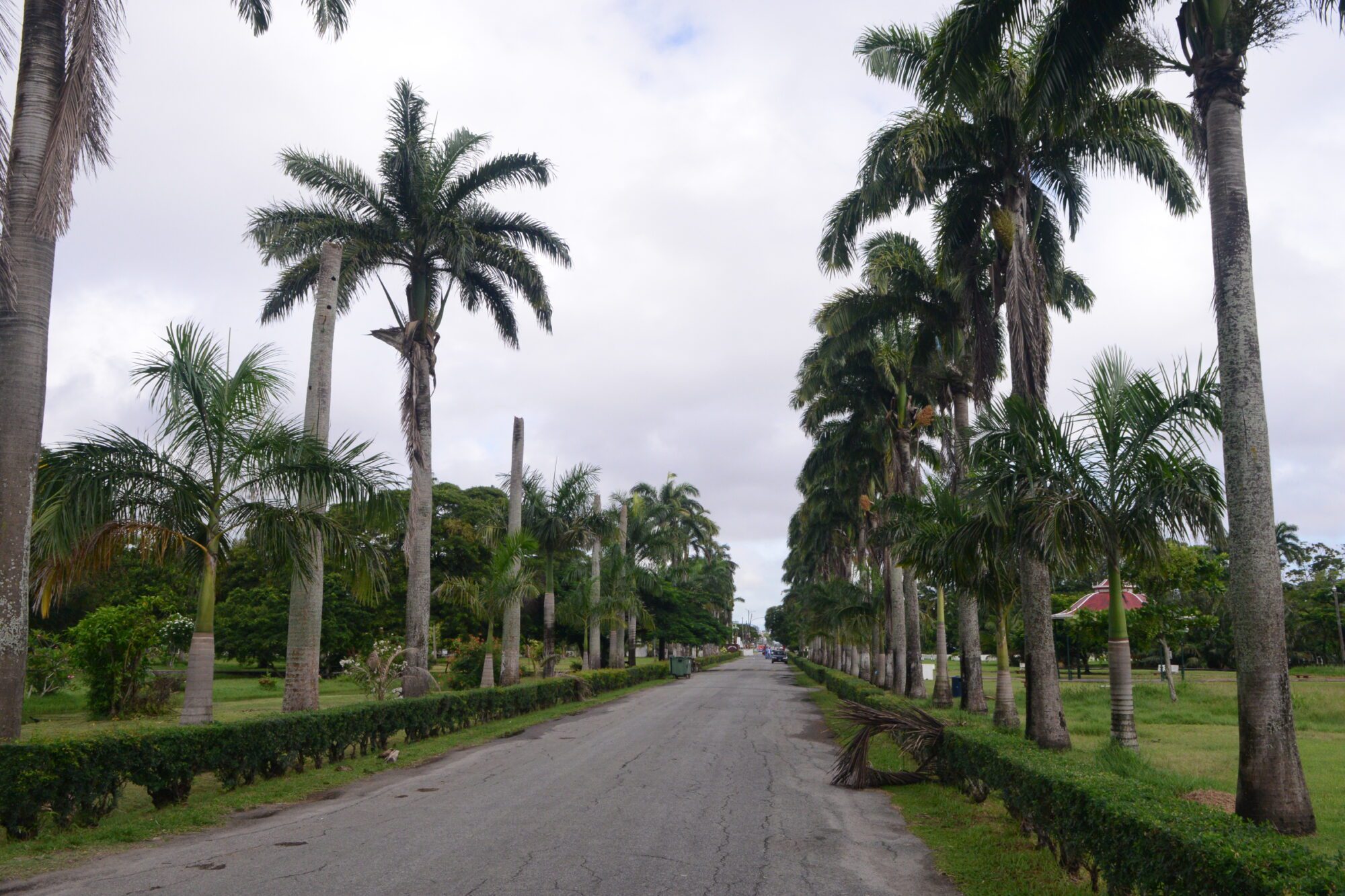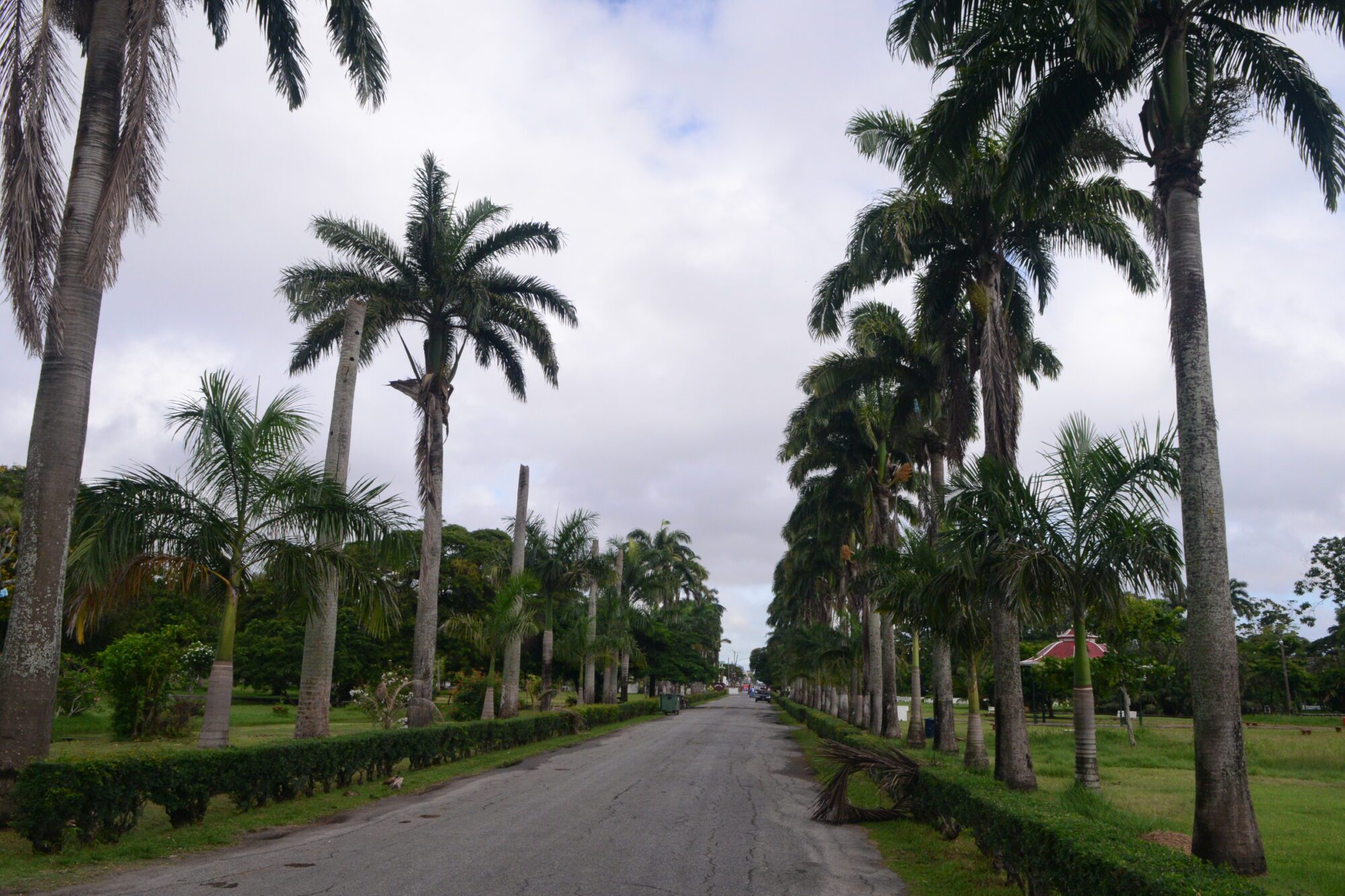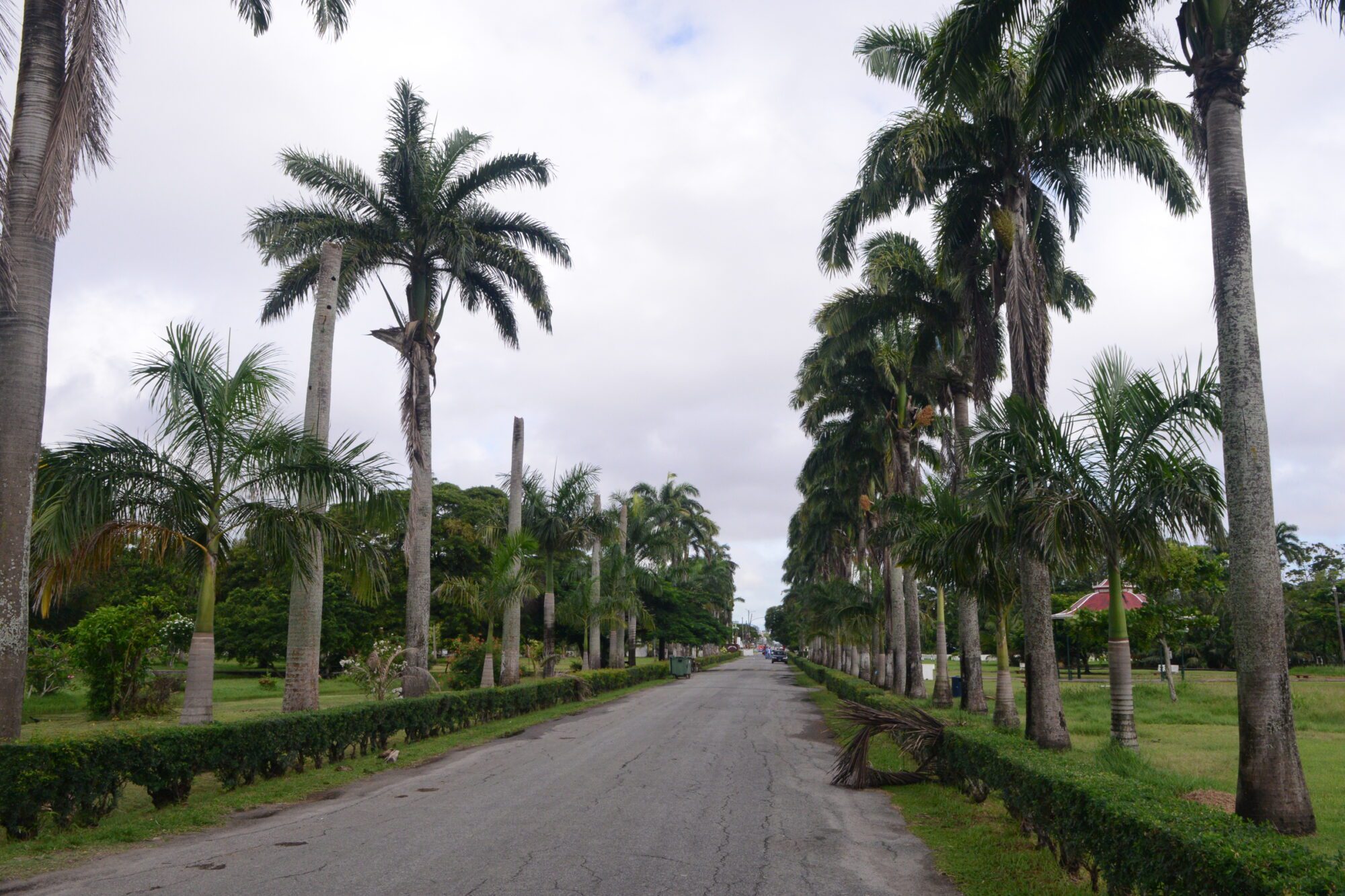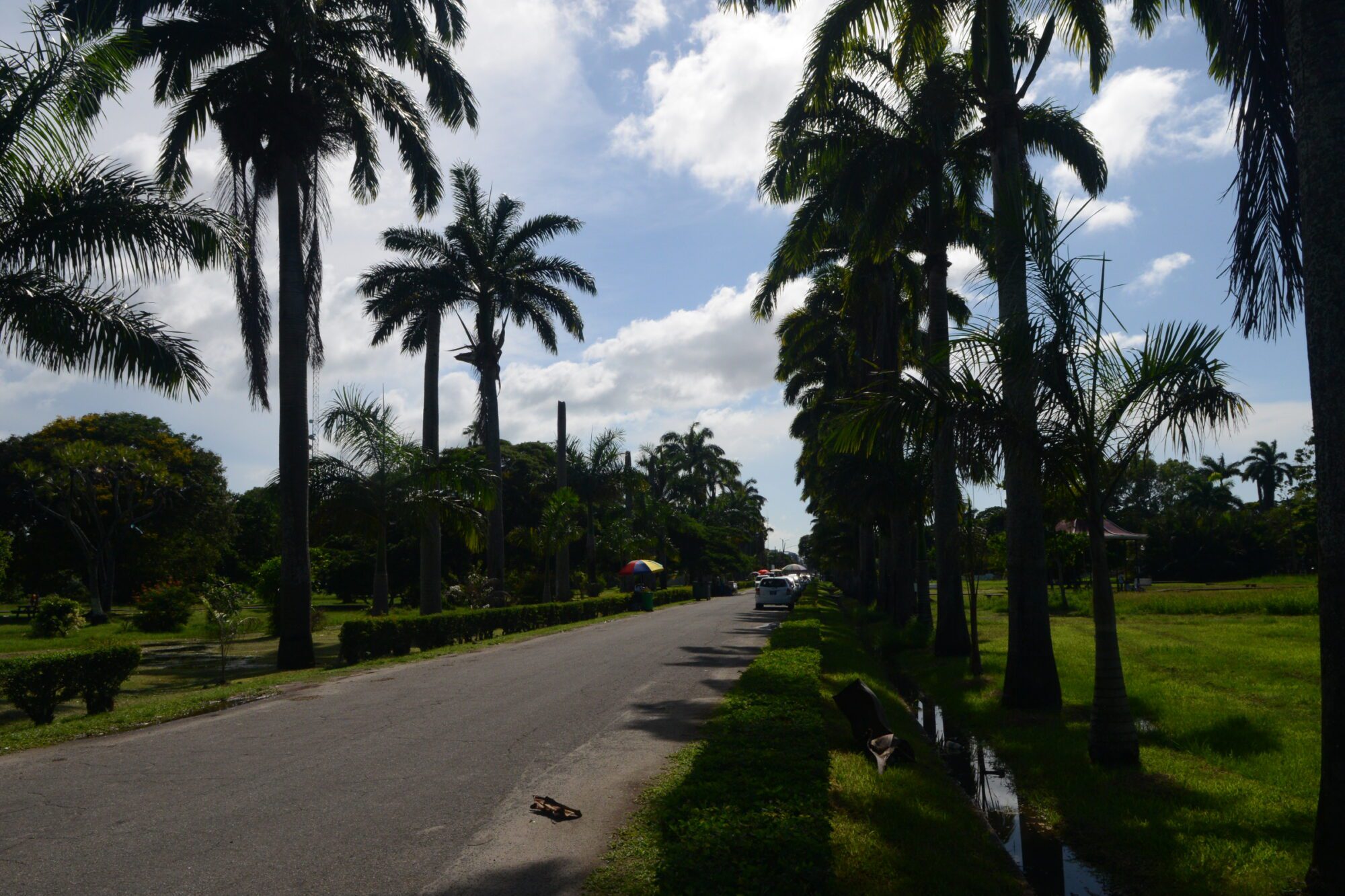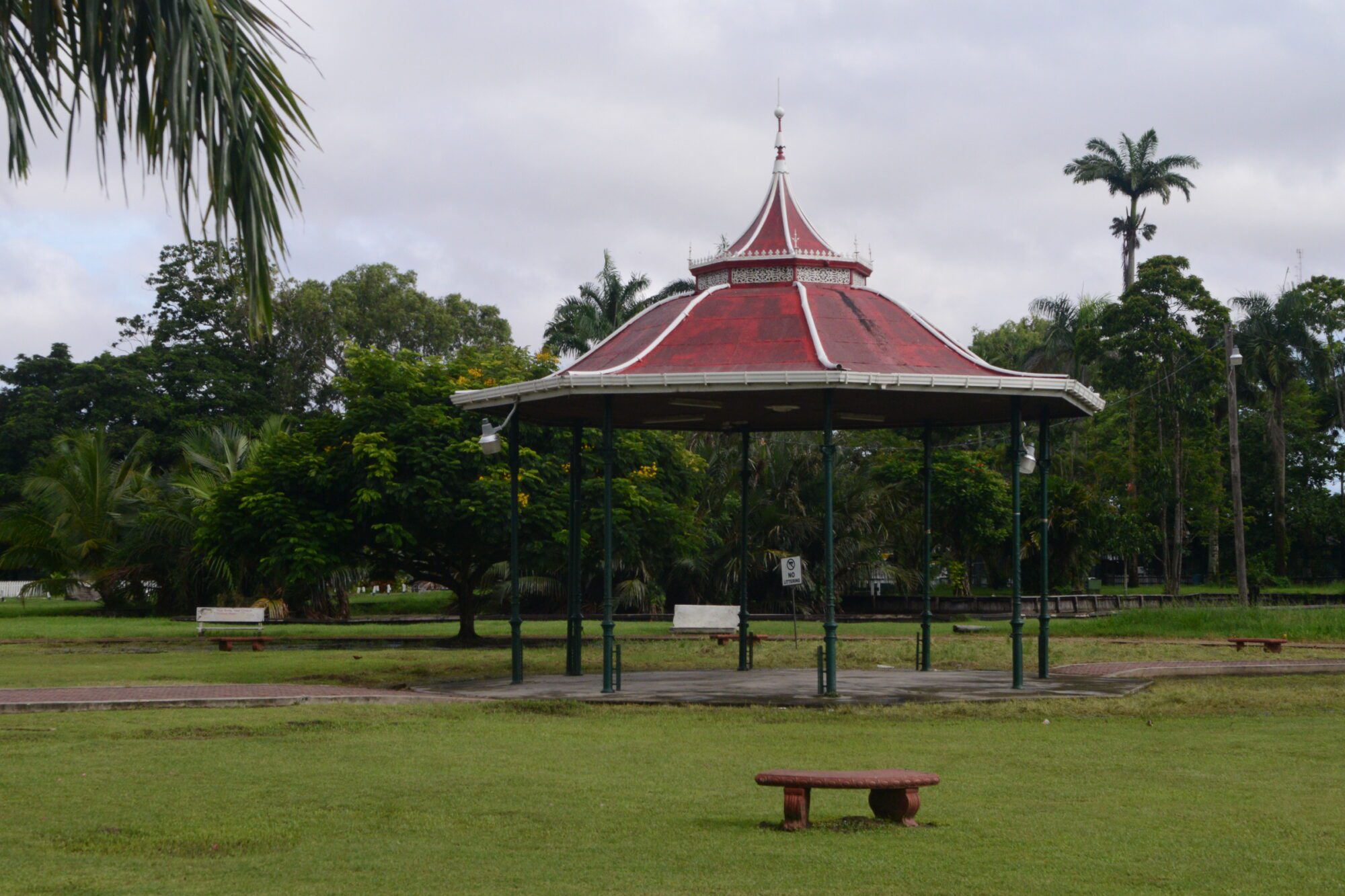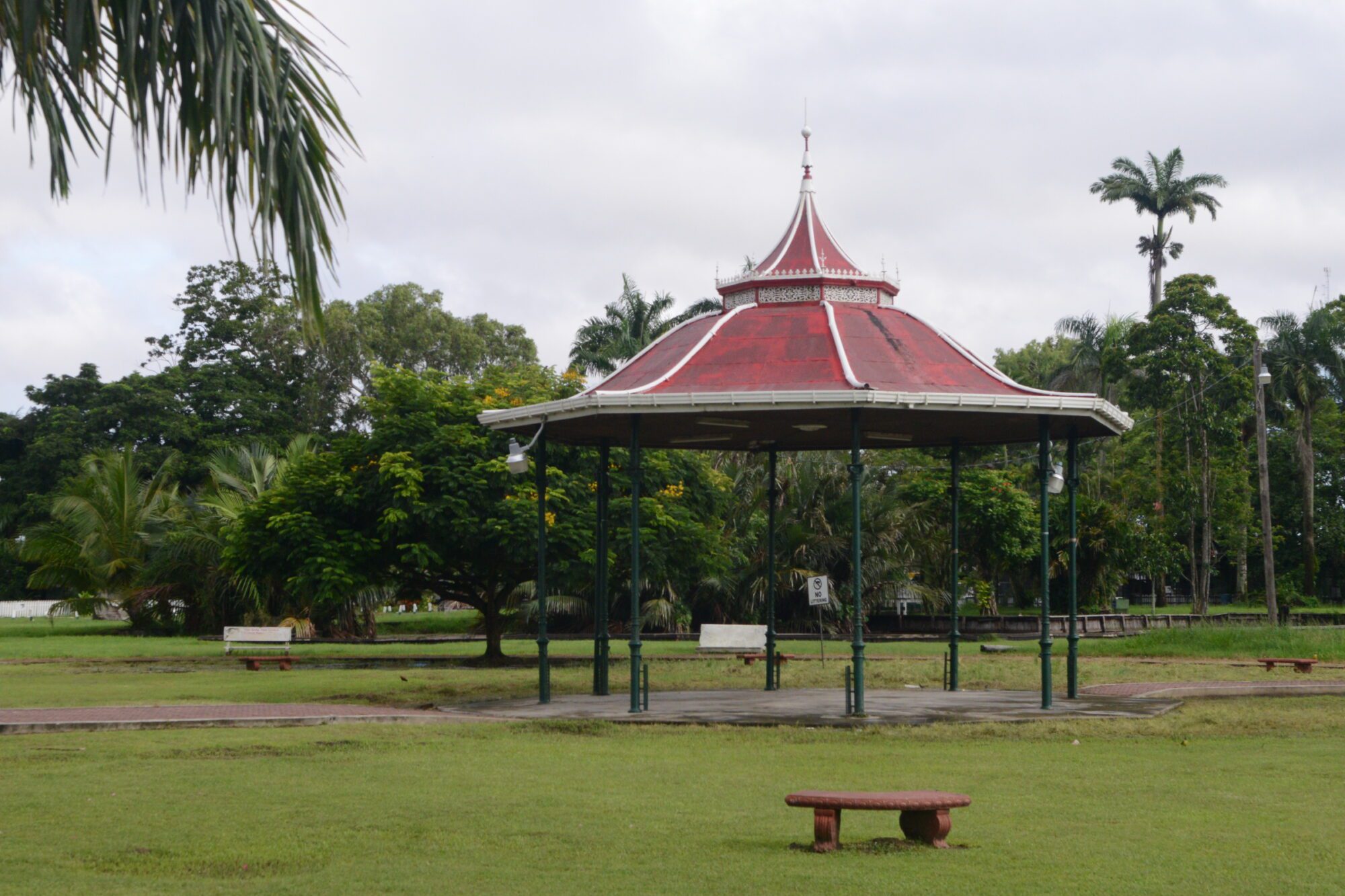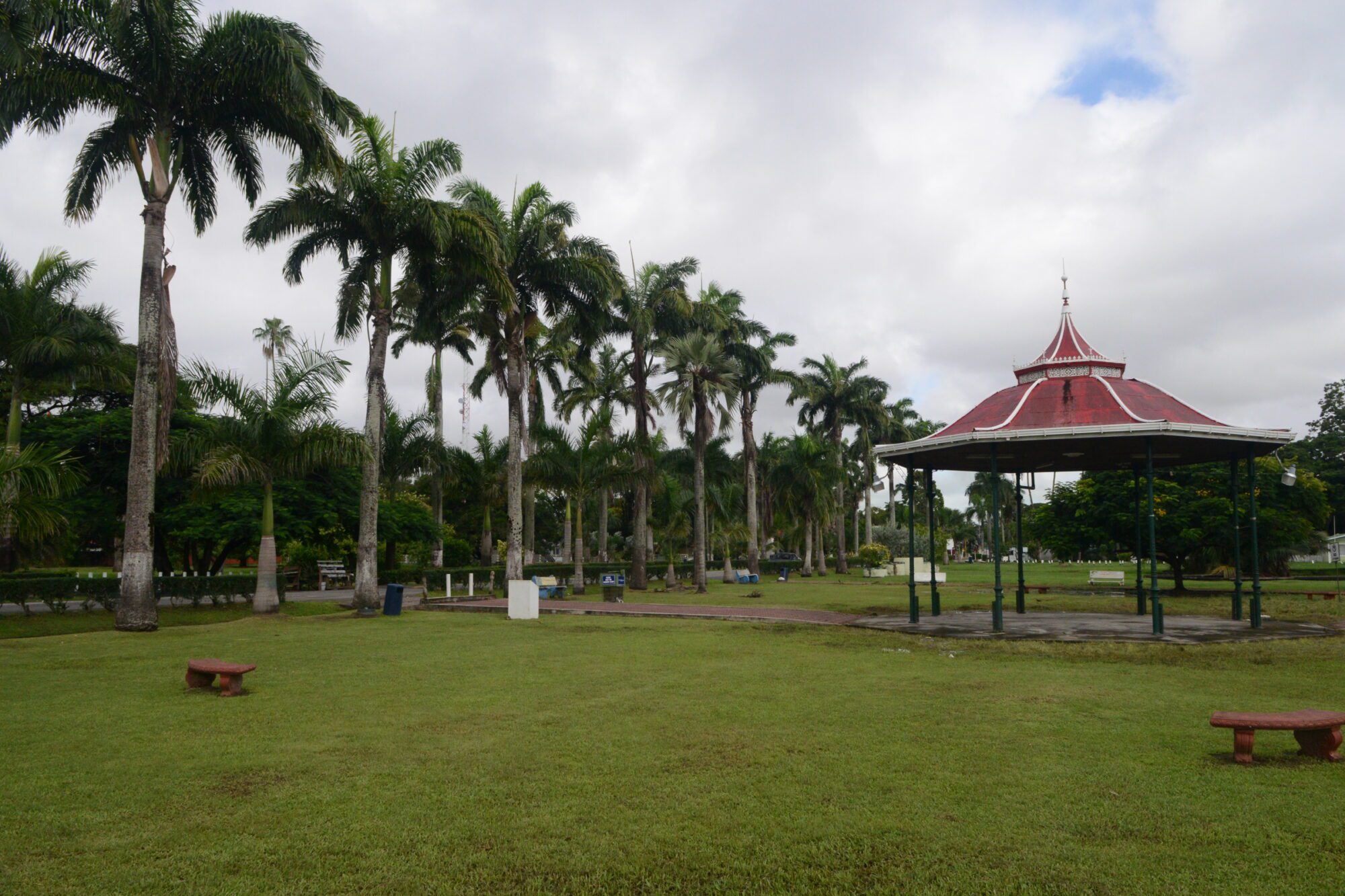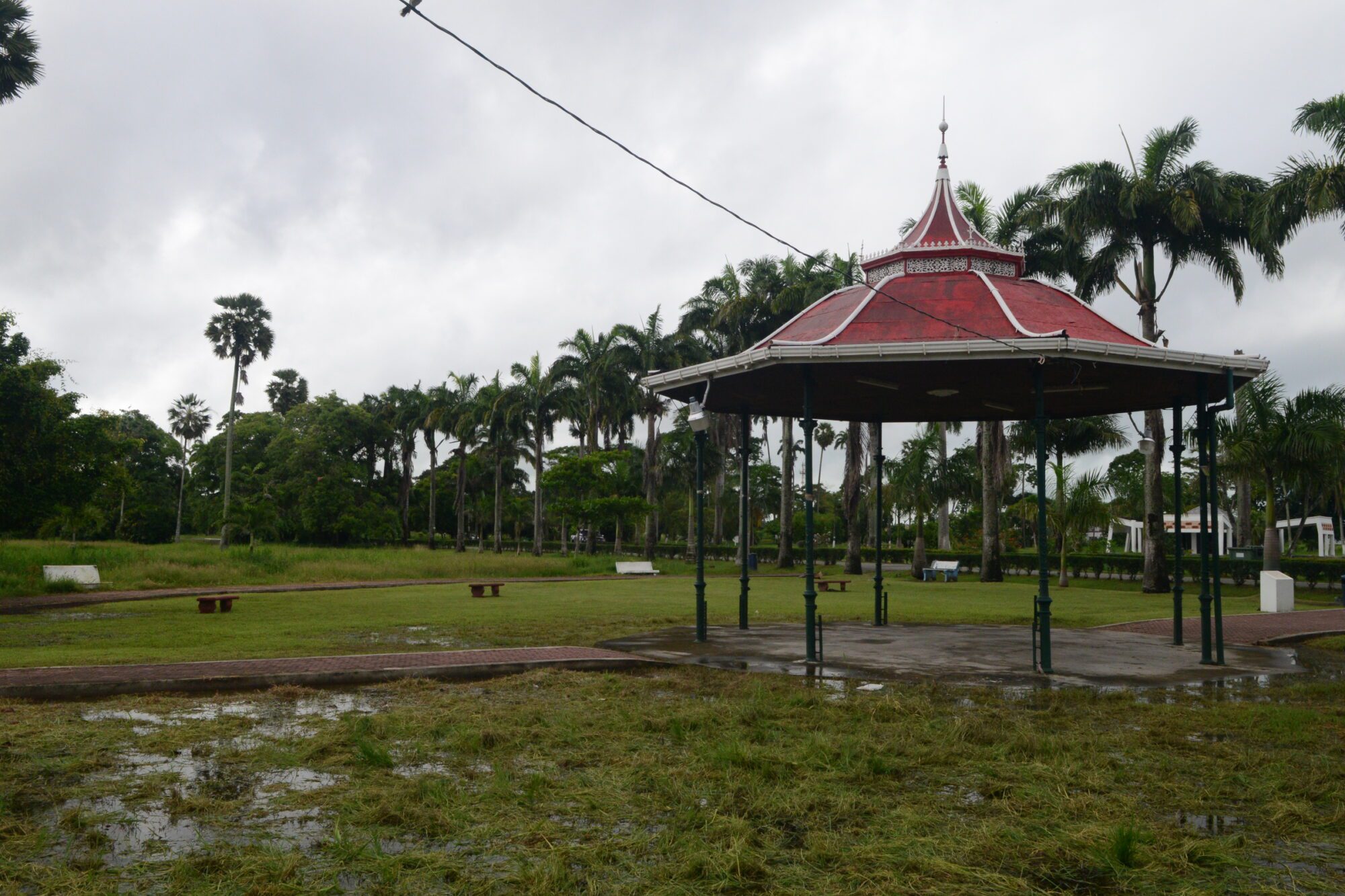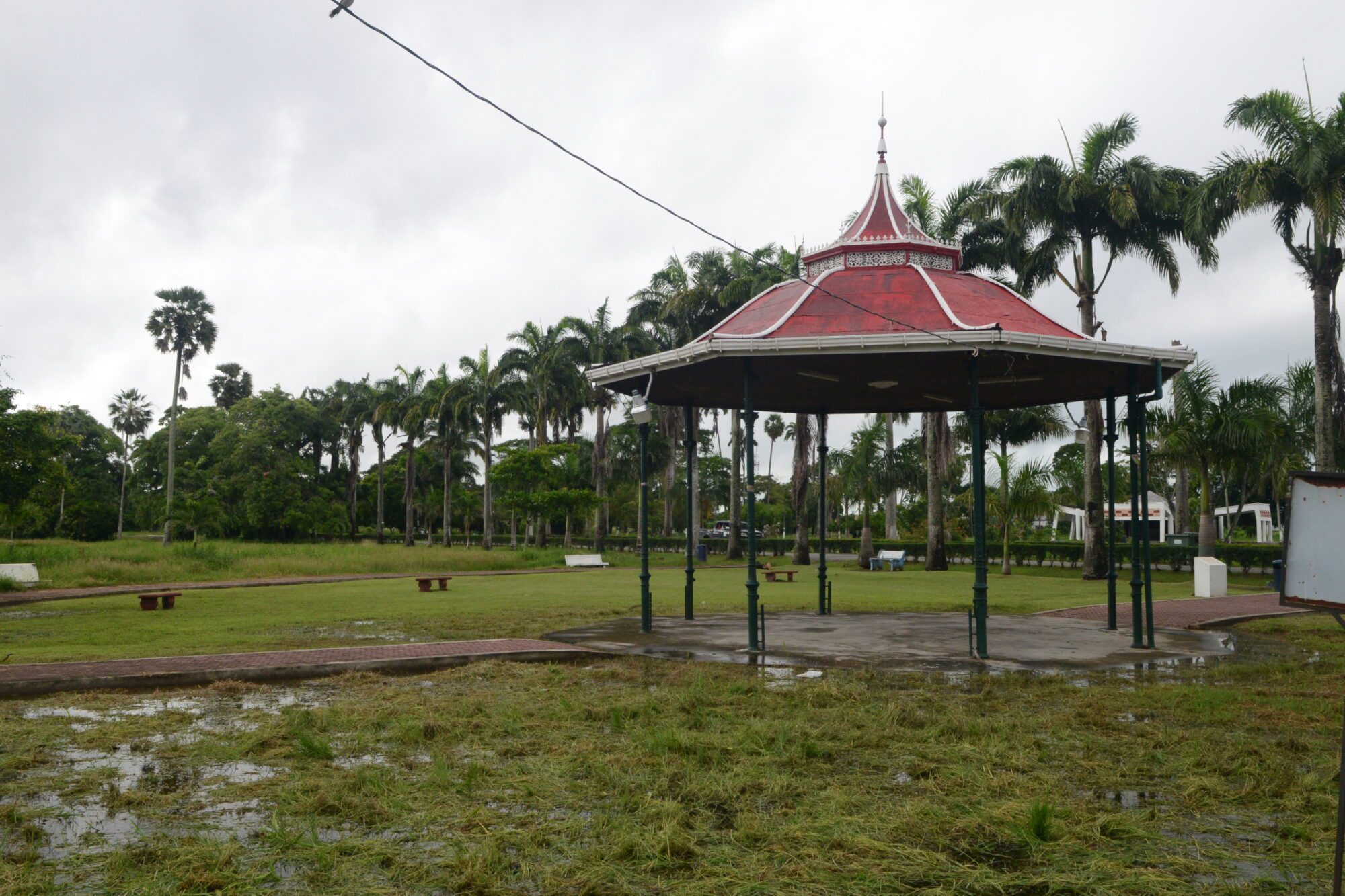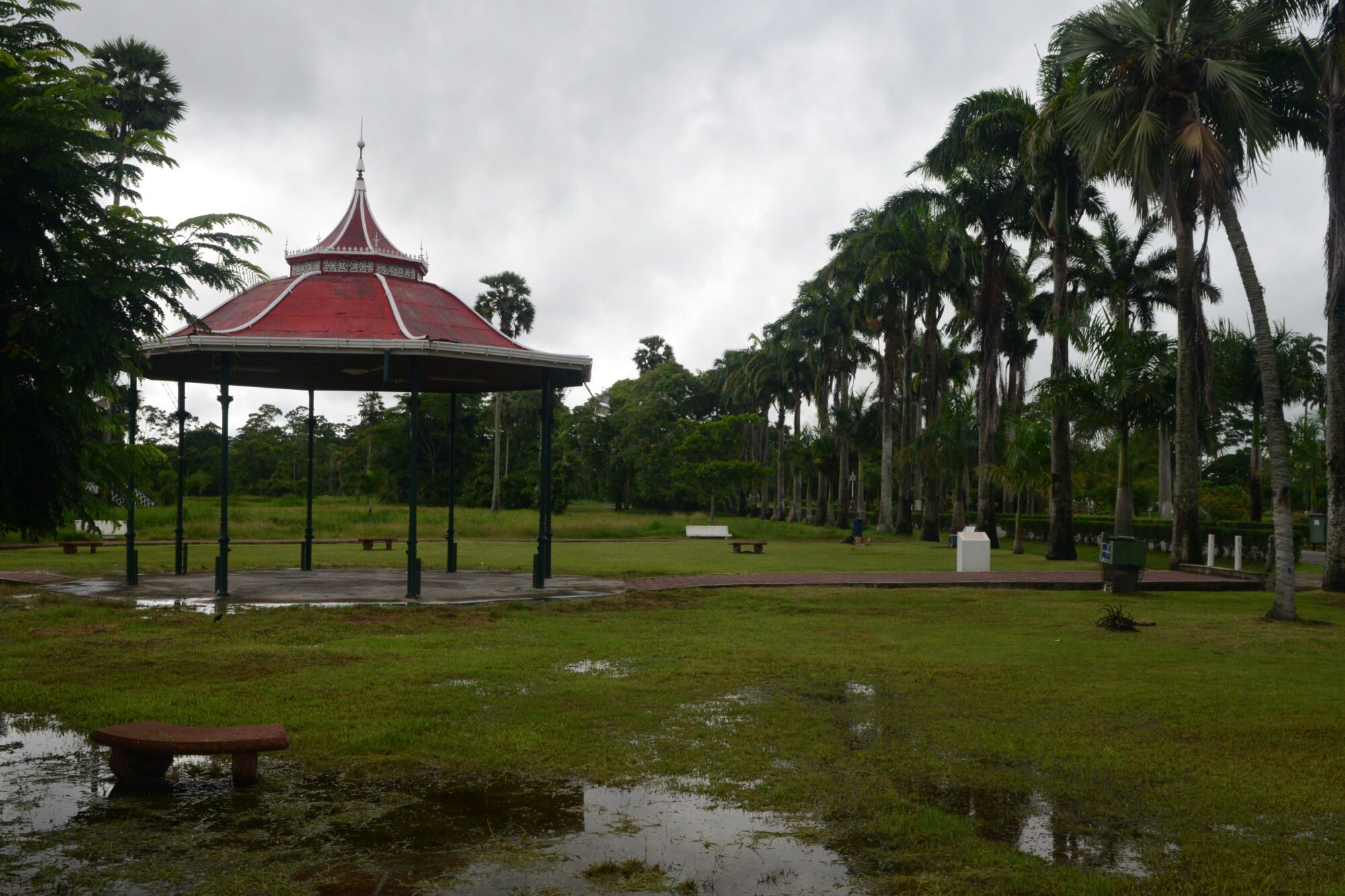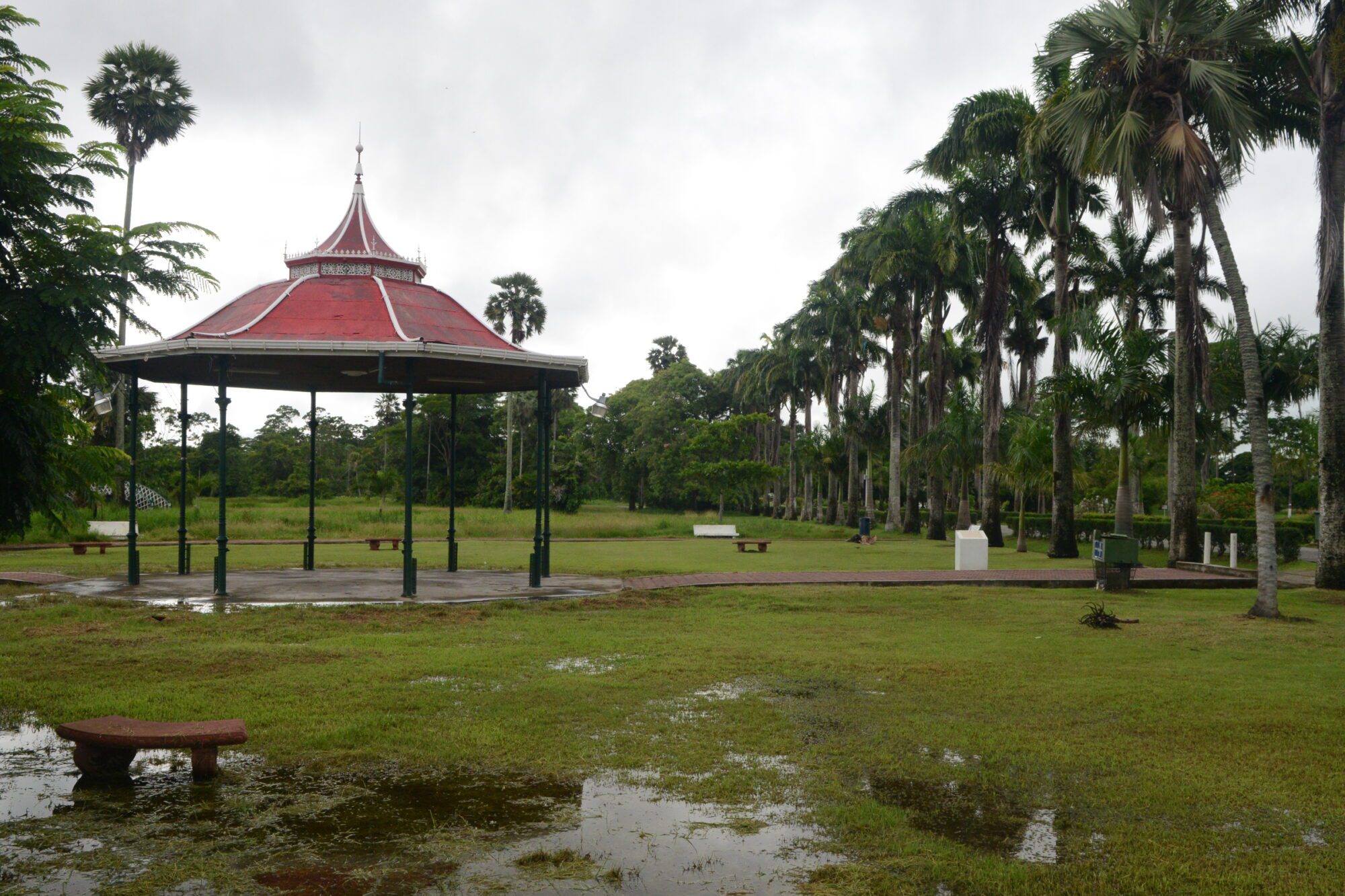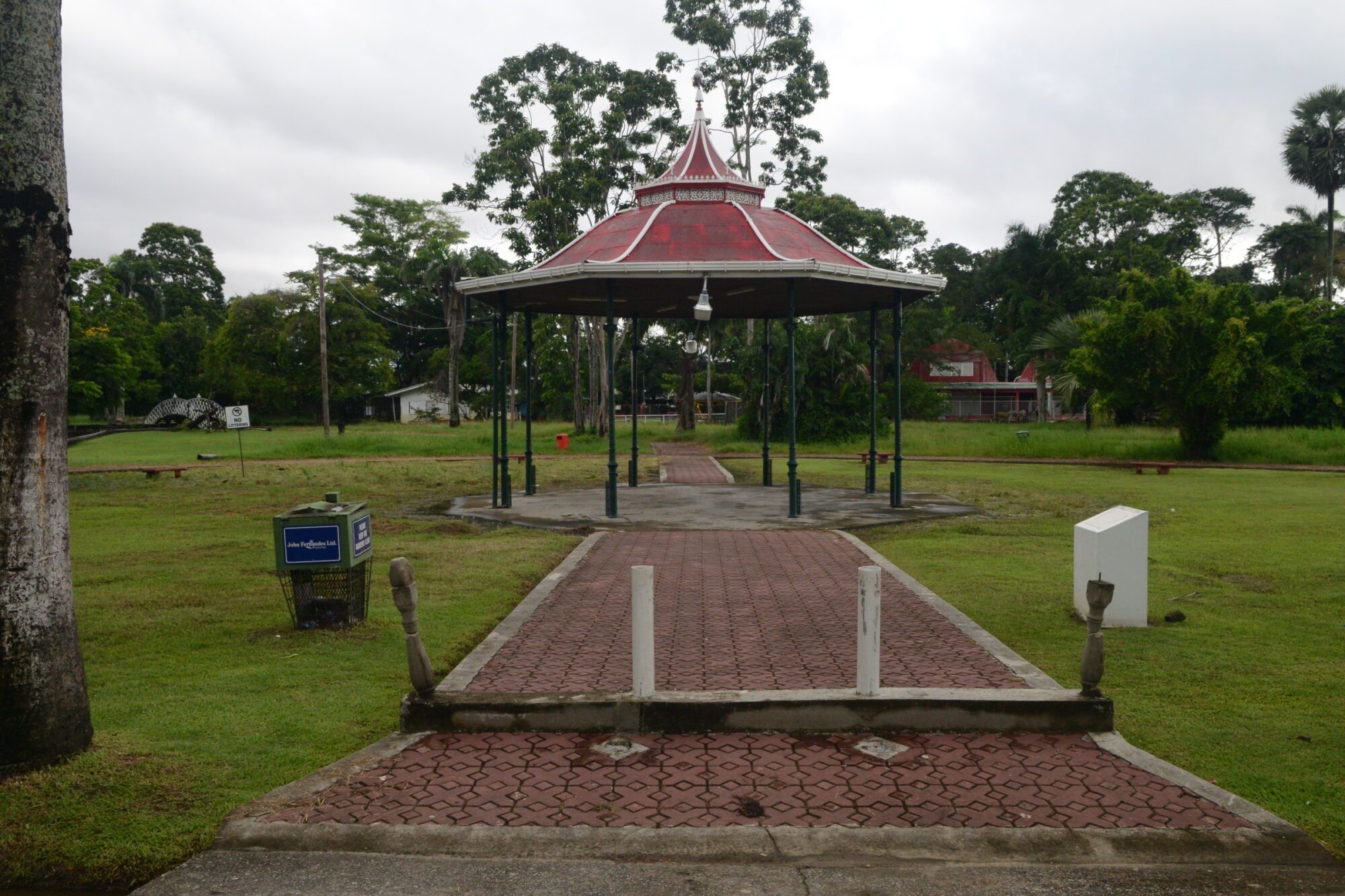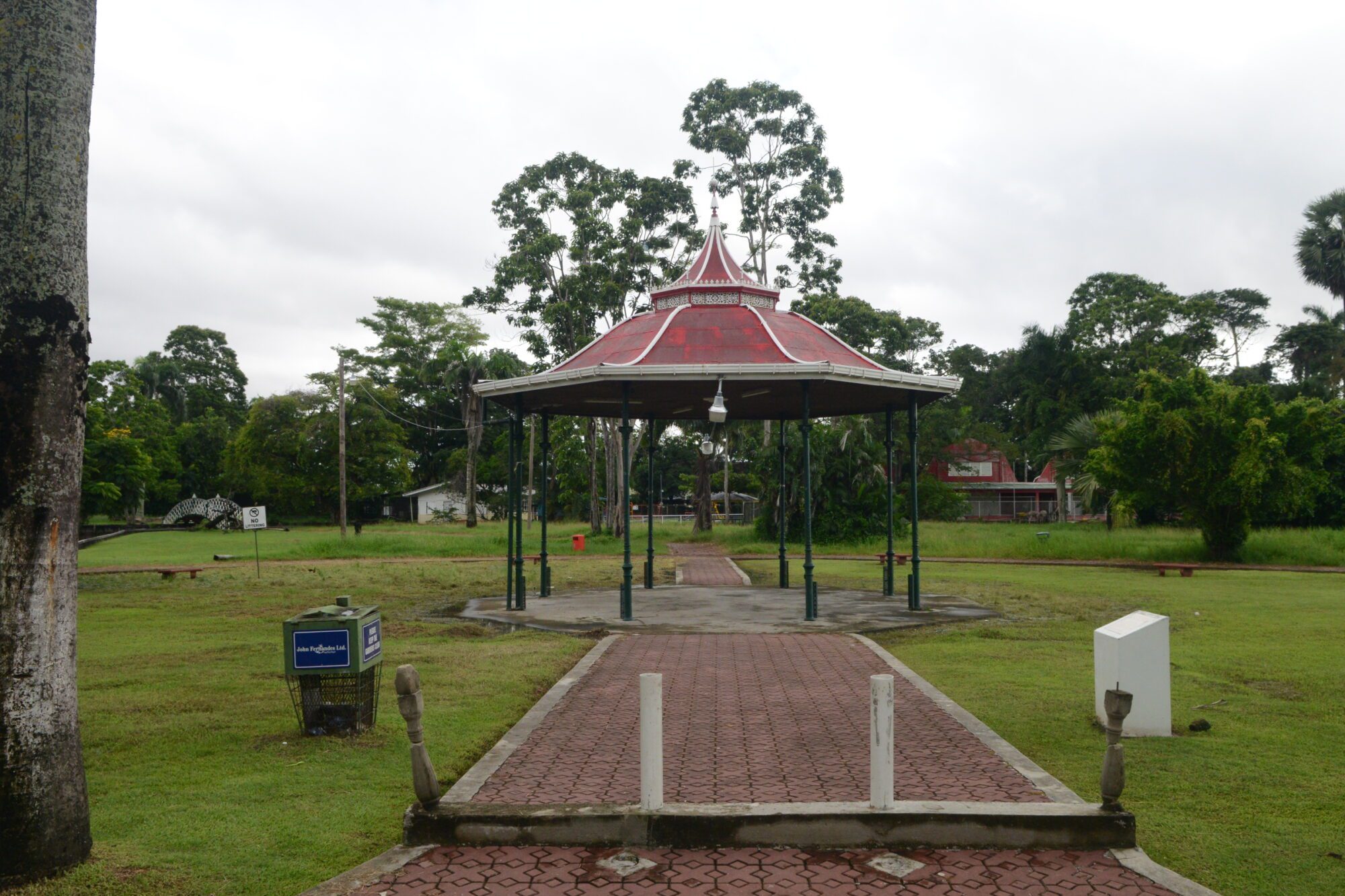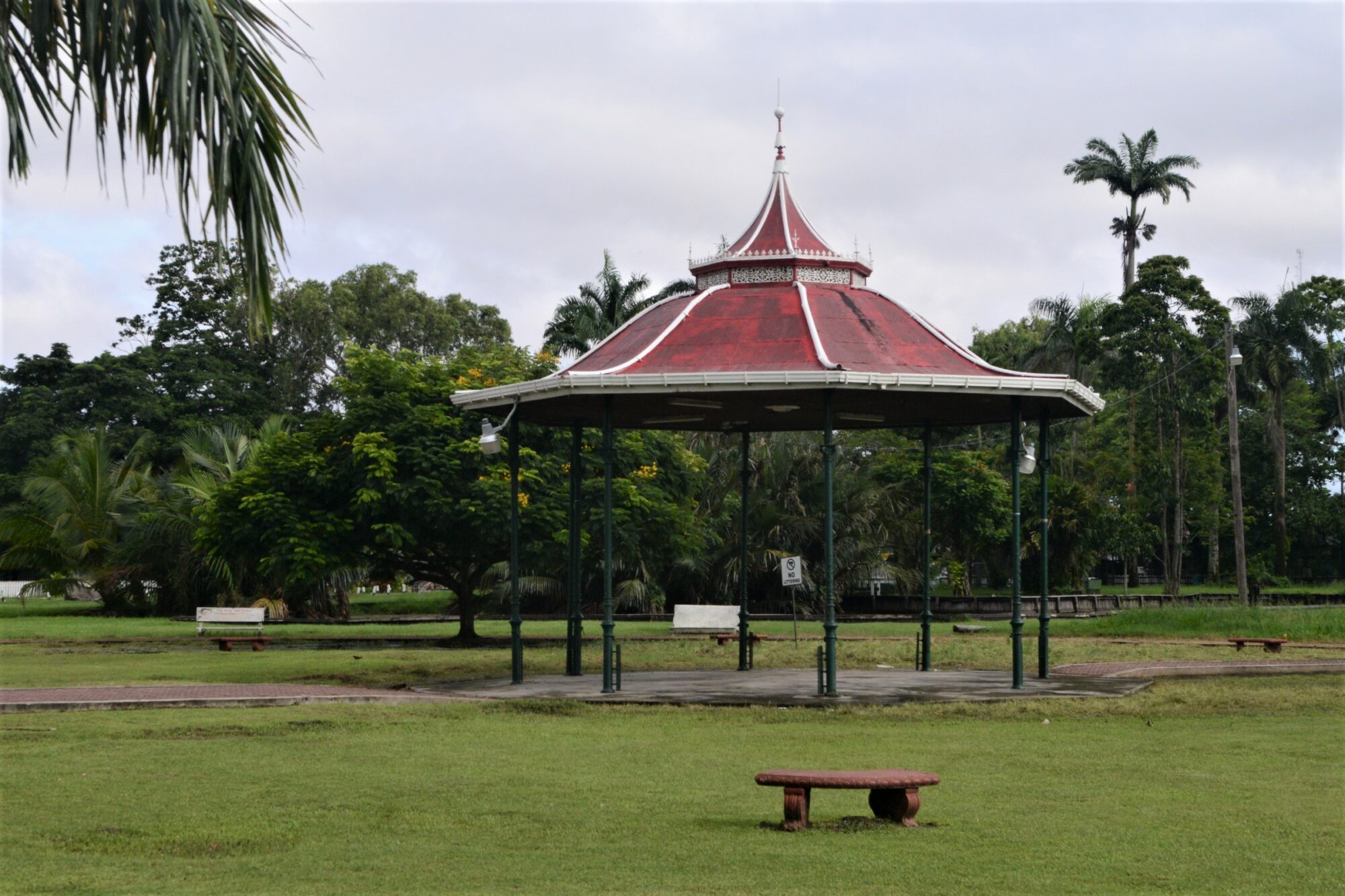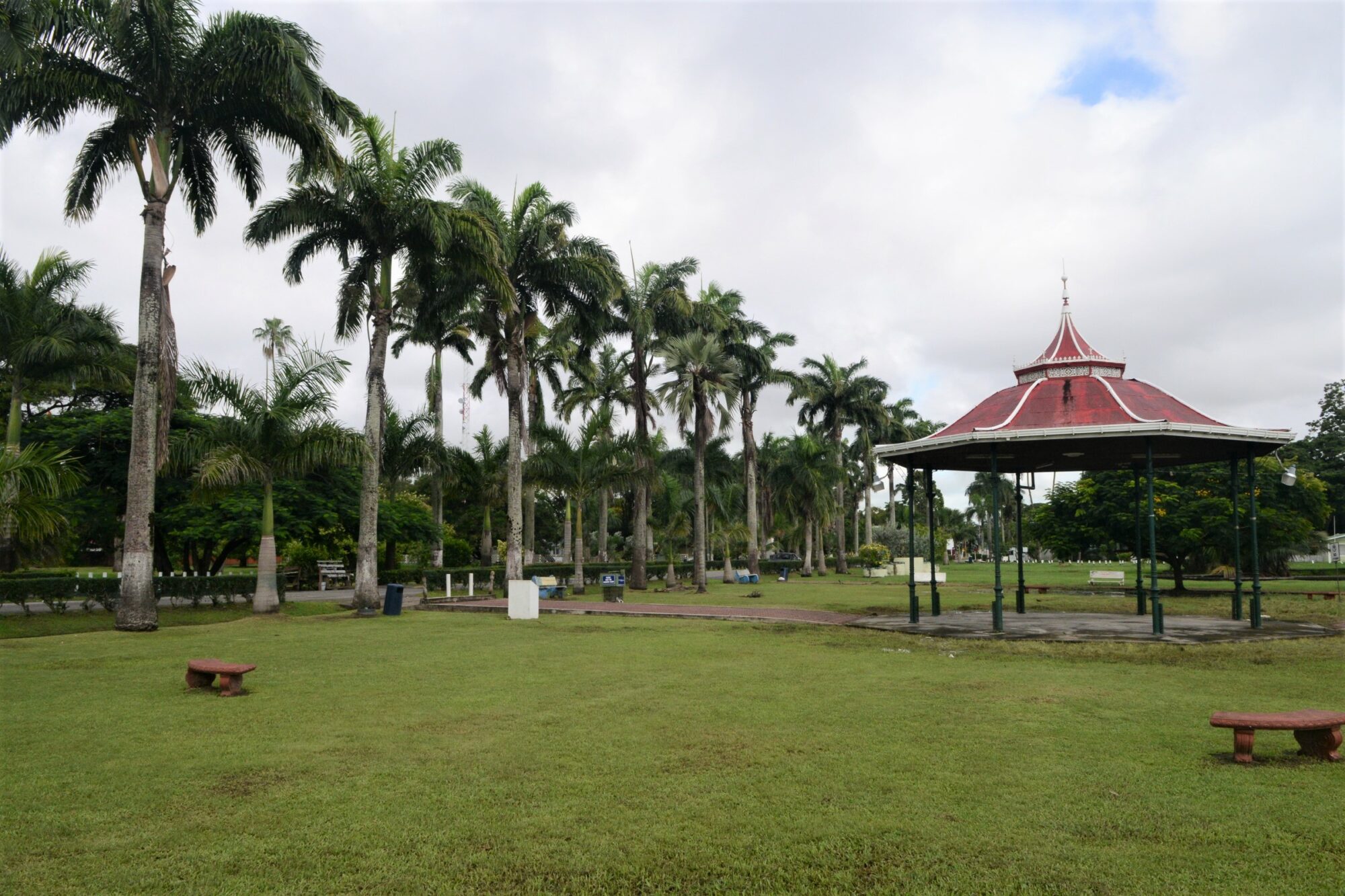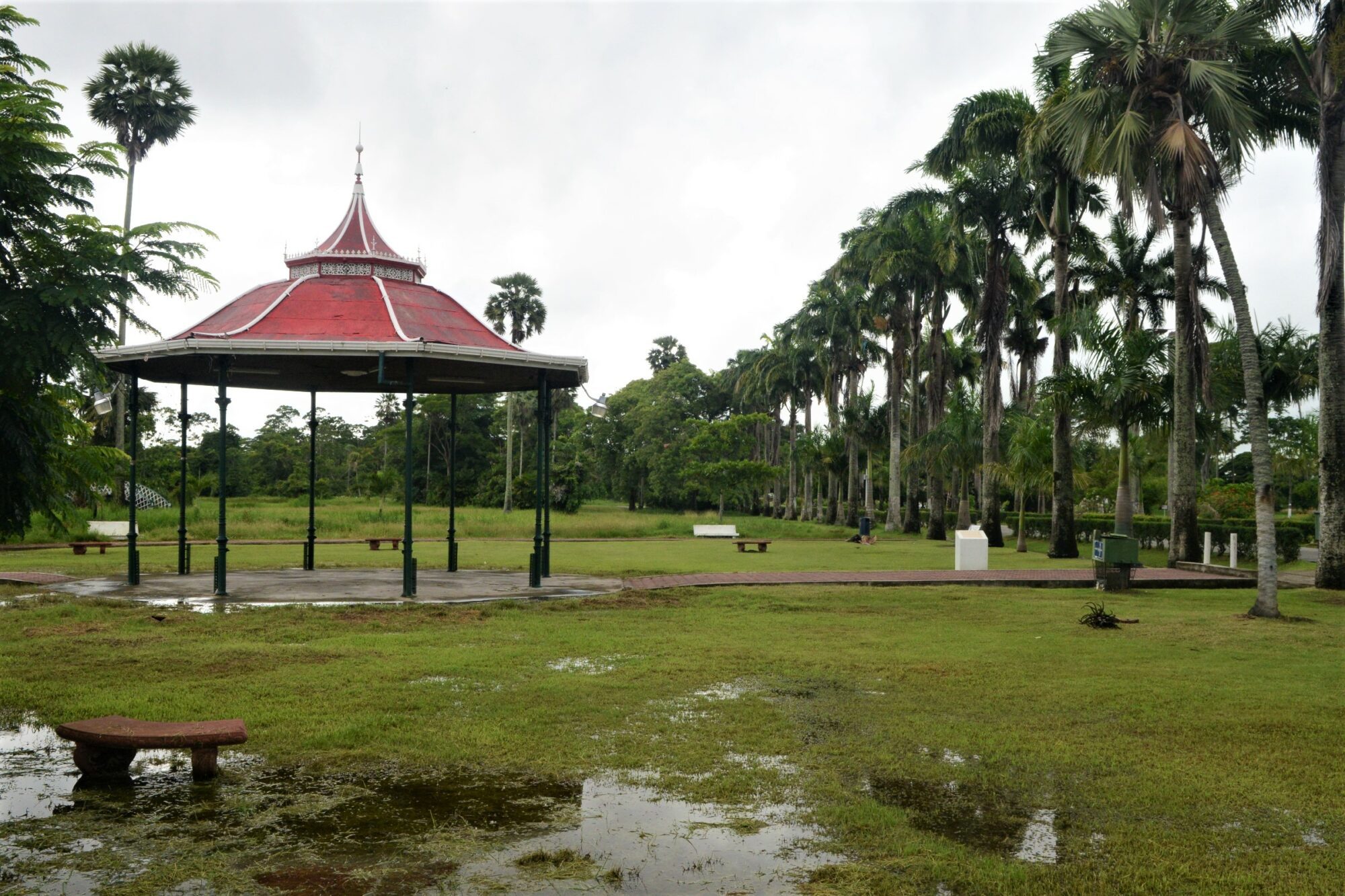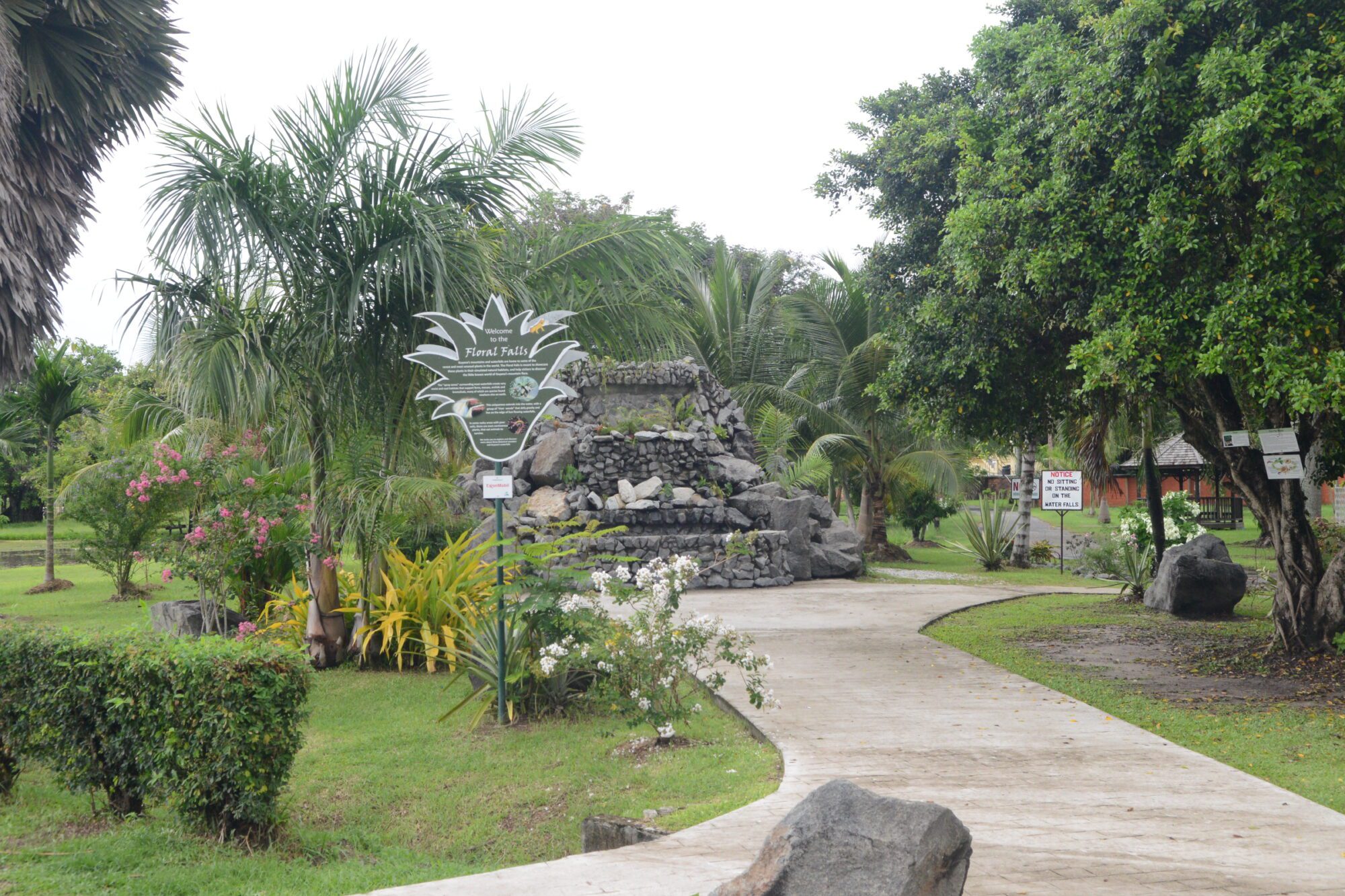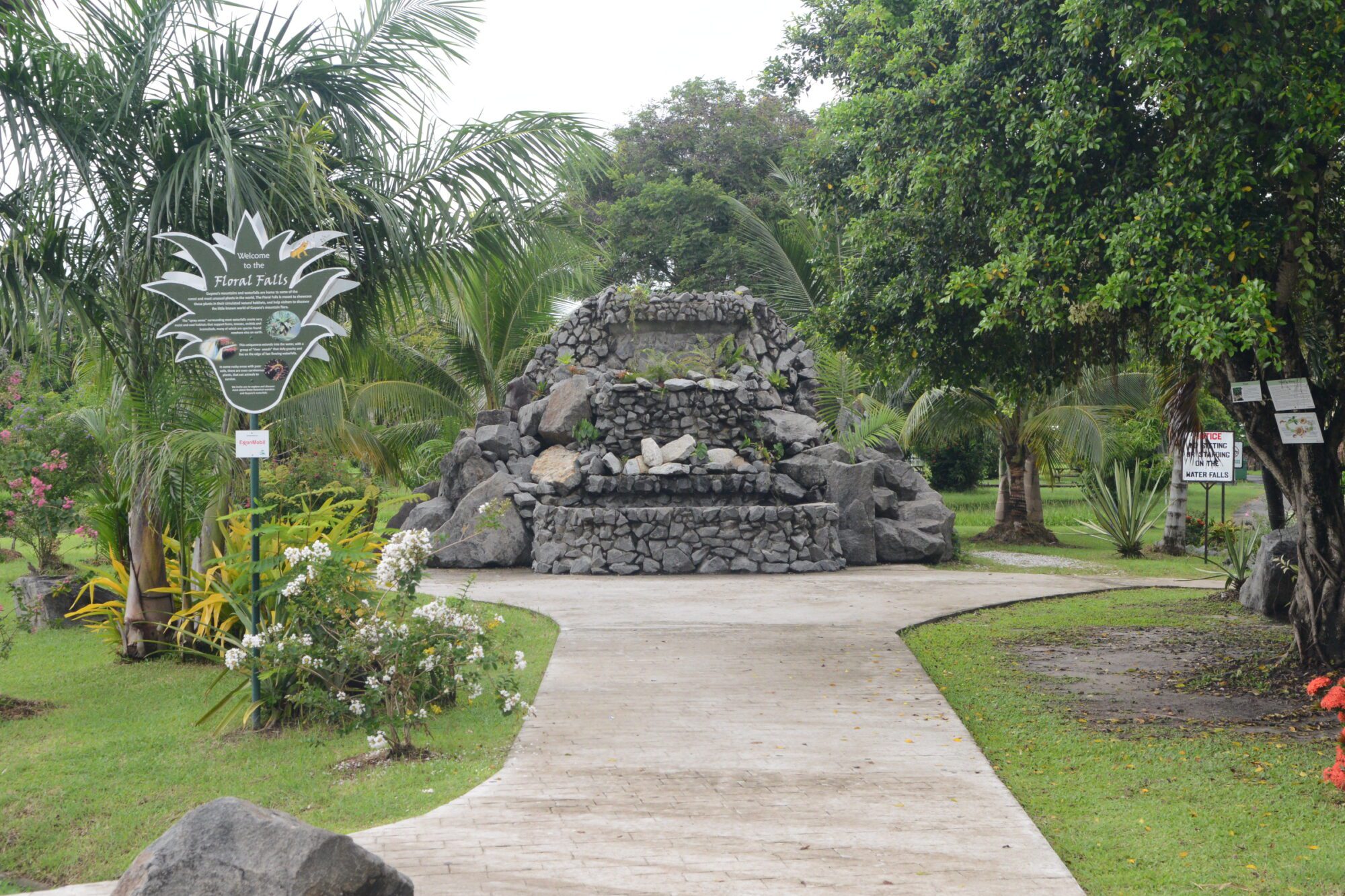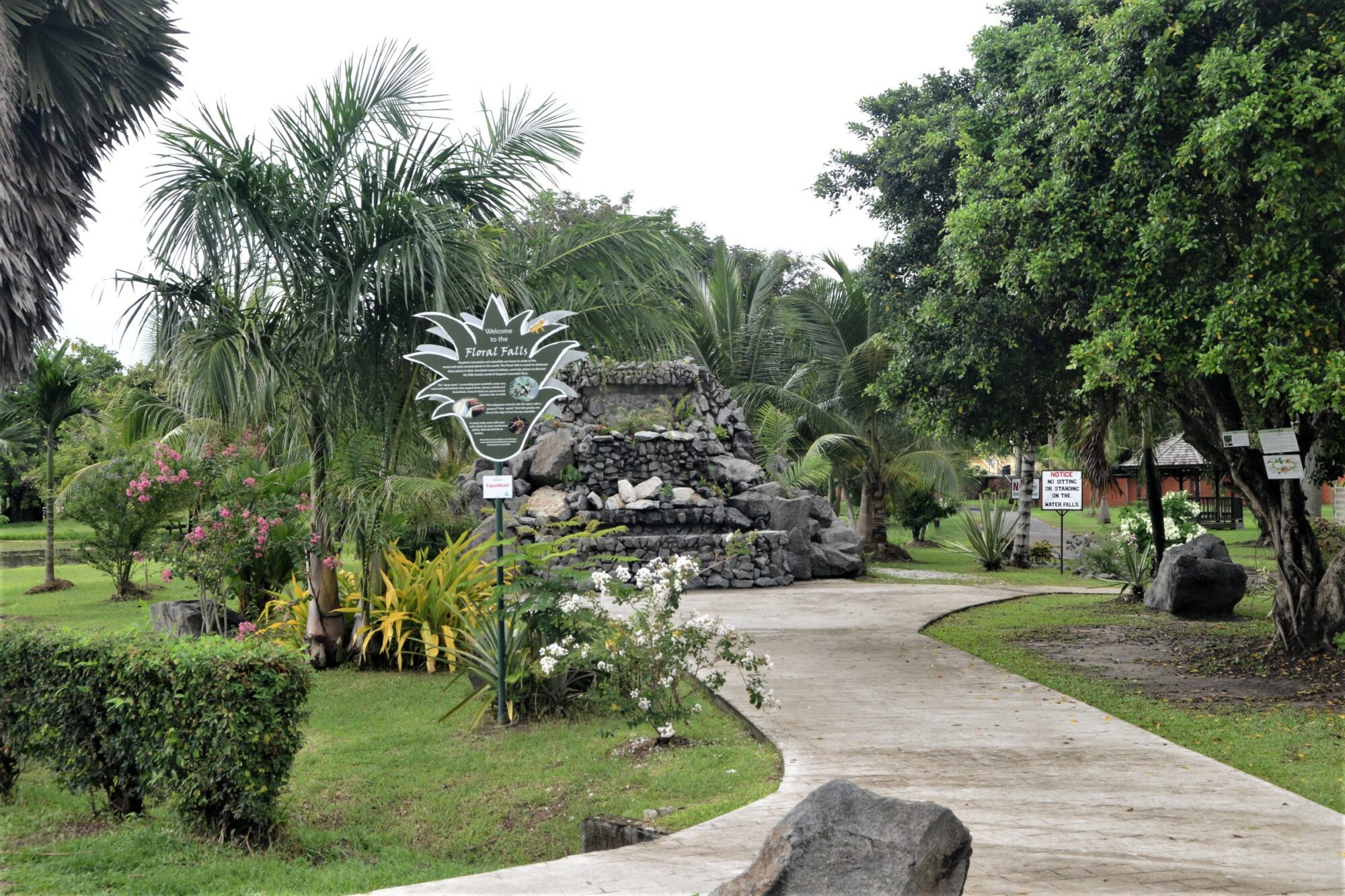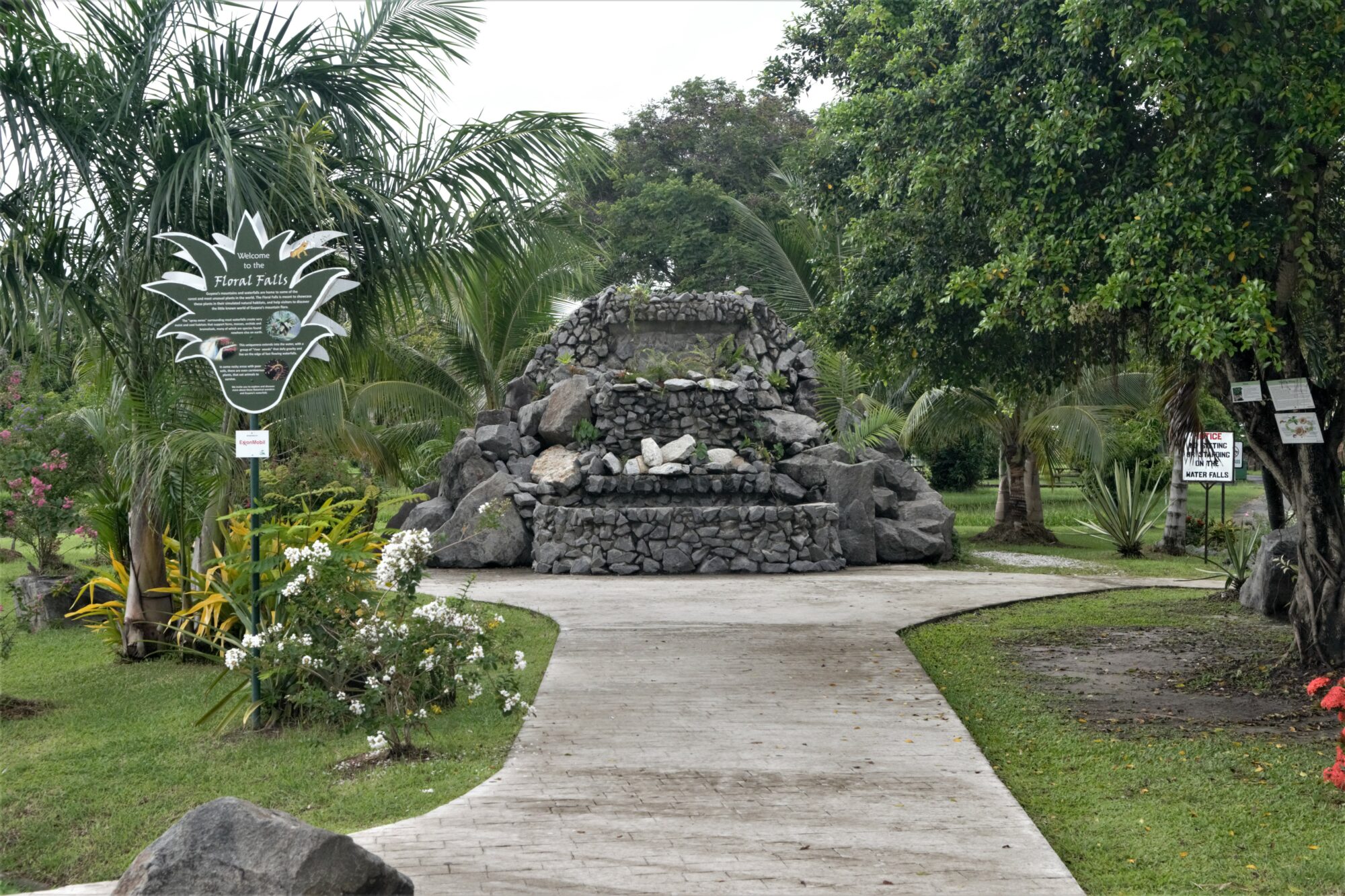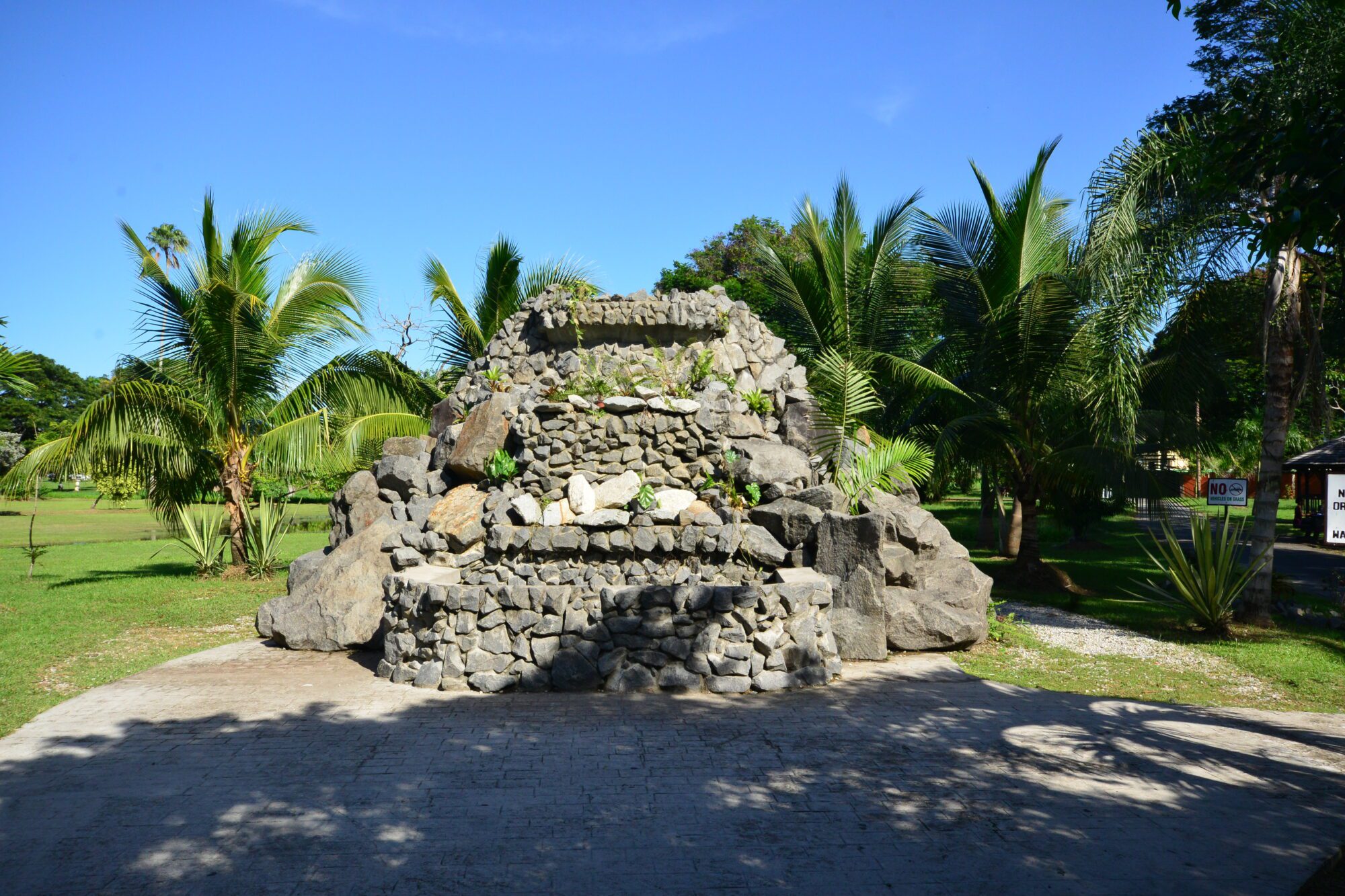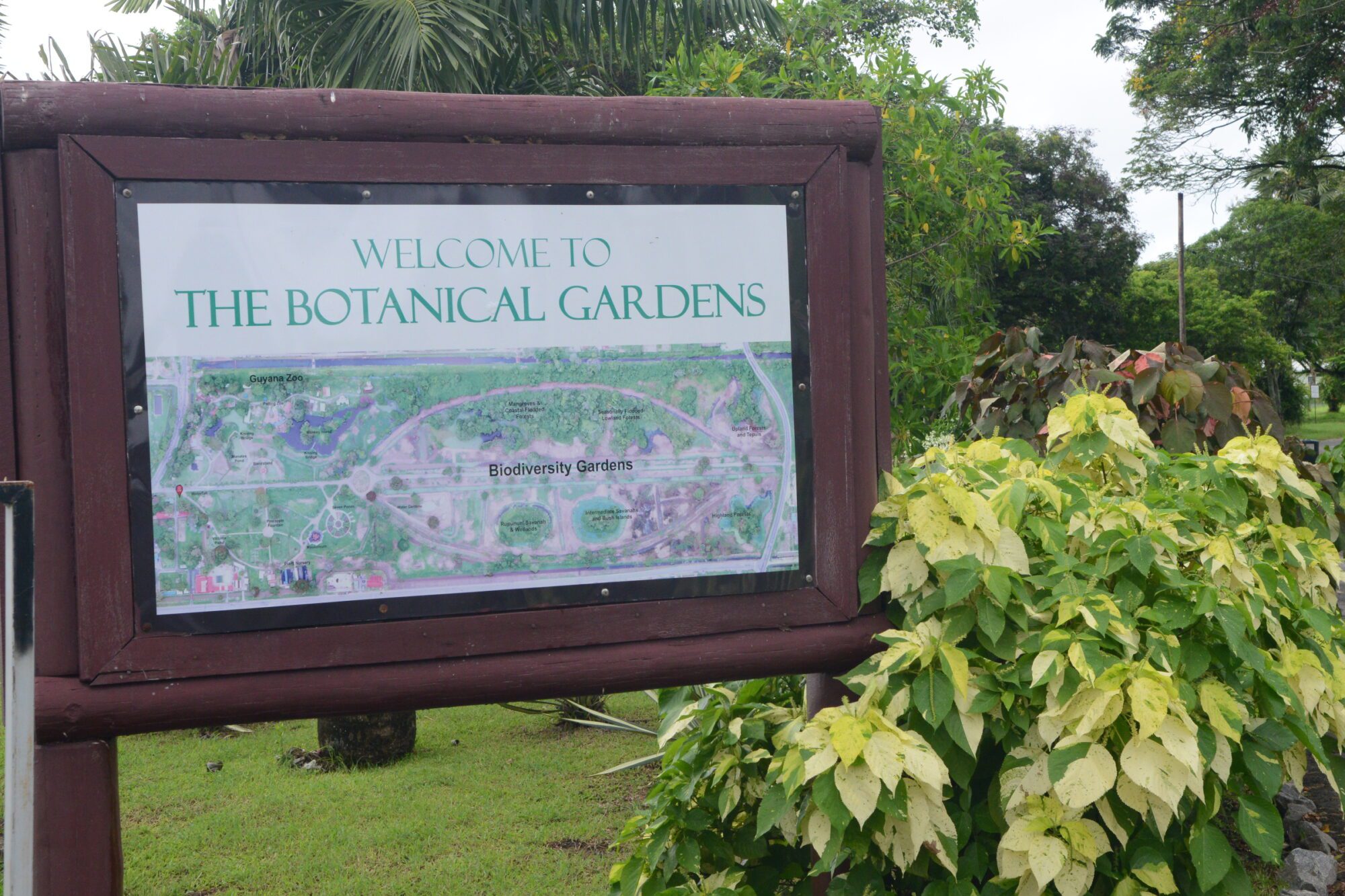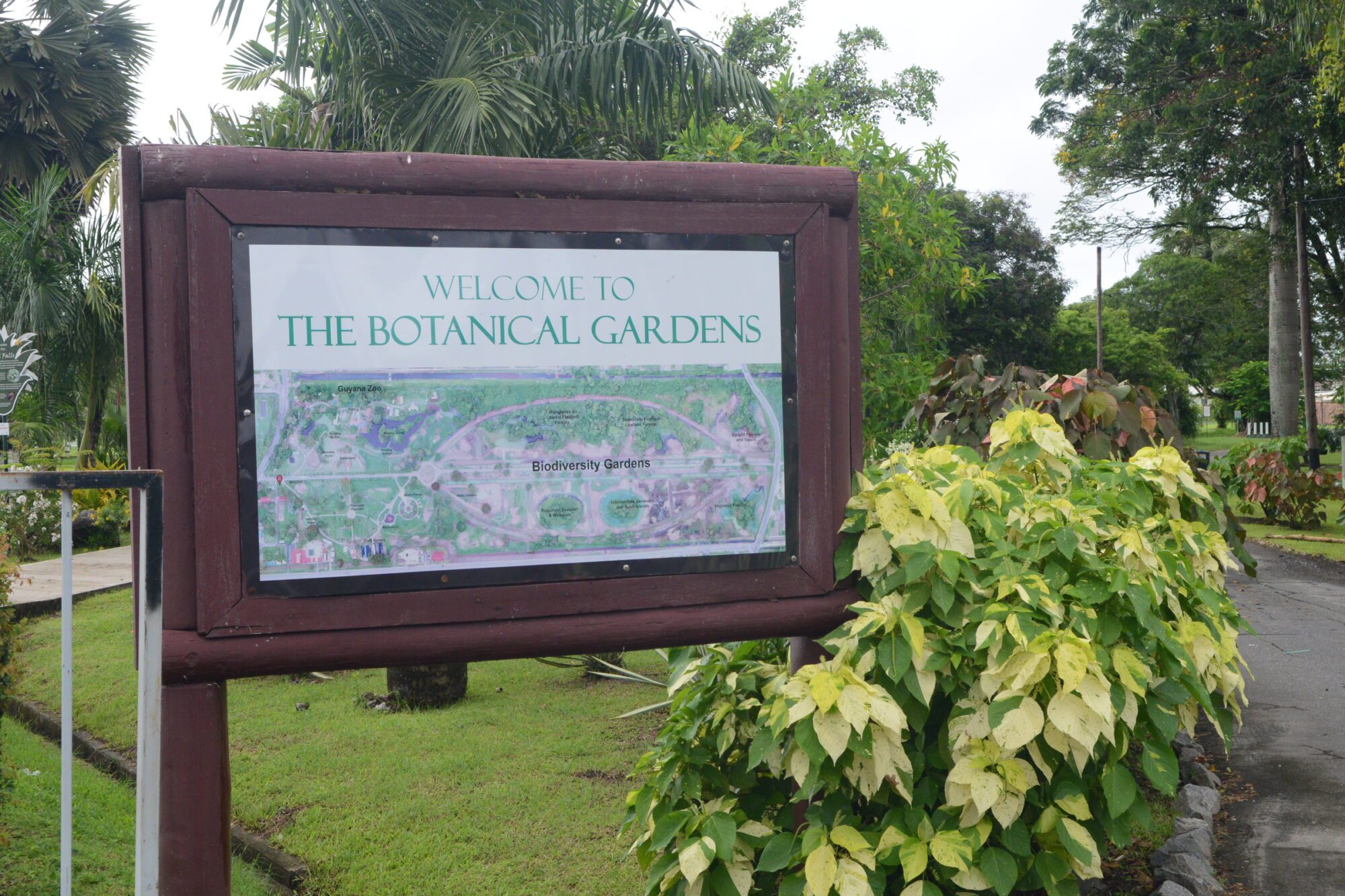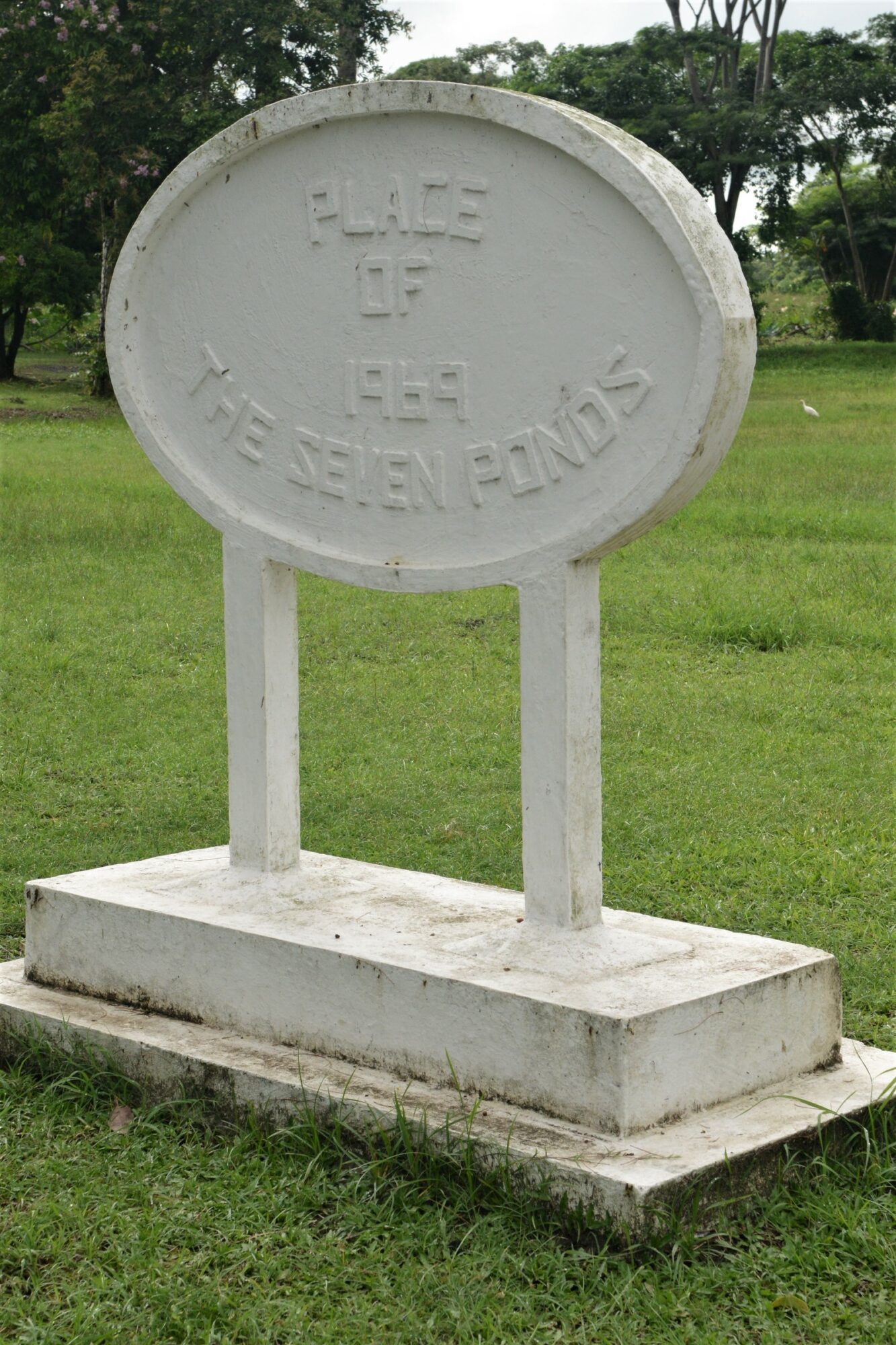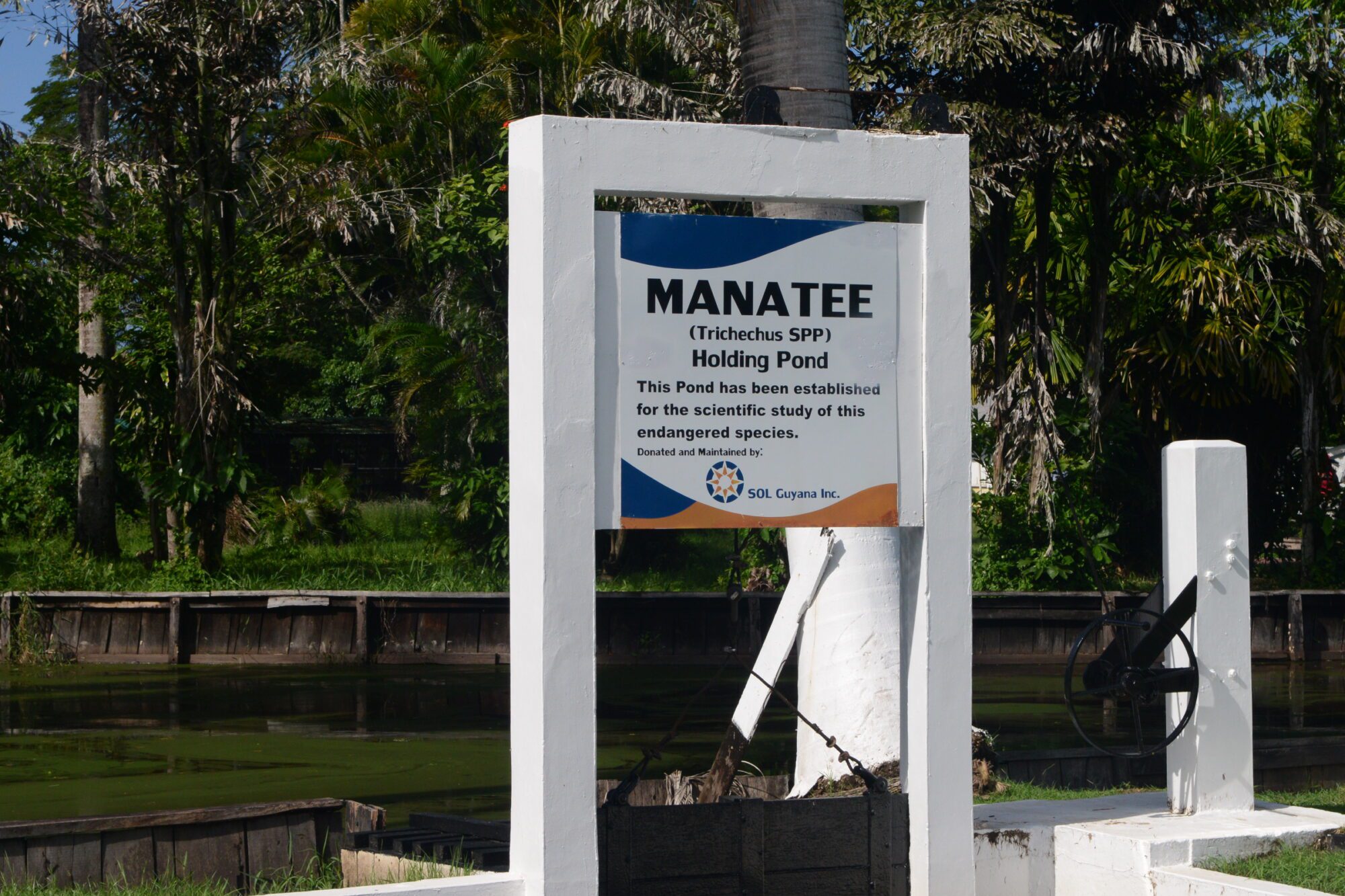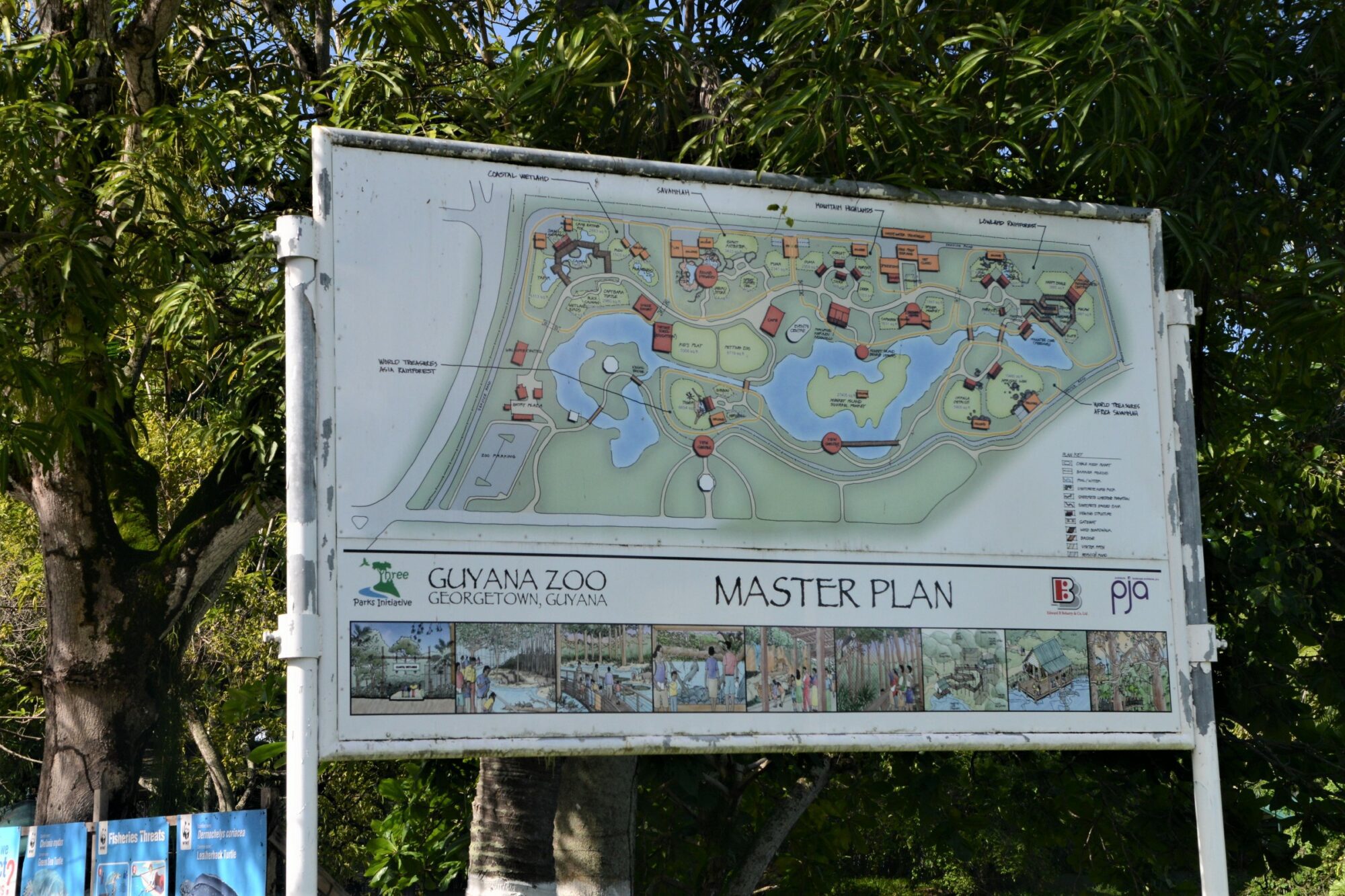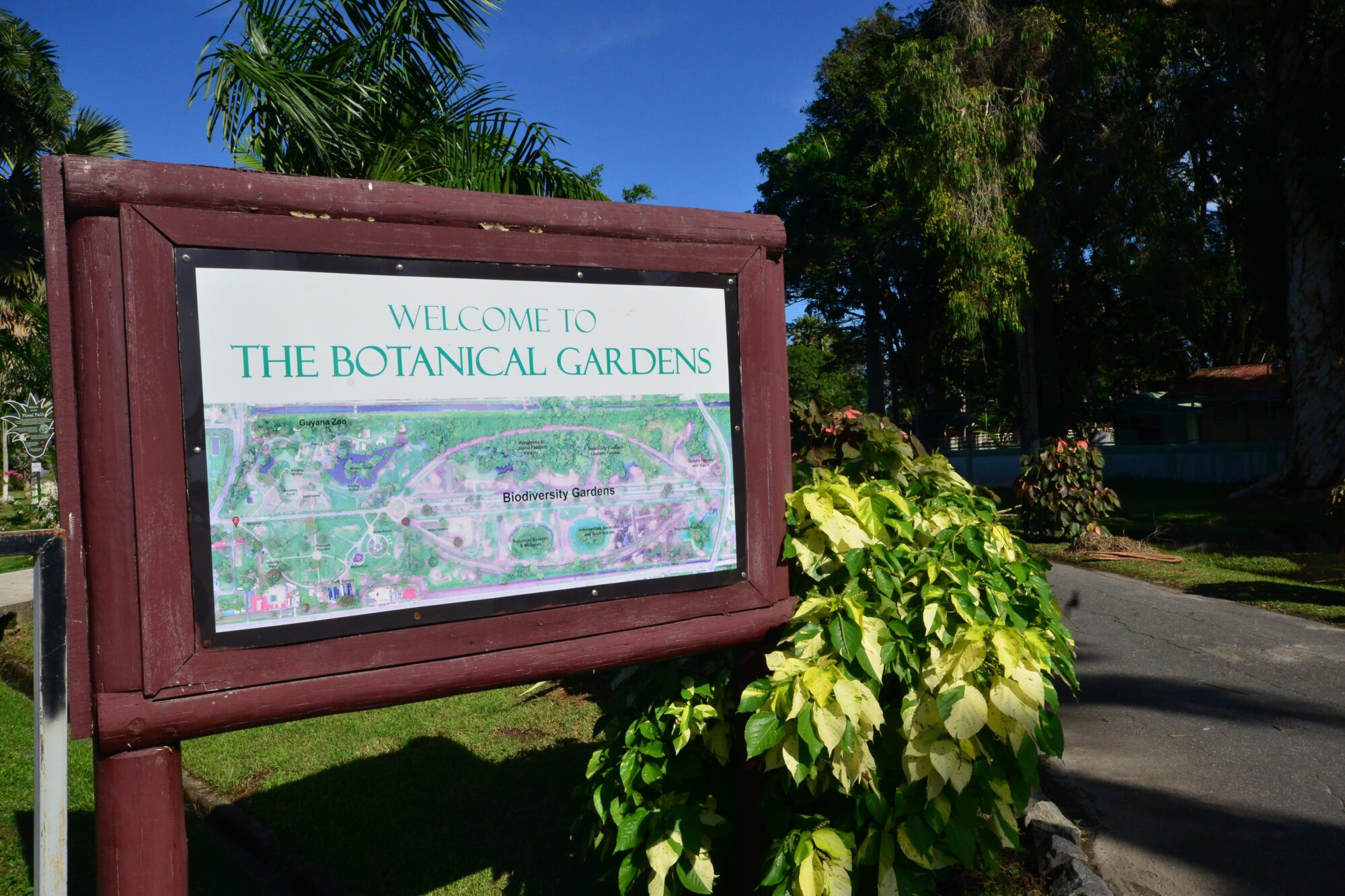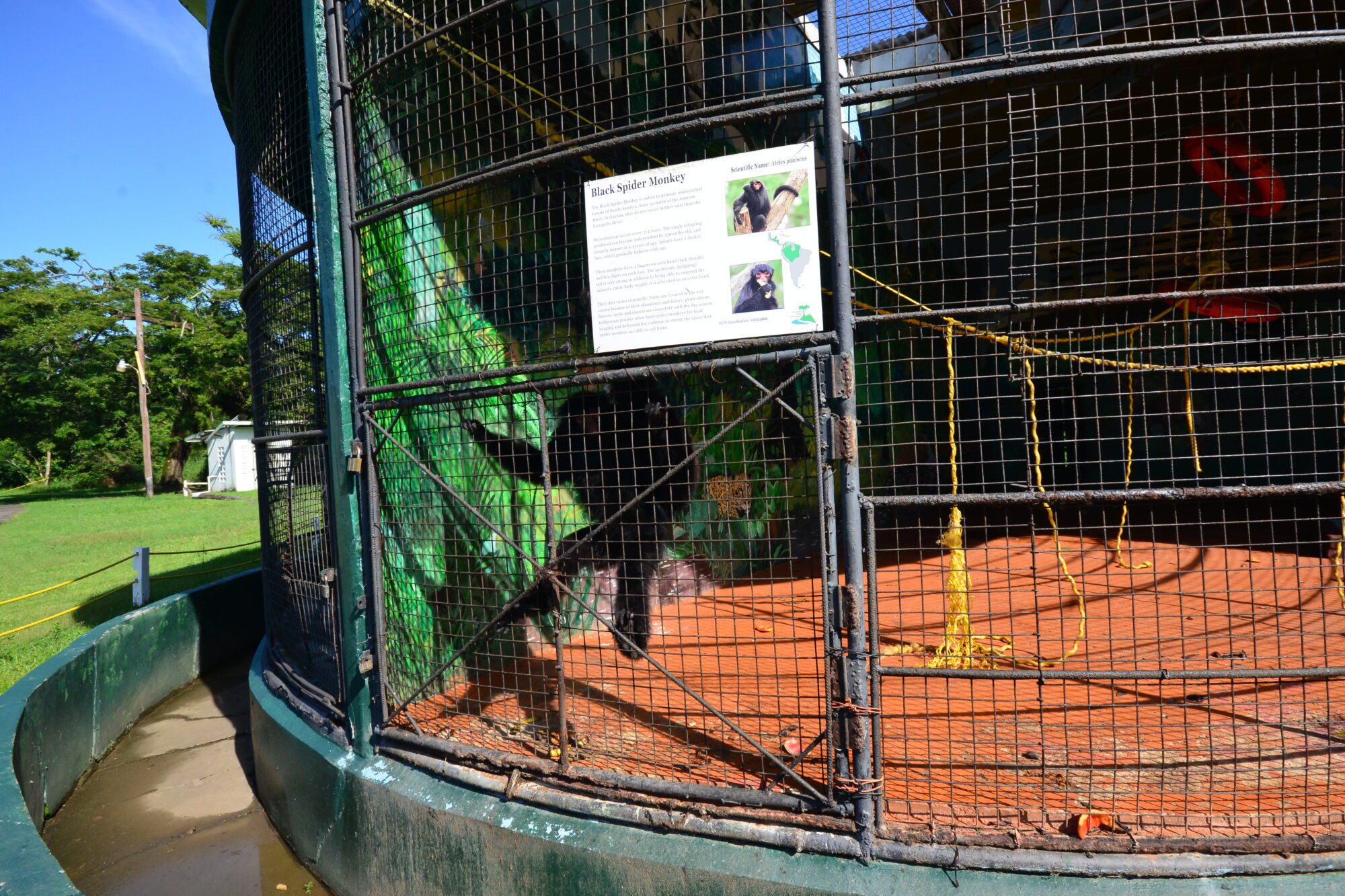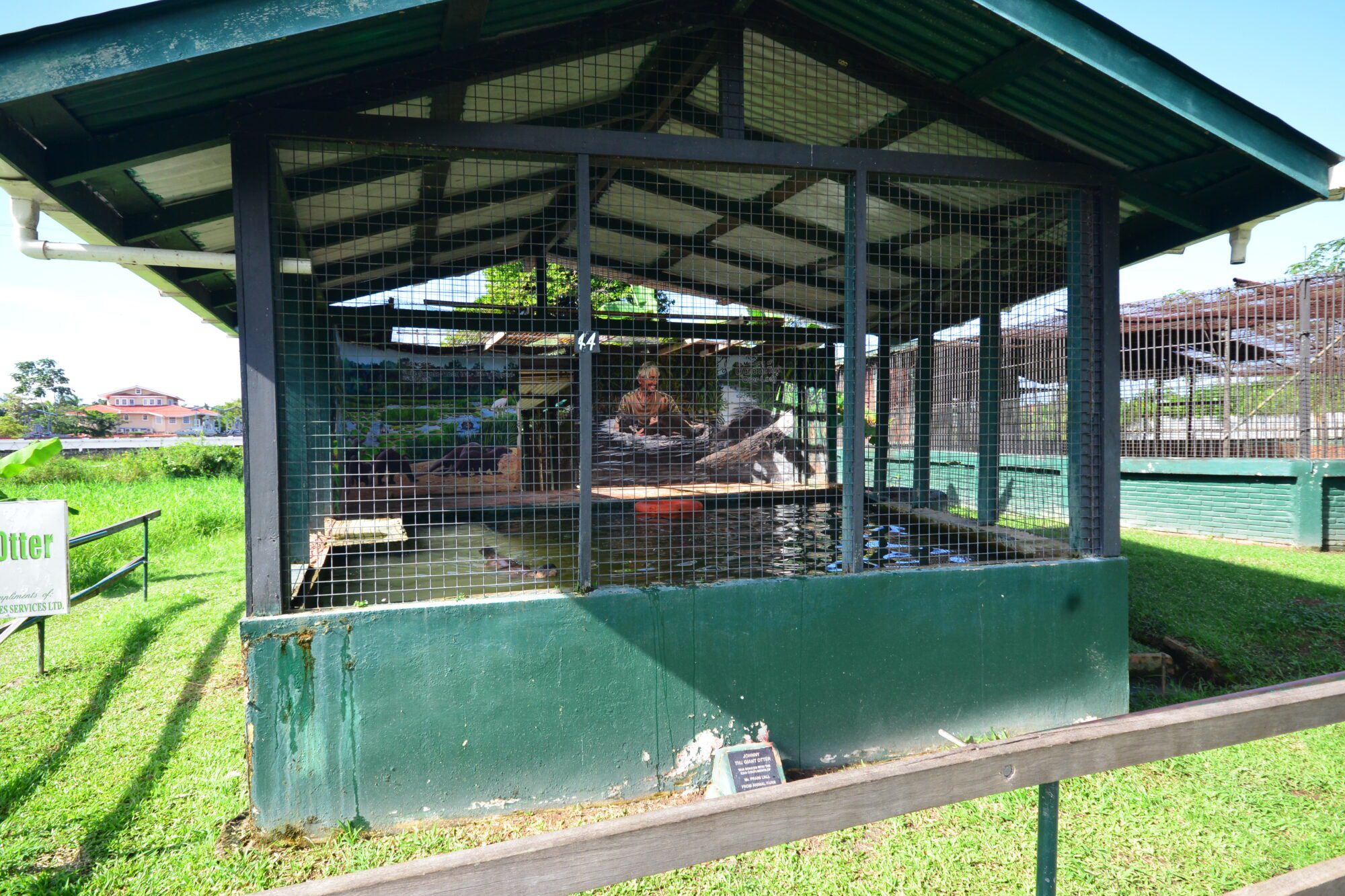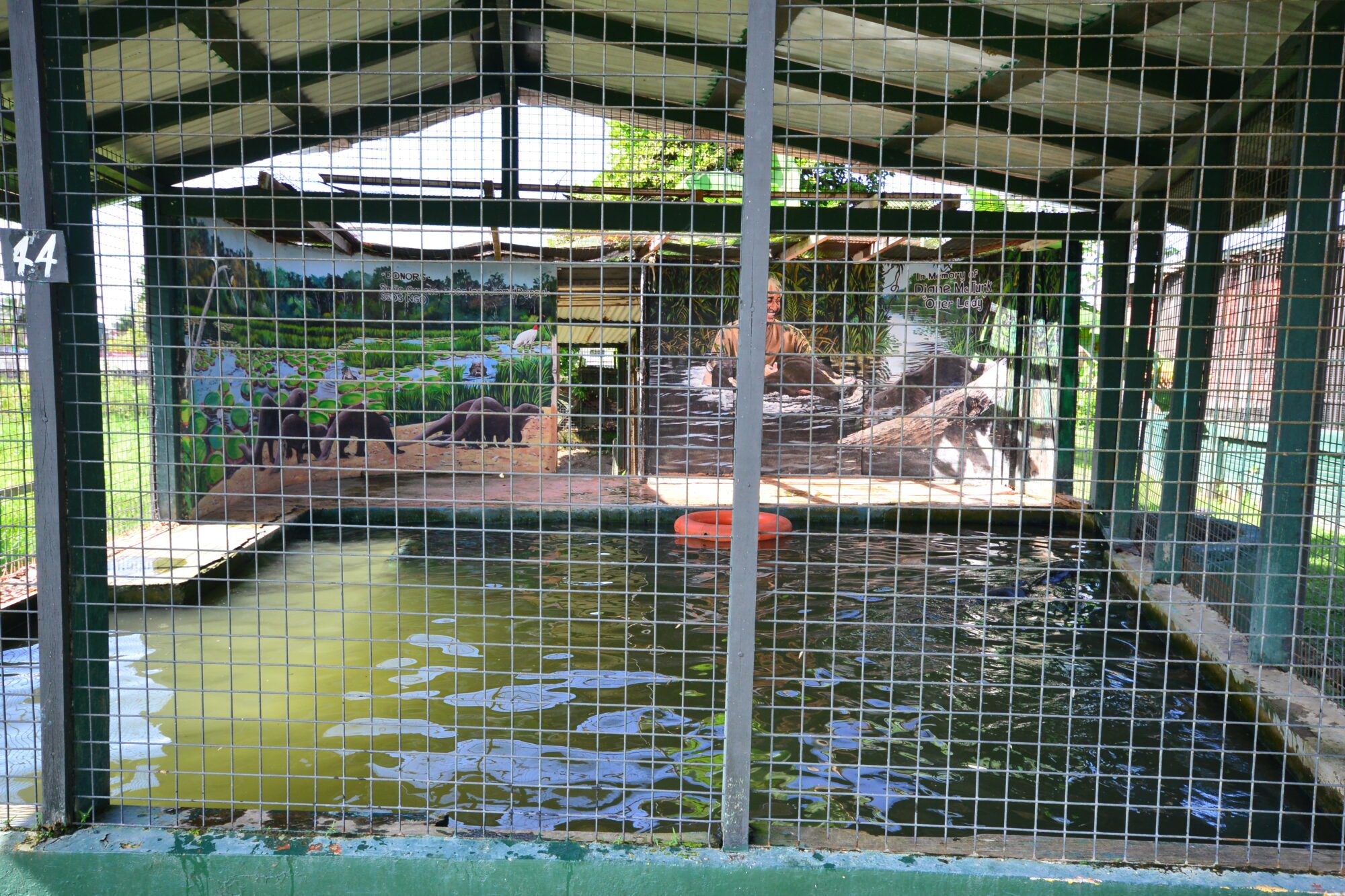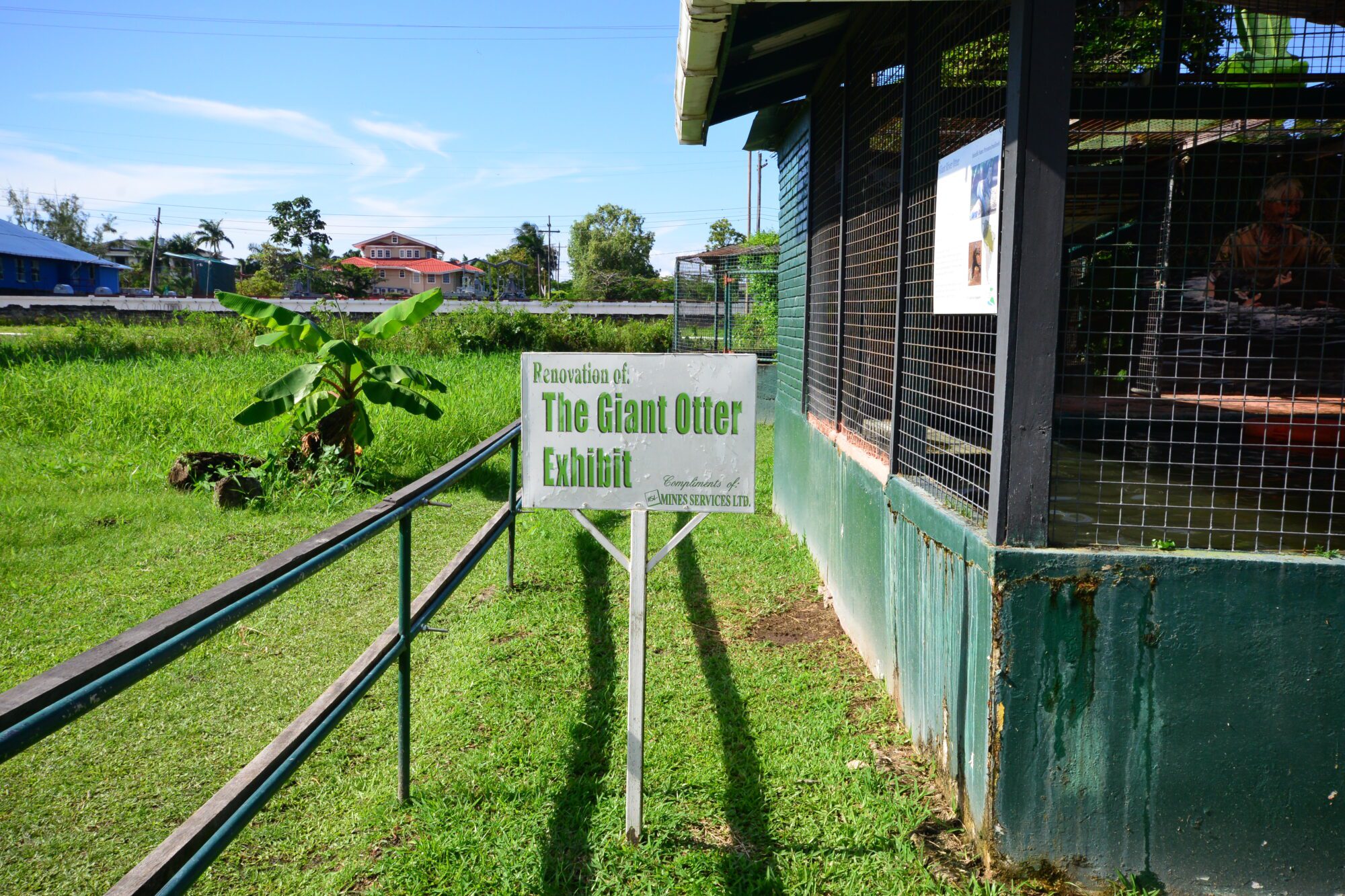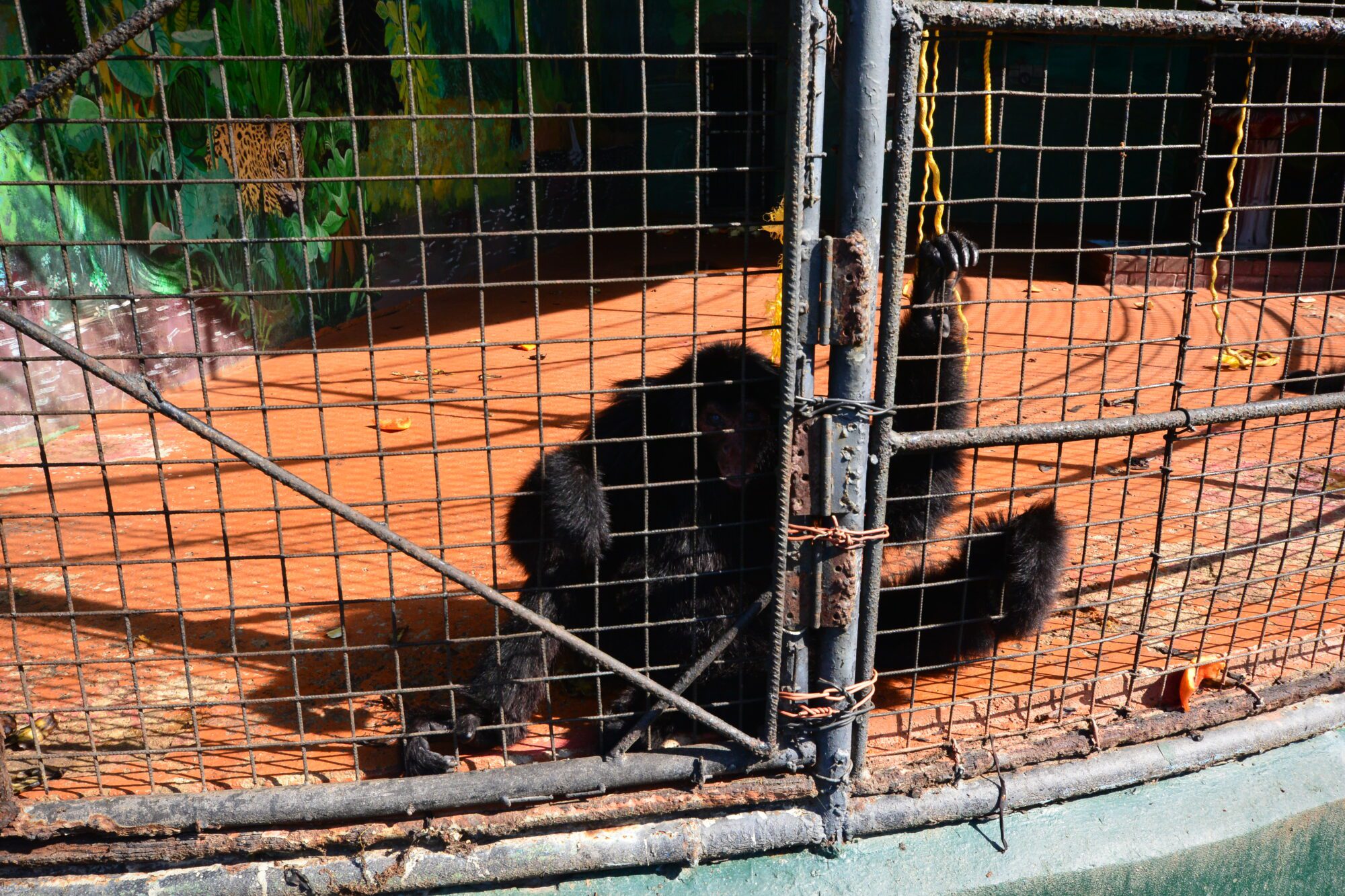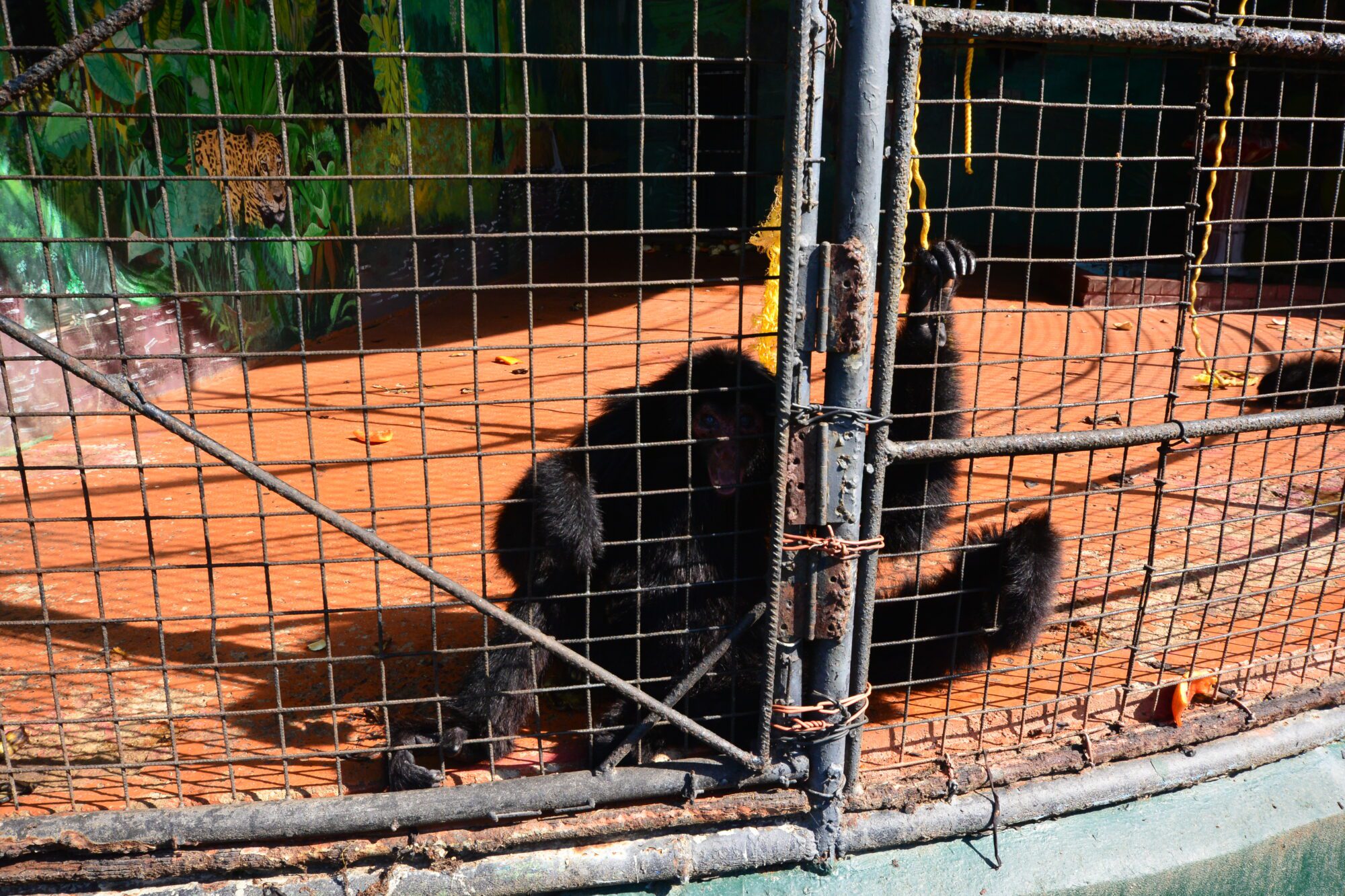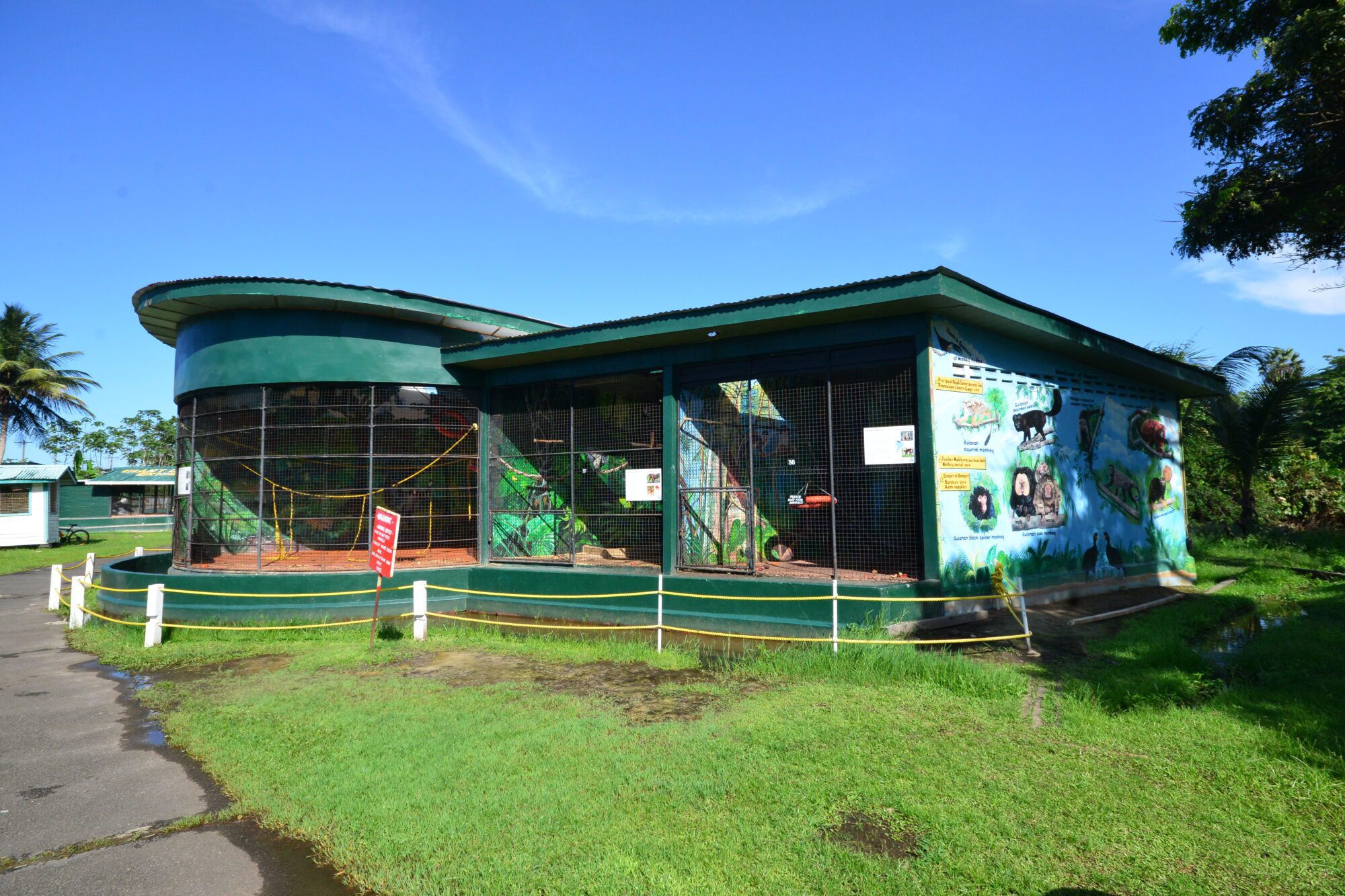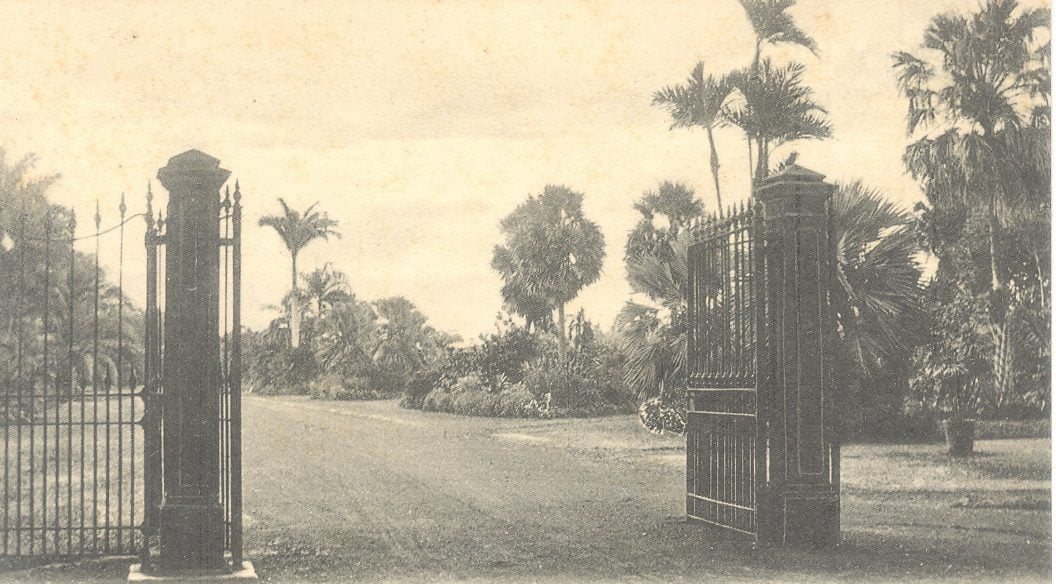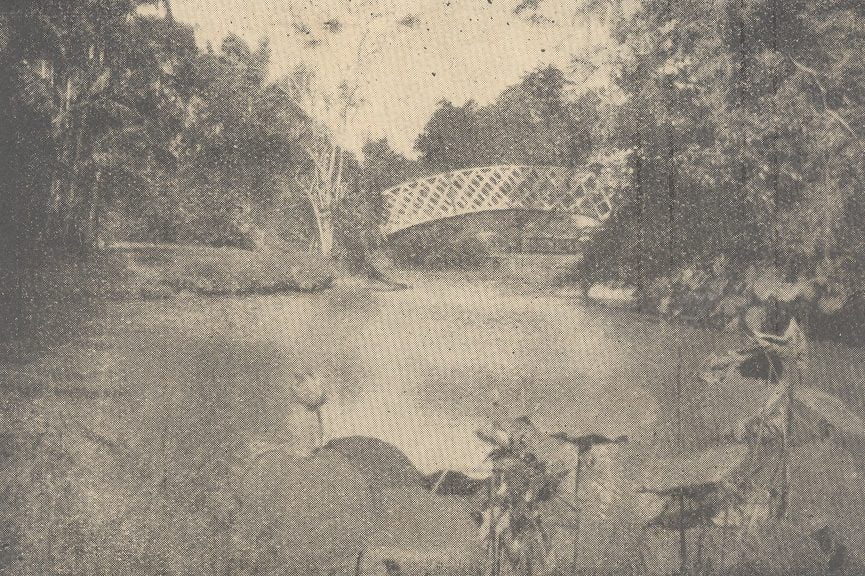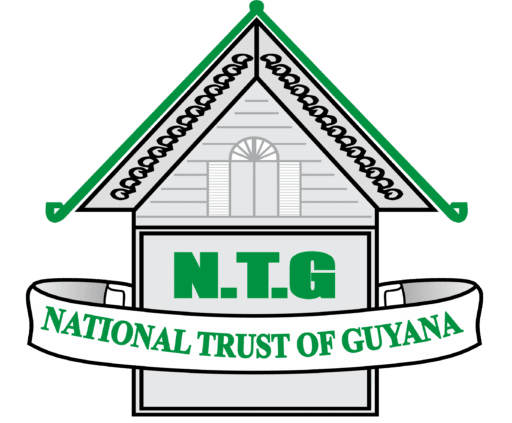Location: Vlissengen Road, Georgetown
Classification: Civil Landscape
Period/ Year Built: Established 1877
Historical Background / Description:
The Botanical Garden is located with its main entrance on Vlissengen Road, Georgetown, east of Bourda. The garden was established by the Royal Agricultural and Commercial Society (RACS) in 1877, after the society wrote the Court of Policy for the establishment of a Botanical and Horticultural Garden in Georgetown; the site allocated was an abandoned sugar estate (Plantation Vlissingen). Over the years a number of features were added, allowing the gardens to become more of a complex, thus changing its role over the years. There are various species of plants found in the garden and can be used for recreational bird watching.
Jenman’s Education Centre, located in the Botanical Gardens was previously known as the Curator’s Lodge or the Caretaker’s Hut. This single-storey timber building was designed by Mr. John Brummell in 1881, and was originally used as a meeting venue for board meetings of the gardens. Additional work was carried out on the structure throughout the years as the function of the building changed. In 2004, the structure was designated as the Jenman’s Education Centre, after Mr. George Samuel Jenman, the first Superintendent of the garden and opened as a centre spreading awareness of conservation and sustainability issues by Prime Minister Samuel Hinds. One noteworthy feature of the building is its public clock which was recently refurbished.
The Kissing Bridges are located in the compound of the Botanical Gardens Complex. At least one of the bridges is believed to have been installed by January 1885. These two curved bridges were imported into the colony in 1884, for each of the lakes in the garden. The structures allow visitors to move between the southern and northern areas of the complex. It is believed that the bridges were called kissing bridges because of the lip like (kissing) reflections they projected in the lakes they were installed over. Another theory states that they were called kissing bridges because of the tendency of young lovers to express their romantic forays on these recreational structures.
The first attempt to establish a zoological park was recorded in the 1880s by the President of the Royal Agricultural and Commercial Society and Sheriff of Demerara, Mr. Henry Kirke. A number of problems which surfaced after the departure of Mr. Kirke, prevented the facility from being established. A second attempt was made in 1946, after a Harpy Eagle was donated to the British Guiana Museum. This act saw unprecedented donations of birds, snakes and other animals. The Zoological Park was officially opened in the northern section of the Botanical Gardens on January 1, 1952, with Mr. A. A Abraham as its first superintendent. The institution now serves as a recreational and educational centre, promoting Guyana’s diverse natural heritage.
The Bandstand, located on the western plot of the Botanical Gardens, was built to commemorate the work of Mr. John Brummell, who died in December 1881; he was the Sheriff to Demerara and a member of the first instalment of Board of Directors to the Botanical Gardens. The ornate structure was built circa 1882, and is considered the oldest of the three bandstands in colonial Georgetown; it was constructed at a cost of £400.
